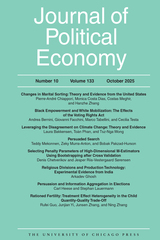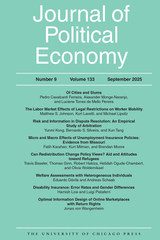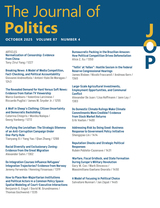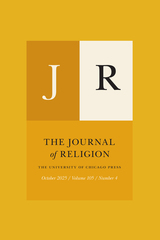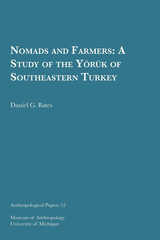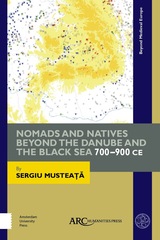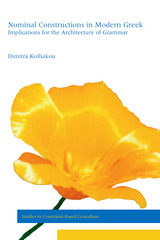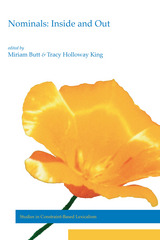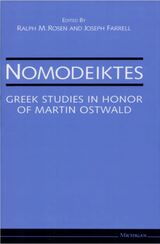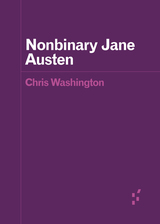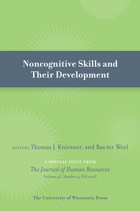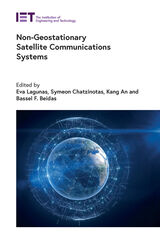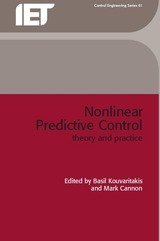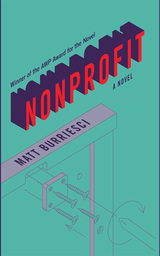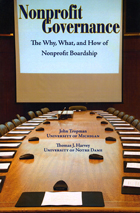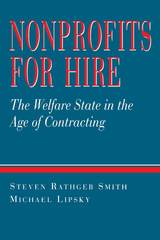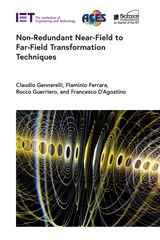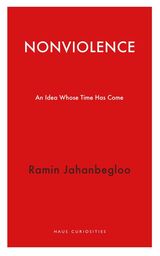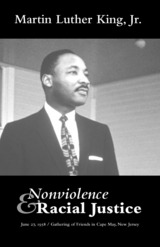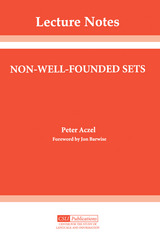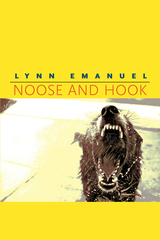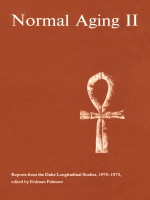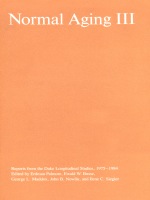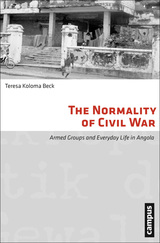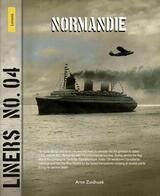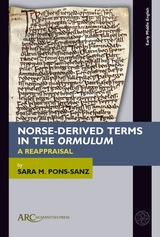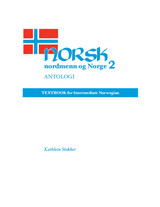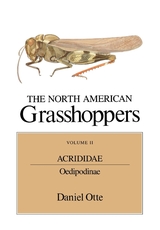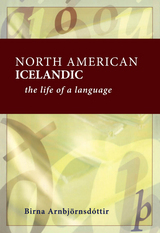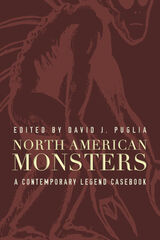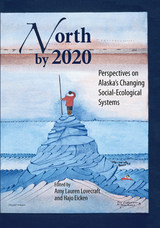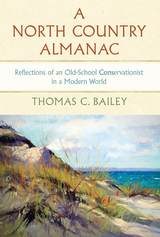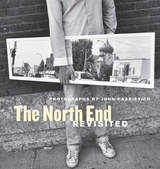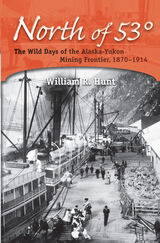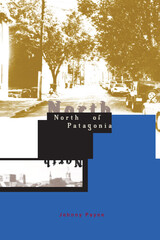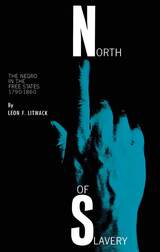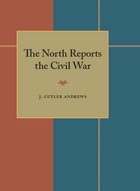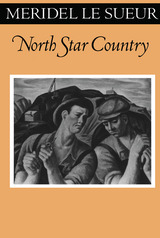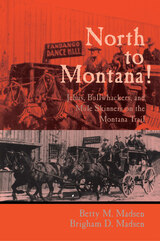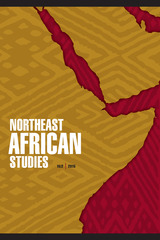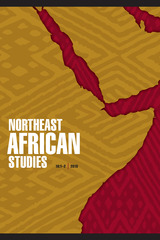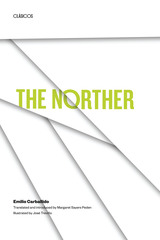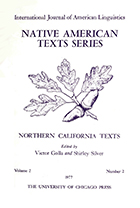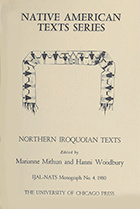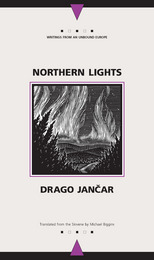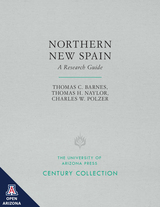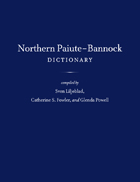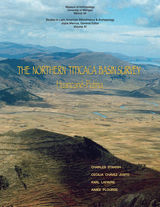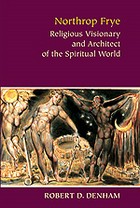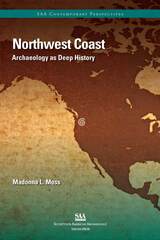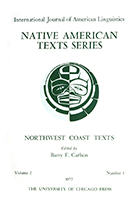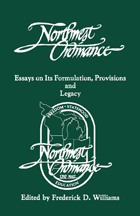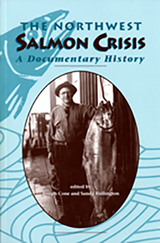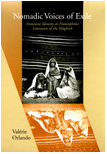 Nomadic Voices of Exile: Feminine Identity in the Francophone Literature of the Maghreb
Valérie K. Orlando
Ohio University Press, 1999 Contemporary French writing on the Maghreb—that part of Africa above the Sahara—is truly postmodern in scope, the rich product of multifaceted histories promoting the blending of two worlds, two identities, two cultures, and two languages. Nomadic Voices of Exile demonstrates how that postmodern sentiment has altered perceptions concerning Maghrebian feminine identity since the end of the French-colonial era. The authors discussed here, both those who reside in the Maghreb and those who have had to seek asylum in France, find themselves at the intersection of French and North African viewpoints, exposing a complicated world that must be negotiated and redefined. In looking at the authors whose writings extend beyond a gender-based dialogue to include such issues as race, politics, religion, and history, Valérie Orlando explores the rich and changing landscape of the literature and the culture, addresses the stereotypes that have defined the past, and navigates the space of the exiled, a space previously at the peripheries of Western discourse. Nomadic Voices of Exile will be useful to a variety of classrooms—women’s studies, Middle East studies, Francophone literature, Third World women writers—and to anyone interested in postcolonial and postmodern theory and philosophy and the history of the Maghreb through literature.
Nomads and Farmers: A Study of the Yo¨ru¨k of Southeastern Turkey
Daniel G. Bates
University of Michigan Press, 1973 The Yörük of southeastern Turkey are both farmers and nomads. Every year, some of them migrate with their flocks into the mountains for summer pasture, and then back down to the plains for the winter. Others have chosen to remain settled. Anthropologist Daniel G. Bates lived in Turkey for two years in order to study the tribe. Here he describes the many aspects of tribal life: marriage and kidnapping, descent, residence and household patterns, pasture rights, domestic production and wealth, and settlement patterns.
Nomads and Natives beyond the Danube and the Black Sea: 700–900 CE
Sergiu Musteaţă
Arc Humanities Press, 2019 This book presents a reconstruction of the socio-economic, ethnic, cultural, and political history of the Carpathian-Danubian area in the eighth and ninth centuries at a period when nomadic peoples from the east including the Bulgars, Avars, and Khazars migrated here. The work is based on a comprehensive analysis of narrative and archaeological sources including sites, artefacts, and goods in the basin bordered by the Tisza river in the west, the Danube in the south, and the Dniestr river in the east, covering swathes of modern-day Romania, Moldova, Ukraine, Serbia, and Hungary.
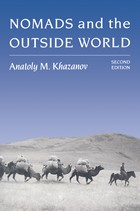 Nomads and the Outside World
Anatoly M. Khazanov; Translated by Julia Crookenden
University of Wisconsin Press, 1994 Hailed by reviewers as “majestic and magisterial,” Nomads and the Outside World was first published in English in 1984. With the author's new introduction and an updated bibliography, this classic is now available in an edition accessible to students. From reviews of the first edition: “Magisterial. . . . Combining a phenomenal erudition, a candid judgment, and a subtle sense of irony, Khazanov sets out to challenge the orthodox view of nomadic feudalism and, in the process, has produced the first comparative survey of pastoral societies that can claim to be truly comprehensive, covering their history in Eurasia, the Middle East, and Africa from the origins of pastoralism to the dawn of the modern era.”—Tim Ingold, Current Anthropology “This is the best study on pastoral nomadism that the reviewer has ever read. At last we have a major attempt to present the whole phenomenon in historical, ecological, spatial and structural perspective. . . . Superb scholarship. It is the kind of work that can only be produced as a result of years of specific research, much deep thinking . . . and a determination to reject cant.”—John C. Wilkinson, Geographical Journal “Khazanov's book on pastoral nomadism is a heroic endeavor of a kind no one has seriously attempted before. . . . Particularly valuable to western readers are the materials on the numerous peoples of Central Asia and Siberia . . . and their integration with analysis of more familiar societies such as those of North and East Africa and the Middle East. . . . The insights provided by this book are too numerous to list.”—Caroline Humphrey, Times Literary Supplement
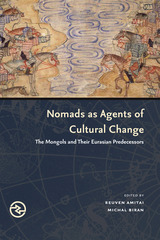 Nomads as Agents of Cultural Change: The Mongols and Their Eurasian Predecessors
edited by Reuvan Amitai and Michael Biran
University of Hawaii Press, 2014 Since the first millennium BCE, nomads of the Eurasian steppe have played a key role in world history and the development of adjacent sedentary regions, especially China, India, the Middle East, and Eastern and Central Europe. Although their more settled neighbors often saw them as an ongoing threat and imminent danger—“barbarians,” in fact—their impact on sedentary cultures was far more complex than the raiding, pillaging, and devastation with which they have long been associated in the popular imagination. The nomads were also facilitators and catalysts of social, demographic, economic, and cultural change, and nomadic culture had a significant influence on that of sedentary Eurasian civilizations, especially in cases when the nomads conquered and ruled over them. Not simply passive conveyors of ideas, beliefs, technologies, and physical artifacts, nomads were frequently active contributors to the process of cultural exchange and change. Their active choices and initiatives helped set the cultural and intellectual agenda of the lands they ruled and beyond.
This volume brings together a distinguished group of scholars from different disciplines and cultural specializations to explore how nomads played the role of “agents of cultural change.” The beginning chapters examine this phenomenon in both east and west Asia in ancient and early medieval times, while the bulk of the book is devoted to the far flung Mongol empire of the thirteenth and fourteenth centuries. This comparative approach, encompassing both a lengthy time span and a vast region, enables a clearer understanding of the key role that Eurasian pastoral nomads played in the history of the Old World. It conveys a sense of the complex and engaging cultural dynamic that existed between nomads and their agricultural and urban neighbors, and highlights the non-military impact of nomadic culture on Eurasian history.
Nomads As Agents of Cultural Change illuminates and complicates nomadic roles as active promoters of cultural exchange within a vast and varied region. It makes available important original scholarship on the new turn in the study of the Mongol empire and on relations between the nomadic and sedentary worlds.
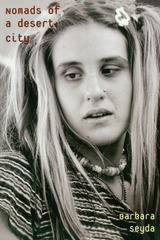 Nomads of a Desert City: Personal Stories from Citizens of the Street
Barbara Seyda
University of Arizona Press, 2001 You see them as faceless shapes on the median or in city parks. You recognize them by their cardboard signs, their bags of aluminum cans, or their weathered skin. But you do not know them. In Nomads of a Desert City Barbara Seyda meets the gazes of our homeless neighbors and, with an open heart and the eye of an accomplished photographer, uncovers their compelling stories of life on the edge. Byrdy is a teenager from Alaska who left a violent husband and misses the young daughter her mother now cares for. Her eyes show a wisdom that belies her youth. Samuel is 95 and collects cans for cash. His face shows a lifetime of living outside while his eyes hint at the countless stories he could tell. Lamanda worked as an accountant before an act of desperation landed her in prison. Now she struggles to raise the seven children of a woman she met there. Dorothy—whose earliest memories are of physical and sexual abuse—lives in a shelter, paycheck to paycheck, reciting affirmations so she may continue “to grace the world with my presence.” They live on the streets or in shelters. They are women and men, young and old, Native or Anglo or Black or Hispanic. Their faces reflect the forces that have shaped their lives: alcoholism, poverty, racism, mental illness, and abuse. But like desert survivors, they draw strength from some hidden reservoir. Few recent studies on homelessness offer such a revealing collection of oral history narratives and compelling portraits. Thirteen homeless women and men open a rare window to enrich our understanding of the complex personal struggles and triumphs of their lives. Nomads of a Desert City sheds a glaring light on the shadow side of the American Dream—and takes us to the crossroads of despair and hope where the human spirit survives.
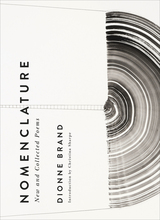 Nomenclature: New and Collected Poems
Dionne Brand
Duke University Press, 2022 Spanning almost four decades, Dionne Brand’s poetry has given rise to whole new grammars and vocabularies. With a profound alertness that is attuned to this world and open to some other, possibly future, time and place, Brand’s ongoing labors of witness and imagination speak directly to where and how we live and reach beyond those worlds, their enclosures, and their violences. Nomenclature: New and Collected Poems begins with a new long poem, the titular Nomenclature for the Time Being, in which Dionne Brand’s diaspora consciousness dismantles our quotidian disasters. In addition to this searing new work, Nomenclature collects eight volumes of Brand’s poetry published between 1982 and 2010 and includes a critical introduction by the literary scholar and theorist Christina Sharpe. Nomenclature: New and Collected Poems features the searching and centering cantos of Primitive Offensive; the sharp musical conversations of Winter Epigrams and Epigrams to Ernesto Cardenal in Defense of Claudia; and the documentary losses of revolutions in Chronicles of the Hostile Sun, in which “The street was empty/with all of us standing there.” No Language Is Neutral reads language, coloniality, and sexuality as a nexus. Land to Light On writes intimacies and disaffections with nation, while in thirsty a cold-eyed flâneur surveys the workings of the city. In Inventory, written during the Gulf Wars, the poet is “the wars’ last and late night witness,” her job is not to soothe but to “revise and revise this bristling list/hourly.” Ossuaries’ futurist speaker rounds out the collection and threads multiple temporal worlds—past, present, and future. This masterwork displays Dionne Brand’s ongoing body of thought—trenchant, lyrical, absonant, discordant, and meaning-making. Nomenclature: New and Collected Poems is classic and living, a record of one of the great writers of our age.
Nominal Constructions in Modern Greek: Implications for the Architecture of Grammar
Dimitra Kolliakou
CSLI, 2003 The study of nominals—lingustic expressions whose core constituent is characteristically a noun—is of great interest to both theoretical and computational linguistics. Their internal structure, meaning, and use address intriguing issues of semantics and pragmatics that are intrinsically related to syntactic matters. Dimitra Kolliakou provides a detailed description and formal analysis of a wide range of intricate linguistic phenomena concerning nominal constructions in Modern Greek, while exploring the implications of those phenomena for the architecture of grammar both at a theoretical and computational level. In particular, this book supports the integration of semantic and contextual information in the grammar, formalizing it within the multi-dimensional framework of Head-Driven Phrase Structure Grammar.
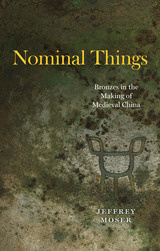 Nominal Things: Bronzes in the Making of Medieval China
Jeffrey Moser
University of Chicago Press, 2023 How the medieval study of ancient bronzes influenced the production of knowledge and the making of things in East Asia.
This book opens in eleventh-century China, where scholars were the first in world history to systematically illustrate and document ancient artifacts. As Jeffrey Moser argues, the visual, technical, and conceptual mechanisms they developed to record these objects laid the foundations for methods of visualizing knowledge that scholars throughout early modern East Asia would use to make sense of the world around them.
Of the artifacts these scholars studied, the most celebrated were bronze ritual vessels that had been cast nearly two thousand years earlier. While working to make sense of the relationship between the bronzes’ complex shapes and their inscribed glyphs, they came to realize that the objects were “nominal things”—objects inscribed with names that identified their own categories and uses. Eleventh-century scholars knew the meaning of these glyphs from hallowed Confucian writings that had been passed down through centuries, but they found shocking disconnects between the names and the bronzes on which they were inscribed. Nominal Things traces the process by which a distinctive system of empiricism was nurtured by discrepancies between the complex materiality of the bronzes and their inscriptions. By revealing the connections between the new empiricism and older ways of knowing, the book explains how scholars refashioned the words of the Confucian classics into material reality.
Nominals: Inside and Out
Edited by Miriam Butt and Tracy Holloway King
CSLI, 2003 Since the early 1970s, the proper treatment and nominals and nominalization has been fundamental to syntactic theory. And yet a satisfactory approach continues to prove elusive. Working within the framework of Lexical-Functional Grammar, this book discusses the precise reasons why pronouns show particular distributions, why nominalized verbs inherit the predicational power of the verbs they're derived from, and what kind of syntactic category derived nominals should be assigned. Recent developments in LFG make it possible to examine discourse clitics and case markers as well, meaning this collection can address both "classic" nominal issues and novel new perspectives.
Nomodeiktes: Greek Studies in Honor of Martin Ostwald
Ralph M. Rosen and Joseph Farrell, Editors
University of Michigan Press, 1994 Fifth-century Athens has inspired generations of students and scholars. Its citizens’ profound discoveries in literature, philosophy, and politics – to name but a few areas – have shaped the thinking of much of Western thought and have provided many of the joys and the tribulations that touch our daily lives.
Nomodeiktes: Greek Studies in Honor of Martin Ostwald offers fascinating discussions of many of these areas, and it helps illuminate ways in which modern perceptions of this complex period are right and are wrong. Important observations are made on Greek historians and historiography, on politics and society, and on Greek philosophy and literature. The analyses of these major areas of investigation will be very useful for all interested in this centrally important period and for those who know the lure of that vivid and compelling city, Athens.
 Nonadaptive Selection: An Evolutionary Source of Ecological Laws
John Damuth and Lev R. Ginzburg
University of Chicago Press, 2025 The first comprehensive explanation of a widely applicable but underappreciated mechanism of evolution operating at higher levels of organization than the individual.
In this important treatise, ecologists and evolutionary biologists John Damuth and Lev R. Ginzburg identify a specific evolutionary process in biology, which they call nonadaptive selection. The idea is simple, but the implications are profound. Nonadaptive selection, as they use the term, is selection among biological entities (as is natural selection) but is based on the fitness effects of structural properties intrinsic to the entities under selection rather than on interactions between traits and a local shared environment. In other words, features of systems that evolve by nonadaptive selection do not adapt to local environmental conditions; rather, this selective process increases the long-term stability of the focal systems independent of local conditions.
Nonadaptive selection may be of particular value in explaining broad, persistent patterns in multispecies biological units where adaptive evolution may be weak or poorly defined. Examples include Damuth’s Law, the equivalence of energy use among animal species across a wide range of body sizes; the ratio-dependent, or Arditi-Ginzburg, predation conjecture; the consistency of allometric scaling powers; the shortness of trophic chains; and the prevalence of certain types of three-species trophic structures across ecosystems. Damuth and Ginzburg see nonadaptive selection underlying patterns of ecological allometries, community structure, and species interactions, with some implications for macroevolution. Moreover, they find a surprising relationship between these nonadaptive processes and biological laws. They do not advocate the reorientation of any existing research programs but present nonadaptive selection as an additional conceptual framework that may be useful to add to ecology and evolution.
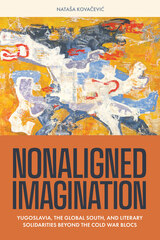 Nonaligned Imagination: Yugoslavia, the Global South, and Literary Solidarities Beyond the Cold War Blocs
Nataša Kovacevic
Northwestern University Press, 2026 Recovering the literary and intellectual history of anticolonial collaborations
Preoccupied with developing a multiethnic, postcolonial culture and seeking an alternative to Cold War–bloc politics, socialist Yugoslavia turned to the decolonizing countries of the Global South. It forged political, economic, and cultural links with postcolonial states and anticolonial liberation movements through the Non-Aligned Movement, of which it was a founding member in 1961. NAM spanned political and economic systems, uniting members in opposition to superpower politics and around policies of nuclear disarmament, active peaceful coexistence, anticolonialism, and respect for national sovereignty.
Nataša Kovačević reconstructs the forgotten literary and cultural history of this movement, tracing the development of new networks of intellectual engagement and cultural exchange between writers, journalists, and scholars who connected postwar Yugoslavia with 1950s India, 1960s Algeria and Guinea, 1970s Vietnam, and beyond. Nonaligned narratives attempted to reconfigure the understanding of the globe outside Eurocentric tropes and hegemonic political stratifications and to articulate Yugoslavs’ own internationalist sensibility. With Cold War–era rhetoric intensifying again in the twenty-first century, Nonaligned Imagination assumes the urgent task of unearthing a history of engaged writing and cultural diplomacy that imagined alternatives to superpower conflicts and a bipolar vision of the world.
Nonbinary Jane Austen
Chris Washington
University of Minnesota Press, 2025 A bold and provocative analysis of Jane Austen as an early gender abolitionist
Chris Washington reads Jane Austen differently than we have classically understood her: rather than the doyen of the cisheteronormative marriage plot, the author theorizes how Austen envisions a nonbinary future that traverses the two-sex model of gender that we can supposedly see solidifying in the eighteenth century. Instead, Washington argues, Austen leverages the generic restraints of the novel to write a disguised autofiction in which Austen imagines herself as transgender and works to abolish gender exclusivity altogether. In doing so, she establishes a politics that ushers in a future beyond the cisheteronormative binary, one built on plurality and possibility.
Noncognitive Skills and Their Development: Special Issue of Journal of Human Resources 43:4 (Fall 2008)
Edited by Thomas J. Kniesner and Bas ter Weel
University of Wisconsin Press, 2010 These articles include recent research on ways to incorporate the noncognitive side of ability in economic theory and to empirically assess and explain its role in labor market and behavioral outcomes. Contributions investigate the extent to which assignment of workers is determined by traditional cognitive variables and by personality traits. Also presented in this collection is research on the role of noncognitive skills in explaining the labor market position of underrepresented groups and research that integrates the economic and psychological theory and evidence on noncognitive skills.
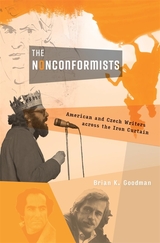 The Nonconformists: American and Czech Writers across the Iron Curtain
Brian K. Goodman
Harvard University Press, 2023 How risky encounters between American and Czech writers behind the Iron Curtain shaped the art and politics of the Cold War and helped define an era of dissent.
“In some indescribable way, we are each other’s continuation,” Arthur Miller wrote of the imprisoned Czech playwright Václav Havel. After a Soviet-led invasion ended the Prague Spring, many US-based writers experienced a similar shock of solidarity. Brian Goodman examines the surprising and consequential connections between American and Czech literary cultures during the Cold War—connections that influenced art and politics on both sides of the Iron Curtain.
American writers had long been attracted to Prague, a city they associated with the spectral figure of Franz Kafka. Goodman reconstructs the Czech journeys of Allen Ginsberg, Philip Roth, and John Updike, as well as their friendships with nonconformists like Havel, Josef Škvorecký, Ivan Klíma, and Milan Kundera. Czechoslovakia, meanwhile, was home to a literary counterculture shaped by years of engagement with American sources, from Moby-Dick and the Beats to Dixieland jazz and rock ’n’ roll. Czechs eagerly followed cultural trends in the United States, creatively appropriating works by authors like Langston Hughes and Ernest Hemingway, sometimes at considerable risk to themselves.
The Nonconformists tells the story of a group of writers who crossed boundaries of language and politics, rearranging them in the process. The transnational circulation of literature played an important role in the formation of new subcultures and reading publics, reshaping political imaginations and transforming the city of Kafka into a global capital of dissent. From the postwar dream of a “Czechoslovak road to socialism” to the neoconservative embrace of Eastern bloc dissidence on the eve of the Velvet Revolution, history was changed by a collision of literary cultures.
The Nonconformists: Culture, Politics, and Nationalism in a Serbian Intellectual Circle, 1944-1991
Nick Miller
Central European University Press, 2007 Serbia's national movement of the 1980s and 1990s, the author suggests, was not the product of an ancient, immutable, and aggressive Serbian national identity; nor was it an artificial creation of powerful political actors looking to capitalize on its mobilizing power. Miller argues that cultural processes are too often ignored in favor of political ones; that Serbian intellectuals did work within a historical context, but that they were not slaves to the past. His subjects are Dobrica Cosic (a novelist), Mica Popovic (a painter) and Borislav Mihajlovic Mihiz (a literary critic). These three influential Serbian intellectuals concluded by the late 1960s that communism had failed the Serbian people; together, they helped forge a new Serbian identity that fused older cultural imagery with modern conditions.
Non-Construction: An Architectural Gesture in Artistic Research
Ronny Hardliz
Diaphanes, 2021 By defining a concept of architecture based on the tactile experience and not on construction, this book allows us to explore both discursive practice as the study of architectural art and the integration of architectural art as a discourse of spatial practice. In order to take on this new lens, Non-Construction utilizes a cinematographic documentary image strategy that engages with a critical spatial exploration of current entanglements of art and research at the crossroads of art, theory, and architecture. A challenge to visual conventions, this book offers conceptual and aesthetic insights into spiraling and voiding sensual experiences, with implications for the decolonization of the documentary and cinematographic reaching far beyond architecture.
 Non-Design: Architecture, Liberalism, and the Market
Anthony Fontenot
University of Chicago Press, 2021 Anthony Fontenot’s staggeringly ambitious book uncovers the surprisingly libertarian heart of the most influential British and American architectural and urbanist discourses of the postwar period, expressed as a critique of central design and a support of spontaneous order. Non-Design illuminates the unexpected philosophical common ground between enemies of state support, most prominently the economist Friedrich Hayek, and numerous notable postwar architects and urbanists like Robert Venturi, Denise Scott Brown, Reyner Banham, and Jane Jacobs. These thinkers espoused a distinctive concept of "non-design,"characterized by a rejection of conscious design and an embrace of various phenomenon that emerge without intention or deliberate human guidance. This diffuse and complex body of theories discarded many of the cultural presuppositions of the time, shunning the traditions of modern design in favor of the wisdom, freedom, and self-organizing capacity of the market. Fontenot reveals the little-known commonalities between the aesthetic deregulation sought by ostensibly liberal thinkers and Hayek’s more controversial conception of state power, detailing what this unexplored affinity means for our conceptions of political liberalism. Non-Design thoroughly recasts conventional views of postwar architecture and urbanism, as well as liberal and libertarian philosophies.
 None Like Us: Blackness, Belonging, Aesthetic Life
Stephen Best
Duke University Press, 2018 It passes for an unassailable truth that the slave past provides an explanatory prism for understanding the black political present. In None Like Us Stephen Best reappraises what he calls “melancholy historicism”—a kind of crime scene investigation in which the forensic imagination is directed toward the recovery of a “we” at the point of “our” violent origin. Best argues that there is and can be no “we” following from such a time and place, that black identity is constituted in and through negation, taking inspiration from David Walker’s prayer that “none like us may ever live again until time shall be no more.” Best draws out the connections between a sense of impossible black sociality and strains of negativity that have operated under the sign of queer. In None Like Us the art of El Anatsui and Mark Bradford, the literature of Toni Morrison and Gwendolyn Brooks, even rumors in the archive, evidence an apocalyptic aesthetics, or self-eclipse, which opens the circuits between past and present and thus charts a queer future for black study.
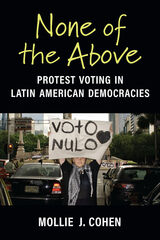 None of the Above: Protest Voting in Latin American Democracies
Mollie J. Cohen
University of Michigan Press, 2024 Around the world each year, millions of citizens turn out to vote but leave their ballots empty or spoil them. Increasingly, campaigns have emerged that promote “invalid” votes like these. Why do citizens choose to cast blank and spoiled votes? And how do campaigns mobilizing the invalid vote influence this decision? None of the Above answers these questions using evidence from presidential and gubernatorial elections in eighteen Latin American democracies. Author Mollie J. Cohen draws on a broad range of methods and sources, incorporating data from electoral management bodies, nationally representative surveys, survey experiments, focus groups, semi-structured interviews, and news sources.
Contrary to received wisdom, this book shows that most citizens cast blank or spoiled votes in presidential elections on purpose. By participating in invalid vote campaigns, citizens can voice their concerns about low-quality candidates while also expressing a preference for high-quality democracy. Campaigns promoting blank and spoiled votes come about more often, and succeed at higher rates, when incumbent politicians undermine the quality of elections. Surprisingly, invalid vote campaigns can shore up the quality of democracy in the short term. None of the Above shows that swings in blank and spoiled vote rates can serve as a warning about the trajectory of a country’s democracy.
 None of Your Damn Business: Privacy in the United States from the Gilded Age to the Digital Age
Lawrence Cappello
University of Chicago Press, 2019 Capello investigates why we’ve been so blithe about giving up our privacy and all the opportunities we’ve had along the way to rein it in.
Every day, Americans surrender their private information to entities claiming to have their best interests in mind. This trade-off has long been taken for granted, but the extent of its nefariousness has recently become much clearer. As None of Your Damn Business reveals, the problem is not so much that data will be used in ways we don’t want, but rather how willing we have been to have our information used, abused, and sold right back to us. In this startling book, Lawrence Cappello targets moments from the past 130 years of US history when privacy was central to battles over journalistic freedom, national security, surveillance, big data, and reproductive rights. As he makes dismayingly clear, Americans have had numerous opportunities to protect the public good while simultaneously safeguarding our information, and we’ve squandered them every time. None of Your Damn Business is a rich and provocative survey of an alarming topic that grows only more relevant with each fresh outrage of trust betrayed.
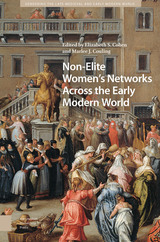 Non-Elite Women's Networks Across the Early Modern World
Elizabeth Storr Cohen
Amsterdam University Press, 2023 Non-elite or marginalized early modern women—among them the poor, migrants, members of religious or ethnic minorities, abused or abandoned wives, servants, and sex workers—have seldom left records of their experiences. Drawing on a variety of sources, including trial records, administrative paperwork, letters, pamphlets, hagiography, and picaresque literature, this volume explores how, as social agents, these doubly invisible women built and used networks and informal alliances to supplement the usual structures of family and community that often let them down. Ten essays, ranging widely in geography from the eastern Mediterranean to colonial Spanish America and in time from the sixteenth to the eighteenth centuries, show how flexible, sometimes ad hoc relationships could provide crucial practical and emotional support for women who faced problems of livelihood, reputation, displacement, and violence.
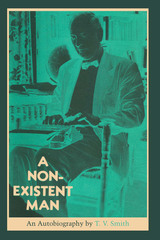 A Non-Existent Man: An Autobiography
By T. V. Smith
University of Texas Press, 1962 Born in a log cabin on a Texas prairie in 1890, T. V. Smith—distinguished philosopher, teacher, politician, lecturer, and editor—left an imprint on the twentieth century seldom equaled by a university professor. Simply listing his activities reveals the versatility of this extraordinary man. He held posts as professor at Texas Christian University and the University of Texas, as professor and dean at the University of Chicago for a quarter-century, and as professor of citizenship and philosophy at Syracuse University for eight years. An independent Democrat, he spent four years in the Illinois State Senate before being elected to the U.S. House of Representatives as congressman at large from Illinois. He served as private (“no class”) in World War I; he held the rank of colonel in World War II and was a military governor with the Allied Control Commission in Sicily and Italy, was Director of Democratization for Select German Prisoners of War, and was a member of the U.S. Education Mission to Germany and Japan. As a founder of the Chicago Round Table of the Air and one of its most frequent participants, he became one of radio’s best-known personalities. He was editor of the International Journal of Ethics, and his democratic wisdom has found expression in more than twenty books and in hundreds of articles. In open forum he often tilted with such opponents as Robert A. Taft, Clarence Darrow, Harry Gideonse, Will Durant, and Norman Thomas. He was an orator of national renown. He held seven degrees from as many institutions. A maverick, intellectual as well as political, Smith never feared to strike off the shackles of conventionality and dogma when they hampered his search for truth, and his stout conscience challenged all comers. Long involvement with people of many ideas, backgrounds, and interests so permeated his thinking that his message was to and for all of America. He spoke of actual situations that affect actual human beings, illuminating his impressions with sensitivity and understanding. T. V. Smith’s story has heart and vision. It manifests, in approximately equal portions, poetic imagination, resourcefulness, limitless energy, public service, and pride. Early in life Smith set his heart not on accumulating material possessions but on discovering how men and women of every station and degree can have the blessing of a sane and reasonable life in an increasingly complex society. What he says here is witty and wise, “nuggets mined from the hills of life . . . the living stuff of biography, the inner essence which transcends the world of fact.” In such a record lies democracy’s best boast.
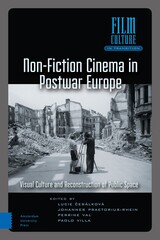 Non-Fiction Cinema in Postwar Europe: Visual Culture and the Reconstruction of Public Space
Lucie Cesalkova
Amsterdam University Press, 2024 After WWII, cinema was everywhere: in movie theatres, public squares, factories, schools, trial courts, trains, museums, and political meetings. Seen today, documentaries and newsreels, as well as the amateur production, show the kaleidoscopic portrait of a changing Europe. How did these cinematic images contribute to shaping the new societies emerging from the ashes of war, both in the Western and in the Eastern bloc? Why were they so crucial in framing and regulating new places and practices, political systems, economic dynamics, educational frameworks, and memory communities? This edited volume explores the multiple ways nonfiction cinema reconfigured public spaces, collective participation, democratisation, and governmentality between 1944 and 1956. Looking back at it through a transnational perspective and the critical category of spatiality, nonfiction cinema appears in a new light: simultaneously as a specifically situated and as a highly mobile medium, it was a fundamental agent in reshaping Europe’s shared identity and culture in a defining decade.
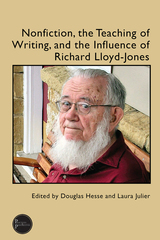 Nonfiction, the Teaching of Writing, and the Influence of Richard Lloyd-Jones
Doug Hesse
University Press of Colorado, 2023 This edited collection explores an important development in the teaching of writing over the last half century: the rise of creative nonfiction, a vast terrain of genres from memoir and personal essays to nature and travel writing to literary journalism, works grounded in true experiences but inflected by a creative sensibility. Celebrating the influence of Richard Lloyd-Jones—long-time chair of the English Department at the University of Iowa, president of NCTE, chair of CCCC, and the winner of CCCC’s first Exemplar Award—the essays in this collection reveal a person whose efforts, largely behind the scenes, were instrumental in the growth of creative nonfiction. Variously historical and reflective, philosophical and political, the essays offer an expansive vision for teaching writing, one shaped by teachers’ experiences as writers themselves, and all embodying in style and voice a focus on the full arts of written language.
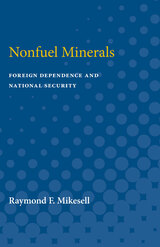 Nonfuel Minerals: Foreign Dependence and National Security
Raymond F. Mikesell
University of Michigan Press, 1987 In an uncertain international economic environment, the United States is increasingly dependent upon foreign suppliers for many things, including nonfuel minerals. This book deals with the major problems and policy issues involved with these minerals. The major problems concern the medium- and long-term availability of world supplies, the competitive structure of nonfuel mineral industries, and the location of world production and consumption. Special attention is given to the production of nonfuel minerals in developing countries and the role of foreign investment in Third World mineral industries. The major policy include reducing U.S. vulnerability to disruption of imports of nonfuel minerals; subsidizing, or protecting against imports, domestic producers of nonfuel minerals; conflicts between environmentalists and the mining industry; and international loans to Third World metal-producing countries. While the treatment of conflicting policy positions is objective, the author comes out on the side of unrestricted competition in world markets, including elimination of domestic subsidies to import barriers, the use of economic stockpiles to reduce vulnerability to import disruption, and maintenance of strict environmental pollution standards. The author is optimistic about the long-run outlook for mineral supplies necessary to meet world requirements for economic growth. United States domestic mineral independence may be unnecessary in terms of national security and too costly to consumers and the environment.
Non-Geostationary Satellite Communications Systems
Eva Lagunas
The Institution of Engineering and Technology, 2022 Recent technological advances have made possible the creation of a chain of non-geostationary satellite orbit (NGSO) communications systems. Such systems offer the advantages of ubiquity, relatively low costs, and upgradable infrastructure that enables the use of innovative on-board technologies. This evolution opens up a plethora of opportunities for massive self-organized, reconfigurable and resilient NGSO constellations, which can operate as a global network.
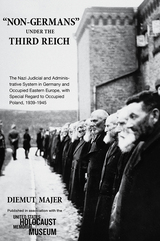 "Non-Germans" under the Third Reich: The Nazi Judicial and Administrative System in Germany and Occupied Eastern Europe, with Special Regard to Occupied Poland, 1939-1945
Diemut Majer
Texas Tech University Press, 2013 Under the legal and administrative system of Nazi Germany, people categorized as Fremdvölkische (literally, “foreign people”) were subject to special laws that restricted their rights, limited their protection under the law, and exposed them to extraordinary legal sanctions and brutal, extralegal police actions. These special laws, one of the central constitutional principles of the Third Reich, applied to anyone perceived as different or racially inferior, whether German citizens or not.
“Non-Germans” under the Third Reich traces the establishment and evolution of these laws from the beginnings of the Third Reich through the administration of annexed and occupied eastern territories during the war. Drawing extensively on German archival sources as well as on previously unexplored material from Poland and elsewhere in eastern Europe, the book shows with chilling detail how the National Socialist government maintained a superficial legal continuity with the Weimar Republic while expanding the legal definition of Fremdvölkische, to untimately give itself legal sanction for the actions undertaken in the Holocaust. Replete with revealing quotations from secret decrees, instructions, orders, and reports, this major work of scholarship offers a sobering assessment of the theory and practice of law in Nazi Germany.
Published in association with the United States Holocaust Memorial Museum
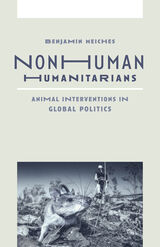 Nonhuman Humanitarians: Animal Interventions in Global Politics
Benjamin Meiches
University of Minnesota Press, 2023 Examining the appearance of nonhuman animals laboring alongside humans in humanitarian operations
Both critical and mainstream scholarly work on humanitarianism have largely been framed from anthropocentric perspectives highlighting humanity as the rationale for providing care to others. In Nonhuman Humanitarians, Benjamin Meiches explores the role of animals laboring alongside humans in humanitarian operations, generating new ethical possibilities of care in humanitarian practice. Nonhuman Humanitarians examines how these animals not only improve specific practices of humanitarian aid but have started to transform the basic tenets of humanitarianism. Analyzing case studies of mine-clearance dogs, milk-producing cows and goats, and disease-identifying rats, Nonhuman Humanitarians ultimately argues that nonhuman animal contributions problematize foundational assumptions about the emotional and rational capacities of humanitarian actors as well as the ethical focus on human suffering that defines humanitarianism. Meiches reveals that by integrating nonhuman animals into humanitarian practice, several humanitarian organizations have effectively demonstrated that care, compassion, and creativity are creaturely rather than human and that responses to suffering and injustice do not—and cannot—stop at the boundaries of the human.
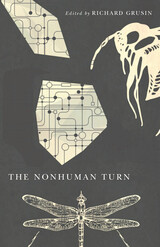 The Nonhuman Turn
Richard Grusin
University of Minnesota Press, 2015 Edited by Richard Grusin of the Center for 21st Century Studies, this is the first book to name and characterize—and therefore consolidate—a wide array of current critical, theoretical, and philosophical approaches to the humanities and social sciences under the concept of the nonhuman turn. Each of these approaches is engaged in decentering the human in favor of a concern for the nonhuman, understood by contributors in a variety of ways—in terms of animals, affectivity, bodies, materiality, technologies, and organic and geophysical systems. The nonhuman turn in twenty-first-century studies can be traced to multiple intellectual and theoretical developments from the last decades of the twentieth century: actor-network theory, affect theory, animal studies, assemblage theory, cognitive sciences, new materialism, new media theory, speculative realism, and systems theory. Such varied analytical and theoretical formations obviously diverge and disagree in many of their assumptions, objects, and methodologies. However, they all take up aspects of the nonhuman as critical to the future of twenty-first-century studies in the arts, humanities, and social sciences. Unlike the posthuman turn, the nonhuman turn does not make a claim about teleology or progress in which we begin with the human and see a transformation from the human to the posthuman. Rather, the nonhuman turn insists (paraphrasing Bruno Latour) that “we have never been human,” that the human has always coevolved, coexisted, or collaborated with the nonhuman—and that the human is identified precisely by this indistinction from the nonhuman. Contributors: Jane Bennett, Johns Hopkins U; Ian Bogost, Georgia Institute of Technology; Wendy Hui Kyong Chun, Brown U; Mark B. N. Hansen, Duke U; Erin Manning, Concordia U, Montreal; Brian Massumi, U of Montreal; Timothy Morton, Rice U; Steven Shaviro, Wayne State U; Rebekah Sheldon, Indiana U.
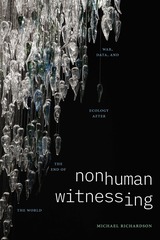 Nonhuman Witnessing: War, Data, and Ecology after the End of the World
Michael Richardson
Duke University Press, 2024 In Nonhuman Witnessing Michael Richardson argues that a radical rethinking of what counts as witnessing is central to building frameworks for justice in an era of endless war, ecological catastrophe, and technological capture. Dismantling the primacy and notion of traditional human-based forms of witnessing, Richardson shows how ecological, machinic, and algorithmic forms of witnessing can help us better understand contemporary crises. He examines the media-specificity of nonhuman witnessing across an array of sites, from nuclear testing on First Nations land and autonomous drone warfare to deepfakes, artificial intelligence, and algorithmic investigative tools. Throughout, he illuminates the ethical and political implications of witnessing in an age of profound instability. By challenging readers to rethink their understanding of witnessing, testimony, and trauma in the context of interconnected crises, Richardson reveals the complex entanglements between witnessing and violence and the human and the nonhuman.
 The Non-Independent Territories of the Caribbean and Pacific: Continuity or Change?
Edited by Peter Clegg and David Killingray
University of London Press, 2012 By the end of the 20th century the once great modern European empires had gone – well, almost! Today, scattered around the world, there are small territories, remnants of empire that for one reason and another have eschewed independence and retain links of various kinds with the former imperial power. This edited collection focuses primarily on those territories in the Caribbean and Pacific which retain these ties. The issues affecting them such as constitutional reform, the maintenance of good governance, economic development, and the risks of economic vulnerability are important concerns for all territories both independent and non-independent. However, the ways in which these issues are addressed are somewhat different in small sub-national jurisdictions because of the particular regimes in place and the tensions inherent between the territories and their respective metropoles. The book brings together academics, policy-makers, constitutional lawyers, and civil servants to provide an insight into the complexities, contradictions, challenges and opportunities that help to define the non-independent territories of the Caribbean and Pacific, and their long-standing but sometimes awkward ties with their metropolitan powers.
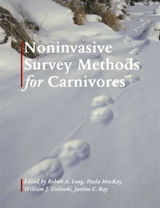 Noninvasive Survey Methods for Carnivores
Edited by Robert A. Long, Paula MacKay, William J. Zielinski, Justina C. Ray
Island Press, 2008 The status of many carnivore populations is of growing concern to scientists and conservationists, making the need for data pertaining to carnivore distribution, abundance, and habitat use ever more pressing. Recent developments in “noninvasive” research techniques—those that minimize disturbance to the animal being studied—have resulted in a greatly expanded toolbox for the wildlife practitioner.
Presented in a straightforward and readable style, Noninvasive Survey Methods for Carnivores is a comprehensive guide for wildlife researchers who seek to conduct carnivore surveys using the most up-to-date scientific approaches. Twenty-five experts from throughout North America discuss strategies for implementing surveys across a broad range of habitats, providing input on survey design, sample collection, DNA and endocrine analyses, and data analysis. Photographs from the field, line drawings, and detailed case studies further illustrate on-the-ground application of the survey methods discussed.
Coupled with cutting-edge laboratory and statistical techniques, which are also described in the book, noninvasive survey methods are effi cient and effective tools for sampling carnivore populations. Noninvasive Survey Methods for Carnivores allows practitioners to carefully evaluate a diversity of detection methods and to develop protocols specific to their survey objectives, study area, and species of interest. It is an essential resource for anyone interested in the study of carnivores, from scientists engaged in primary research to agencies or organizations requiring carnivore detection data to develop management or conservation plans.
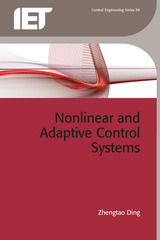 Nonlinear and Adaptive Control Systems
Zhengtao Ding
The Institution of Engineering and Technology, 2013 An adaptive system for linear systems with unknown parameters is a nonlinear system. The analysis of such adaptive systems requires similar techniques to analyse nonlinear systems. Therefore it is natural to treat adaptive control as a part of nonlinear control systems. Nonlinear and Adaptive Control Systems treats nonlinear control and adaptive controlin a unified framework, presenting the major results at a moderate mathematical level, suitable for MSc students and engineers with undergraduate degrees. Topics covered include introduction to nonlinear systems; state space models; describing functions forcommon nonlinear components; stability theory; feedback linearization; adaptive control; nonlinear observer design; backstepping design; disturbance rejection and output regulation; and control applications, including harmonic estimation and rejection inpower distribution systems, observer and control design for circadian rhythms, and discrete-time implementation of continuous-timenonlinear control laws.
Nonlinear Optimal and Flatness-based Control Methods and Applications for Complex Dynamical Systems
Gerasimos Rigatos
The Institution of Engineering and Technology, 2025 Robotics, mechatronics and autonomous systems can exhibit complex nonlinear dynamics which can lead to unsatisfactory transients and deviation from setpoints or even to instability. A standard approach in the control of these systems had been the concept of diffeomorphisms to bring a system into a linear form. However, these methods are not straightforward and result in complicated state-space model transformations. In this monograph, new methods have been investigated which are not constrained by the shortcomings of global linearization-based control schemes. They can be implemented in a computationally simple manner, are followed by global stability proofs, and perform better than previous optimal control approaches for a wider class of nonlinear dynamical systems and applications.
Nonlinear Optimization in Electrical Engineering with Applications in MATLAB®
Mohamed Bakr
The Institution of Engineering and Technology, 2013 Nonlinear Optimization in Electrical Engineering with Applications in MATLAB® provides an introductory course on nonlinear optimization in electrical engineering, with a focus on applications such as the design of electric, microwave, and photonic circuits, wireless communications, and digital filter design.
Non-linear Predictive Control: Theory and practice
Basil Kouvaritakis
The Institution of Engineering and Technology, 2001 Model-based predictive control (MPC) has proved to be a fertile area of research. It has gained enormous success within industry, especially in the context of process control. Nonlinear model-based predictive control (NMPC) is of particular interest as this best represents the dynamics of most real plant. This book collects together the important results which have emerged in this field, illustrating examples by means of simulations on industrial models. In particular there are contributions on feedback linearisation, differential flatness, control Lyapunov functions, output feedback, and neural networks. The international contributors to the book are all respected leaders within the field, which makes for essential reading for advanced students, researchers and industrialists in the field of control of complex systems.
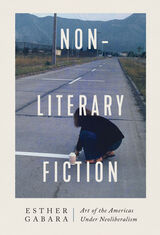 Non-literary Fiction: Art of the Americas under Neoliberalism
Esther Gabara
University of Chicago Press, 2022 Explores a new form of fiction that emerged in late-twentieth-century visual art across the Americas.
With Non-literary Fiction, Esther Gabara examines how contemporary art produced across the Americas has reacted to the rising tide of neoliberal regimes, focusing on the crucial role of fiction in daily politics. Gabara argues that these fictions depart from familiar literary narrative structures and emerge in the new mediums and practices that have revolutionized contemporary art. Each chapter details how fiction is created through visual art forms—in performance and body art, posters, mail art, found objects, and installations. For Gabara, these fictions comprise a type of art that asks viewers to collaborate in the creation of the work and helps them to withstand the brutal restrictions imposed by dominant neoliberal regimes.
During repressive regimes of the 1960s and 1970s and free trade agreements of the 1990s, artists and critics consistently said no to economic privatization, political deregulation, and reactionary social logic as they rejected inherited notions of visual, literary, and political representation. Through close analyses of artworks and writings by leading figures of these two generations, including Indigenous thinkers, Gabara shows how negation allows for the creation of fiction outside textual forms of literature.
 The Non-Modern Crisis of the Modern University
D. Bret Leraul and Willy Thayer
Northwestern University Press, 2025 A landmark work of critical theory about the Western university from the Southern Cone Renowned Chilean philosopher Willy Thayer’s La crisis no moderna de la universidad moderna, first published in 1996 and in an updated edition in 2019, is a landmark work of critical theory from the Southern Cone. Presented in English for the first time, The Non-Modern Crisis of the Modern University rewrites the idea of the Western university while also diagnosing the ills of postdictatorship Chile through a philosophically informed dismantling of its neoliberal institutionalization of higher education. Bret Leraul’s translation advances the vital work of globalizing critical university studies by disseminating theory from the Global South. If the university helped to construct Chile’s neoliberal society, Thayer’s polemical deconstruction of both will help readers reconstruct the cultural politics of the era to better understand the global hegemony of neoliberalism today.
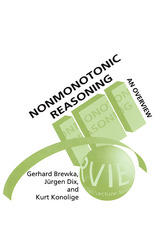 Nonmonotonic Reasoning: An Overview
Gerhard Brewka, Jürgen Dix, and Kurt Konolige
CSLI, 1997 Nonmonotonic reasoning is a subfield of Artificial Intelligence trying to find more realistic formal models of reasoning than classical logic. In common sense reasoning one often draws conclusions that have to be withdrawn when further information is obtained. The set of conclusions thus does not grow monotonically with the given information. It is this phenomenon that nonmonotonic reasoning methods try to formalize. This volume gives an overview on recent results in the field and points to relevant literature for further study.
This up-to-date survey of research in the area of nonmonotonic reasoning includes a concise description of the most influential nonmonotonic logics (e.g. circumscription, autoepistemic logic and default logic), a presentation of recent research in abduction, as well as an overview of semantics for logic programs with default negation. The primary goal of this volume is to make recent results in the field more accessible. An extensive bibliography is included.
Nonnative English-Speaking Teachers of U.S. College Composition: Exploring Identities and Negotiating Difference
Mariya Tseptsura
University Press of Colorado, 2024 Featuring the voices of 22 linguistically and geographically diverse authors from a variety of institutional contexts throughout the United States, this edited collection calls attention to the experiences of an important and growing group of writing instructors: those who have learned English as an additional language. Focusing on this critical part of the growing linguistic and cultural diversity of writing programs and classrooms, the contributors to his collection deepen our understanding of an important but relatively unexamined aspect of U.S. writing instruction. By exploring ways that writing programs can build on the strengths that multilingual students and teachers bring to the classroom, this collection offers promising strategies for creating more inclusive writing programs.
 Non-Natural Social Science: Reflecting on the Enterprise of "More Heat than Light", Volume 25
Neil De Marchi
Duke University Press Published in 1989, Philip Mirowski’s More Heat Than Light: Economics as Social Physics, Physic’s as Nature’s Economics offered a challenge to historians of economics that could not be ignored. Neo-classical economics, he said, adopted certain analytical tools of mid-nineteenth-century physics, simply substituting “utility” for “energy,” and in so doing, chose a natural-world model which denied that economic knowledge might be essentially social and cultural. The essays in this collection represent the first collective effort to respond to Mirowski’s challenge by examining and assessing the Mirowski enterprise. In addition to questioning the veracity of the connection between physics and economics, the contributors consider the far-reaching implications of Mirowski’s thesis for the history of economics. Mirowski shows that economic texts must be viewed in their relation to texts outside the field of economics and offers an alternative reading of economic texts as social and cultural inscriptions. As historians of economics respond to Mirowski’s challenge, the style and direction of their work will be changed. Utlimately, a careful assessment of More Heat Than Light may introduce historians of economics to recognize that the “discipline” of economics may not be the most appropriate category from which to proceed. Contributors. Jack Birner, Marcel Boumans, A. W. Coats, Avi J. Cohen, I. Bernard Cohen, Neil de Marchi, Steve Fuller, Clifford G. Gaddy, Wade Hands, Albert Jolink, Arjo Klamer, Robert Leonard, Philip Mirowski, Theodore M. Porter, Margaret Schabas, E. Roy Weintraub
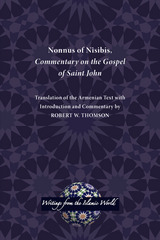 Nonnus of Nisibis, Commentary on the Gospel of Saint John
Robert W. Thomson
SBL Press, 2014 A new English translation of the first text translated from Arabic to Armenian for research and classroom use
Robert W. Thomson translates this ninth-century commentary defending the miaphysite theological position of the Armenian church against the chalcedonian position of the Greek Byzantine church. Nonnus’s exegesis of the gospel falls in the context of trends in Eastern Christian biblical exposition, primarily the Syrian tradition. Therefore, Thomson emphasizes the parallels in Syriac commentaries on the book of John, noting also earlier Greek writers whose works were influential in Syria. This book is essential reading for anyone interested in the Armenian church and church history.
Features:
- Introductory material on the text’s history, manuscript traditions, and theological importance
- Translation of the Armenian text and commentary
- Bibliography covering the Armenian, Greek, Syriac, and Arabic texts as well as secondary sources
Nonprofit
Matt Burriesci
New Issues Poetry and Prose, 2015 Thrust into the bizarre labyrinth of DC society, John MacManus struggles to rescue a bankrupt nonprofit while starting a family. Wackiness ensues.
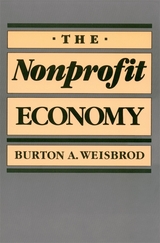 The Nonprofit Economy
Burton Weisbrod
Harvard University Press, 1988 Nonprofit organizations are all around us. Many people send their children to nonprofit day-care centers, schools, and colleges, and their elderly parents to nonprofit nursing homes; when they are ill, they may well go to a nonprofit hospital; they may visit a nonprofit museum, read the magazine of the nonprofit National Geographic Society, donate money to a nonprofit arts organization, watch the nonprofit public television station, exercise at the nonprofit YMCA. Nonprofits surround us, but we rarely think about their role in the economy, or the possibility of their competing unfairly with private enterprise.
Burton Weisbrod asks the important questions: What is the rationale for public subsidy of nonprofit organizations? In which sectors of the economy are they of real importance? Why do people contribute money and time to them and why should donations be tax deductible? What motivates managers of nonprofits? Why are these organizations exempt from taxes on income, property, and sales? When the search for revenue brings nonprofits into competition with proprietary firms—as when colleges sell computers or museum gift shops sell books and jewelry—is that desirable?
Weisbrod examines the raison d’être for nonprofits. The evidence he assembles shows that nonprofits are particularly useful in situations where consumers have little information on what they are purchasing and must therefore rely on the probity of the seller.
Written in a clear, direct style without technicalities, The Nonprofit Economy is addressed to a broad audience, dealing comprehensively with what nonprofits do, how well they do it, how they are financed, and how they interact with private enterprises and government. At the same time, the book presents important new evidence on the size and composition of the nonprofit part of the economy, the relationship between financial sources and outputs, and the different roles of nonprofits and for-profit organizations in the same industries. The Nonprofit Economy will become a basic source for anyone with a serious interest in nonprofit organizations.
Nonprofit Governance: The Why, What, and How of Nonprofit Boardship
John Tropman and Thomas J. Harvey
University of Scranton Press, 2009 This thorough volume offers up-to-date information and practical guidelines for board members and executives of nonprofit organizations large and small. Among the topics addressed are the historical roots of the voluntary sector in America, a complete discussion of the key responsibilities of nonprofit boards, suggestions for board organization, appropriate protocol for meetings, legal issues affecting nonprofit groups, and useful tools for self-assessment. This guide will be indispensable to the almost two million nonprofit organizations existing in the United States today.
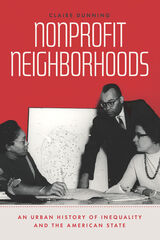 Nonprofit Neighborhoods: An Urban History of Inequality and the American State
Claire Dunning
University of Chicago Press, 2022 An exploration of how and why American city governments delegated the responsibility for solving urban inequality to the nonprofit sector.
Nonprofits serving a range of municipal and cultural needs are now so ubiquitous in US cities, it can be difficult to envision a time when they were more limited in number, size, and influence. Turning back the clock, however, uncovers both an illuminating story of how the nonprofit sector became such a dominant force in American society, as well as a troubling one of why this growth occurred alongside persistent poverty and widening inequality. Claire Dunning’s book connects these two stories in histories of race, democracy, and capitalism, revealing how the federal government funded and deputized nonprofits to help individuals in need, and in so doing avoided addressing the structural inequities that necessitated such action in the first place.
Nonprofit Neighborhoods begins after World War II, when suburbanization, segregation, and deindustrialization inaugurated an era of urban policymaking that applied private solutions to public problems. Dunning introduces readers to the activists, corporate executives, and politicians who advocated addressing poverty and racial exclusion through local organizations, while also raising provocative questions about the politics and possibilities of social change. The lessons of Nonprofit Neighborhoods exceed the bounds of Boston, where the story unfolds, providing a timely history of the shift from urban crisis to urban renaissance for anyone concerned about American inequality—past, present, or future.
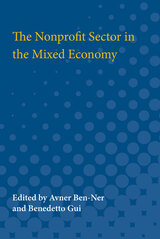 The Nonprofit Sector in the Mixed Economy
Edited by Avner Ben-Ner and Benedetto Gui
University of Michigan Press, 1994 In recent years, the number of scholars doing research and teaching on the nonprofit sector, the number of research and teaching centers dedicated to it, and the number of books and journals focusing on the topic of nonprofit organizations have all grown significantly. Nonetheless, this is the first book that explicitly recognizes and emphasizes the role and behavior of the nonprofit sector in the mixed economy.The book's twelve chapters present a picture of the nonprofit sector and its relationship with other sectors of the mixed economy and analyze theoretically and empirically various aspects of this relationship. The book offers new perspectives on the role of nonprofit organizations vis-à-vis for-profit firms and government organizations, a theoretical reevaluation of the relationship between government expenditures and private contributions, and a critique of the econometric studies of the "crowd-in" and "crowd-out" issues. It presents new analysis of the relationship between government expenditures and competition between nonprofit organizations and for-profit firms and new results on the Pareto efficiency of philanthropy, offering comprehensive statistical information on key variables in nonprofit organizations in comparison with for-profit firms and government organizations in several countries.
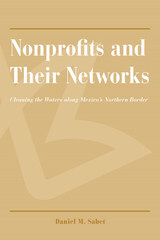 Nonprofits and Their Networks: Cleaning the Waters along Mexico’s Northern Border
Daniel M. Sabet
University of Arizona Press, 2008 On the border of the United States and Mexico, few policy issues face such acute challenges as those related to water. Border cities face an uncertain future water supply, low-income neighborhoods often lack water and sewer services, and water contamination poses a risk to the health of residents and the environment. Responses by government agencies on both sides of the border have been insufficient. Increasing economic development has mainly resulted in increasing problems. These limitations of government and market forces suggest that nonprofit organizations—the so-called “third sector”—might play an important role in meeting the growing challenges in the region.
Finding that these organizations do have a positive impact, Daniel Sabet seeks to understand how autonomous nonprofit organizations have emerged and developed along the border. He employs data from more than 250 interviews with members of civil society organizations and public officials, surveys of neighborhood association leaders, observations at public meetings, and many secondary sources. His research compares the experiences of third-sector organizations in four prominent Mexican border cities: Tijuana, Nogales, Ciudad Juárez, and Nuevo Laredo.
Sabet finds that political change is a necessary precondition for the establishment of an independent third sector. The demise of one-party rule in Mexico has given nonprofit organizations greater opportunities to flourish, he finds, but persistent informal rules still obstruct their emergence and development. Sabet concludes that the success of the third sector will depend on the organizations’ networks. He examines organizational ties to three key groups—U.S. nonprofits, the business community, and government-created methods for public participation—and evaluates the importance of these connections for the future.
Nonprofits for Hire: The Welfare State in the Age of Contracting
Steven Smith and Michael Lipsky
Harvard University Press, 1993 In recent years, government’s primary response to the emergent problems of homelessness, hunger, child abuse, health care, and AIDS has been generated through nonprofit agencies funded by taxpayer money. As part of the widespread movement for privatization, these agencies represent revolutionary changes in the welfare state. Steven Smith and Michael Lipsky demonstrate that this massive shift in funds has benefits and drawbacks. Given the breadth of government funding of nonprofit agencies, this first study of the social, political, and organizational effects of this service strategy is an essential contribution to the current raging debates on the future of the welfare state.
Non-Redundant Near-Field to Far-Field Transformation Techniques
Claudio Gennarelli
The Institution of Engineering and Technology, 2022 Near-field (NF) measurement techniques and the related NF to far-field (FF) transformations are gaining interest for their ability to allow an accurate evaluation of the radiation characteristics of those antennas whose electric sizes do not make it possible to perform direct FF measurements in a controlled and reflection-free environment, such as the anechoic chamber.
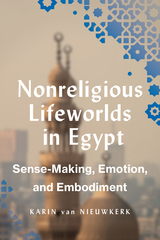 Nonreligious Lifeworlds in Egypt: Sense-Making, Emotion, and Embodiment
Karin van Nieuwkerk
University of Texas Press, 2026 An analysis of the growing visibility of nonreligion in Egypt. Egypt’s 2011 uprising ousted one dictator, Hosni Mubarak, while ushering in another, Abdel Fattah el-Sisi. Yet, if political revolution foundered, the Arab Spring nonetheless had durable social effects. Among these has been a rise in expressing atheism and agnosticism, especially among educated and affluent youth—the country’s future leaders. An intimate ethnography, Nonreligious Lifeworlds in Egypt explores the intellectual and emotional transformations of atheists and agnostics inspired by the aspirational freedom-seeking of the Arab Spring. Rejecting both of Egypt’s dominant religious traditions, Islam and Coptic Christianity, nonreligious people are widely viewed as agents of moral outrage. Amid media-driven panics, their sanity is often questioned by their own families as they experiment with new ways of living and relating. Drawing from in-depth fieldwork, interviews, and social media analysis, Karin van Nieuwkerk reveals her interlocutors’ changing perspectives on sex and gender, eating and drinking, and life and death. Above all, she emphasizes the affective experiences of renouncing religion, marked by anxiety and regret—but also liberation and relief. With rigor and compassion, Van Nieuwkerk opens our minds to the arduous process of exchanging established norms for self-determination.
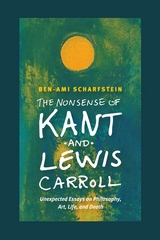 The Nonsense of Kant and Lewis Carroll: Unexpected Essays on Philosophy, Art, Life, and Death
Ben-Ami Scharfstein
University of Chicago Press, 2014 What if Immanuel Kant floated down from his transcendental heights, straight through Alice’s rabbit hole, and into the fabulous world of Lewis Carroll? For Ben-Ami Scharfstein this is a wonderfully instructive scenario and the perfect way to begin this wide-ranging collection of decades of startlingly synthesized thought. Combining a deep knowledge of psychology, cultural anthropology, art history, and the history of religions—not to mention philosophy—he demonstrates again and again the unpredictability of writing and thought and how they can teach us about our experiences.
Scharfstein begins with essays on the nature of philosophy itself, moving from an autobiographical account of the trials of being a comparativist to philosophy’s function in the outside world to the fear of death in Kant and Hume. From there he explores an impressive array of art: from China and Japan to India and the West; from an essay on sadistic and masochistic body art to one on the epistemology of the deaf and the blind. He then returns to philosophy, writing on Machiavelli and political ruthlessness, then on the ineffable, and closes with a review of Walter Kaufmann’s multivolume look at the essence of humanity, Discovering the Mind. Altogether, these essays are a testament to adventurous thought, the kind that leaps to the furthest reaches of the possible.
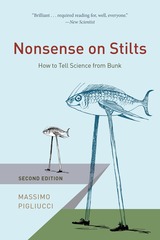 Nonsense on Stilts
Massimo Pigliucci
University of Chicago Press, 2018 Recent polls suggest that fewer than 40 percent of Americans believe in Darwin’s theory of evolution, despite it being one of science’s best-established findings. Parents still refuse to vaccinate their children for fear it causes autism, though this link has been consistently disproved. And about 40 percent of Americans believe that the threat of global warming is exaggerated, including many political leaders.
In this era of fake news and alternative facts, there is more bunk than ever. But why do people believe in it? And what causes them to embrace such pseudoscientific beliefs and practices? In this fully revised second edition, noted skeptic Massimo Pigliucci sets out to separate the fact from the fantasy in an entertaining exploration of the nature of science, the borderlands of fringe science, and—borrowing a famous phrase from philosopher Jeremy Bentham—the nonsense on stilts. Presenting case studies on a number of controversial topics, Pigliucci cuts through the ambiguity surrounding science to look more closely at how science is conducted, how it is disseminated, how it is interpreted, and what it means to our society. The result is in many ways a “taxonomy of bunk” that explores the intersection of science and culture at large.
No one—neither the public intellectuals in the culture wars between defenders and detractors of science nor the believers of pseudoscience themselves—is spared Pigliucci’s incisive analysis in this timely reminder of the need to maintain a line between expertise and assumption. Broad in scope and implication, Nonsense on Stilts is a captivating guide for the intelligent citizen who wishes to make up her own mind while navigating the perilous debates that will shape the future of our planet.
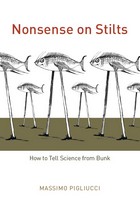 Nonsense on Stilts: How to Tell Science from Bunk
Massimo Pigliucci
University of Chicago Press, 2010 Recent polls suggest that fewer than 40 percent of Americans believe in Darwin’s theory of evolution, despite it being one of science’s best-established findings. More and more parents are refusing to vaccinate their children for fear it causes autism, though this link can been consistently disproved. And about 40 percent of Americans believe that the threat of global warming is exaggerated, despite near consensus in the scientific community that manmade climate change is real.
Why do people believe bunk? And what causes them to embrace such pseudoscientific beliefs and practices? Noted skeptic Massimo Pigliucci sets out to separate the fact from the fantasy in this entertaining exploration of the nature of science, the borderlands of fringe science, and—borrowing a famous phrase from philosopher Jeremy Bentham—the nonsense on stilts. Presenting case studies on a number of controversial topics, Pigliucci cuts through the ambiguity surrounding science to look more closely at how science is conducted, how it is disseminated, how it is interpreted, and what it means to our society. The result is in many ways a “taxonomy of bunk” that explores the intersection of science and culture at large.
No one—not the public intellectuals in the culture wars between defenders and detractors of science nor the believers of pseudoscience themselves—is spared Pigliucci’s incisive analysis. In the end, Nonsense on Stilts is a timely reminder of the need to maintain a line between expertise and assumption. Broad in scope and implication, it is also ultimately a captivating guide for the intelligent citizen who wishes to make up her own mind while navigating the perilous debates that will affect the future of our planet.
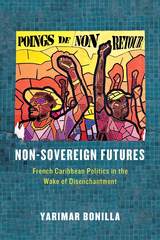 Non-Sovereign Futures: French Caribbean Politics in the Wake of Disenchantment
Yarimar Bonilla
University of Chicago Press, 2015 As an overseas department of France, Guadeloupe is one of a handful of non-independent societies in the Caribbean that seem like political exceptions—or even paradoxes—in our current postcolonial era. In Non-Sovereign Futures, Yarimar Bonilla wrestles with the conceptual arsenal of political modernity—challenging contemporary notions of freedom, sovereignty, nationalism, and revolution—in order to recast Guadeloupe not as a problematically non-sovereign site but as a place that can unsettle how we think of sovereignty itself.
Through a deep ethnography of Guadeloupean labor activism, Bonilla examines how Caribbean political actors navigate the conflicting norms and desires produced by the modernist project of postcolonial sovereignty. Exploring the political and historical imaginaries of activist communities, she examines their attempts to forge new visions for the future by reconfiguring narratives of the past, especially the histories of colonialism and slavery. Drawing from nearly a decade of ethnographic research, she shows that political participation—even in failed movements—has social impacts beyond simple material or economic gains. Ultimately, she uses the cases of Guadeloupe and the Caribbean at large to offer a more sophisticated conception of the possibilities of sovereignty in the postcolonial era.
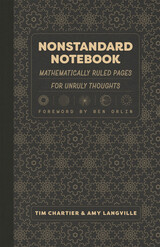 Nonstandard Notebook: Mathematically Ruled Pages for Unruly Thoughts
Tim Chartier and Amy Langville
University of Chicago Press, 2024 A revolutionary notebook that challenges us to play outside (and with) the lines.
A standard notebook displays page after page of horizontal lines. But what if we break the pattern? What if the ruled pages grew unruly? In this Nonstandard Notebook, lines twist, fragment, curve, and crisscross in beautiful formations. Each sheet is a distinctive work of imagination, asking us to draw, doodle, and journal in the same spirit.
Page after page, as we journey from lines to parabolas to waves, deep questions arise—about form, art, and mathematics. How do we harness the infinite? Why do patterns permeate nature? What are the limitations and possibilities of human vision? Nonstandard Notebook explores these questions and more through its provocative and inspirational images, each displayed with the mathematics that generated it. We see how straight lines can form fractal crenellations, how circles can disrupt and unify, and how waves and scaling can form complex landscapes (or even famous faces). Created by mathematicians, educators, and math popularizers Tim Chartier and Amy Langville, and with a foreword from Ben Orlin (bestselling author of Math with Bad Drawings), Nonstandard Notebook shows that rules—both the rules of mathematics and the rules of a notebook—do not mark the end of creativity, but the beginning.
Nonviolence: An Idea Whose Time Has Come
Ramin Jahanbegloo
Haus Publishing, 2023 A powerful book on the importance of committing to nonviolence.
In this compact book, Ramin Jahanbegloo argues that the time has come for humanity to renew its political, economic, and cultural commitment to the idea of nonviolence. At the core of the work of such towering fighters against oppression as Mahatma Gandhi, Martin Luther King Jr., Nelson Mandela, the Dalai Lama, and Václav Havel, the idea of nonviolence still has much to teach us and much work to do in the ongoing fight for justice worldwide.
Non-Well-Founded Sets
Peter Aczel
CSLI, 1988 Non-well-founded structures arise in a variety of ways in the semantics of both natural and formal languages. Two examples are non-well-founded situations and non-terminating computational processes. A natural modelling of such structures in set theory requires the use of non-well-founded sets. This text presents the mathematical background to the anti-foundation axiom and related axioms that imply the existence of non-well-founded sets when used in place of the axiom of foundation in axiomatic set theory.
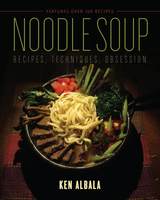 Noodle Soup: Recipes, Techniques, Obsession
Ken Albala
University of Illinois Press, 2018 Every day, noodle shops around the globe ladle out quick meals that fuel our go-go lives. But Ken Albala has a mission: to get YOU in the kitchen making noodle soup. This primer offers the recipes and techniques for mastering quick-slurper staples and luxurious from-scratch feasts. Albala made a different noodle soup every day for two years. His obsession yielded all you need to know about making stock bases, using dried or fresh noodles, and choosing from a huge variety of garnishes, flavorings, and accompaniments. He lays out innovative techniques for mixing and matching bases and noodles with grains, vegetables, and other ingredients drawn from an international array of cuisines. In addition to recipes both cutting edge and classic, Albala describes new soup discoveries he created along the way. There's advice on utensils, cooking tools, and the oft-overlooked necessity of matching a soup to the proper bowl. Finally, he sprinkles in charming historical details that cover everything from ancient Chinese millet noodles to that off-brand Malaysian ramen at the back of the ethnic grocery store. Filled with more than seventy color photos and dozens of recipes, Noodle Soup is an indispensable guide for cooking, eating, and loving a universal favorite.
The Noose: A Play
Frankétienne; Translated from the Kreyòl by Asselin Charles
Vanderbilt University Press, 2026 The Noose focuses on the lives of two Haitian immigrants living in a grubby basement apartment in New York City in 1978. One, Polydor, is a middle-class intellectual and political refugee. The other, Pyram, is a lower-class laborer. For the sake of saving money, the two have been sharing the apartment for three years. While Pyram is away working, Polydor apparently does nothing but read books on political theory. His source of funds remains a mystery.
With recent productions in Canada and the United States, the publication of this play in English will provide a new generation of audiences access to this important text, accompanied by a translator's introduction and an interview with the playwright.
Noose and Hook
Lynn Emanuel
University of Pittsburgh Press, 2010 “I have long believed that Lynn Emanuel is one of the most innovative and subversive poets now writing in America. Her aesthetic and artistic choices consistently invoke a complex hybrid poetics that radically reimagines the shape of our poetic discourse. The brilliant, shattering, and disturbing poems of Noose and Hook are not only wry critiques of recent poetic and cultural activity in this country but also compelling signposts to what yet might be possible in our future. This is Lynn Emanuel's most exquisite and powerful book yet.”—David St. John
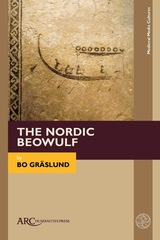 The Nordic Beowulf
Bo Gräslund
Arc Humanities Press, 2022
In such a wide-ranging, long-standing, and international field of scholarship as Beowulf, one might imagine that everything would long since have been thoroughly investigated. And yet as far as the absolutely crucial question of the poem’s origins is concerned, that is not the case.
This cross-disciplinary study by Bo Gräslund argues that the material, geographical, historical, social, and ideological framework of Beowulf cannot be the independent literary product of an Old English Christian poet, but was in all essentials created orally in Scandinavia, which was a fertile seedbed for epic poetry.
Through meticulous argument interwoven with an impressive assemblage of data, archaeological and otherwise, Gräslund offers possible answers to the questions of the provenance of the Geats, the location of Heorot, and many more, such as the significance of Sutton Hoo and the signification of the Grendel kin and dragon in the sixth century when the events of the poem, coinciding with cataclysmic events in northern Europe, took place.
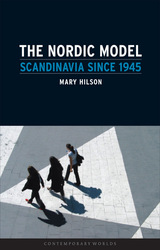 The Nordic Model: Scandinavia since 1945
Mary Hilson
Reaktion Books, 2008 The political structures of the Scandinavian nations have long stood as models for government and public policy. This comprehensive study examines how that “Nordic model” of government developed, as well as its far-reaching influence.
Respected Scandinavian historian Mary Hilson surveys the political bureaucracies of the five Nordic countries—Denmark, Finland, Iceland, Norway, and Sweden—and traces their historical influences and the ways they have changed, individually and as a group, over time. The book investigates issues such as economic development, foreign policy, politics, government, and the welfare state, and it also explores prevailing cultural perceptions of Scandinavia in the twentieth century. Hilson then turns to the future of the Nordic region as a unified whole within Europe as well as in the world, and considers the re-emergence of the Baltic Sea as a pivotal region on the global stage.
The Nordic Model offers an incisive assessment of Scandinavia yesterday and today, making this an essential text for students and scholars of political science, European history, and Scandinavian studies.
 Nordic Socialism: The Path Toward a Democratic Economy
Pelle Dragsted, Translated by William Banks
University of Wisconsin Press, 2025 In recent years, the Nordic countries have been the envy of the world for their economic success, institutional stability, and consistently high levels of social happiness. But are they socialist? Several prominent members of the American right think so. They may find a surprising ally in Pelle Dragsted, a member of the Danish parliament and the leader of the socialist political party Enhedslisten (Red-Green Alliance); contrary to most Nordic leaders, Dragsted not only accepts but embraces the charge of socialism.
In Dragsted’s analysis, Denmark and the rest of the Nordic countries are already socialist, but only in part. The dangers come (and here many conservative Americans will disagree) from the unhealthy encroachment of capitalism. His provocative argument is that capitalism and socialism are not in fact mutually exclusive, and already Nordic economies are hybrids, a mix of decommodified, democratically governed sectors and undemocratic, privately controlled enterprises. The relevant question is the degree to which one dominates the other. Currently, undemocratic forces are ascendant, but it need not be so. Dragsted offers both his diagnosis and his proposed solution, a comprehensive plan for a gradual (re)democratization of the economy and a move to fully and firmly embrace, and redefine, “Nordic socialism.”
Normal Aging II: Reports from the Duke Longitudinal Studies, 1970–1973
Erdman Palmore, ed.
Duke University Press, 1974 Since they began in 1955, the Duke Longitudinal Studies have aging have been regarded as landmark investigations, amassing invaluable data on the typical physical changes that accompany aging, typical patterns of mental health and mental illness, psychological aging, and the normal social roles, self-concepts, satisfactions, and adjustments to retirement of the aged. Comprising information on more than 750 aged and middle-aged persons, these studies have contributed enormously to our ability to distinguish normal and inevitable processes of aging from those that may accompany aging because of accident, stress, maladjustment, or disuse.
Normal Aging III: Reports from the Duke Longitudinal Studies, 1975–1984
Erdman Palmore, Ewald Busse, George Maddox, John Nowlin, and Ilene Siegler, eds.
Duke University Press, 1985 Since they began in 1955, the Duke Longitudinal Studies have aging have been regarded as landmark investigations, amassing invaluable data on the typical physical changes that accompany aging, typical patterns of mental health and mental illness, psychological aging, and the normal social roles, self-concepts, satisfactions, and adjustments to retirement of the aged. Comprising information on more than 750 aged and middle-aged persons, these studies have contributed enormously to our ability to distinguish normal and inevitable processes of aging from those that may accompany aging because of accident, stress, maladjustment, or disuse.
Normal and Abnormal International Capital Transfers
Marco Fanno
University of Minnesota Press, 1939
Normal and Abnormal International Capital Transfers was first published in 1939. Minnesota Archive Editions uses digital technology to make long-unavailable books once again accessible, and are published unaltered from the original University of Minnesota Press editions.
 A Normal Country: Russia after Communism
Andrei Shleifer
Harvard University Press, 2005 Russia's historic transition from communism in the 1990s sparked intense, often ideological debates. This book offers a firsthand glimpse into the intellectual challenges that Russia's turbulent transition generated. It deals with many of the most important reforms, from Gorbachev's half-hearted "perestroika," to the mass privatization program, to the efforts to build legal and regulatory institutions of a market economy. The essays in this book attempt to identify the driving forces of Russia's rapidly changing economic and social reality.
To understand Yeltsin's reforms, the book argues, it is essential to grasp their twin goals of destroying the remnants of the communist order and building the institutions of a market economy. Time after time, reforms were shaped to assure that communism, with its overwhelming control of the economy and society, the planning ministries, and pervasive centralization, cannot come back to Russia. Many of the successes, as well as the pathologies, of the Russian economy during the 1990s must be understood from this perspective. Despite many setbacks, Yeltsin succeeded in his life's mission. By the end of the twentieth century, both a market economy and a democracy were developed in Russia. Each was both vulnerable and flawed, but the escape from communism was certain. A decade after communism, Russia became a normal country.
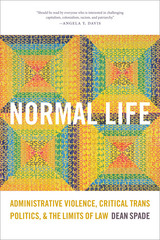 Normal Life: Administrative Violence, Critical Trans Politics, and the Limits of Law
Dean Spade
Duke University Press, 2015 Revised and Expanded Edition
Wait—what's wrong with rights? It is usually assumed that trans and gender nonconforming people should follow the civil rights and "equality" strategies of lesbian and gay rights organizations by agitating for legal reforms that would ostensibly guarantee nondiscrimination and equal protection under the law. This approach assumes that the best way to address the poverty and criminalization that plague trans populations is to gain legal recognition and inclusion in the state's institutions. But is this strategy effective?
In Normal Life Dean Spade presents revelatory critiques of the legal equality framework for social change, and points to examples of transformative grassroots trans activism that is raising demands that go beyond traditional civil rights reforms. Spade explodes assumptions about what legal rights can do for marginalized populations, and describes transformative resistance processes and formations that address the root causes of harm and violence.
In the new afterword to this revised and expanded edition, Spade notes the rapid mainstreaming of trans politics and finds that his predictions that gaining legal recognition will fail to benefit trans populations are coming to fruition. Spade examines recent efforts by the Obama administration and trans equality advocates to "pinkwash" state violence by articulating the US military and prison systems as sites for trans inclusion reforms. In the context of recent increased mainstream visibility of trans people and trans politics, Spade continues to advocate for the dismantling of systems of state violence that shorten the lives of trans people. Now more than ever, Normal Life is an urgent call for justice and trans liberation, and the radical transformations it will require.
 Normal Life: Administrative Violence, Critical Trans Politics, and the Limits of Law
Dean Spade
Duke University Press, 2011 Now Available in Paperback from Duke University Press
Wait—what's wrong with rights? It is usually assumed that trans and gender nonconforming people should follow the civil rights and “equality” strategies of lesbian and gay rights organizations by agitating for legal reforms that would ostensibly guarantee equal access, nondiscrimination, and equal protection under the law. This approach assumes that the best way to address the poverty and criminalization that plague trans populations is to get recognized by law and included in the state's institutions. But does changing what the law says about a targeted and marginalized population bring material relief? And what if many of the problems that shorten trans people's lives stem from the ordinary, banal ways that gender norm categories are administered by virtually every state and private institution?
In Normal Life Dean Spade presents revelatory critiques of the legal equality framework for social change and points to examples of transformative grassroots trans activism that is raising demands that go beyond traditional civil rights reforms. Spade explodes the assumptions about what legal rights can do for marginalized populations and describes transformative resistance processes and formations that address the root causes of harm and violence. Setting forth a politic that goes beyond the quest for mere legal inclusion, Normal Life is an urgent call for justice and trans liberation, and the radical transformations it will require.
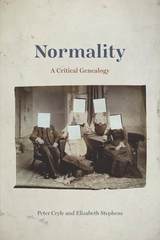 Normality: A Critical Genealogy
Peter Cryle and Elizabeth Stephens
University of Chicago Press, 2017 The concept of normal is so familiar that it can be hard to imagine contemporary life without it. Yet the term entered everyday speech only in the mid-twentieth century. Before that, it was solely a scientific term used primarily in medicine to refer to a general state of health and the orderly function of organs. But beginning in the middle of the twentieth century, normal broke out of scientific usage, becoming less precise and coming to mean a balanced condition to be maintained and an ideal to be achieved.
In Normality, Peter Cryle and Elizabeth Stephens offer an intellectual and cultural history of what it means to be normal. They explore the history of how communities settle on any one definition of the norm, along the way analyzing a fascinating series of case studies in fields as remote as anatomy, statistics, criminal anthropology, sociology, and eugenics. Cryle and Stephens argue that since the idea of normality is so central to contemporary disability, gender, race, and sexuality studies, scholars in these fields must first have a better understanding of the context for normality. This pioneering book moves beyond binaries to explore for the first time what it does—and doesn’t—mean to be normal.
The Normality of Civil War: Armed Groups and Everyday Life in Angola
Teresa Koloma Beck
Campus Verlag, 2012 In The Normality of Civil War, Teresa Koloma Beck uses theories of the everyday to analyze the social processes of civil war, specifically the type of conflict that is characterized by the expansion of violence into so-called normal life. She looks beyond simplistic notions of victims and perpetrators to reveal the complex shifting interdependencies that emerge during wartime. She also explores how the process of normalization affects both armed groups and the civilian population. A brief but smart analysis, The Normality of Civil War gets at the root of the social dynamics of war and what lies ahead for the participants after its end.
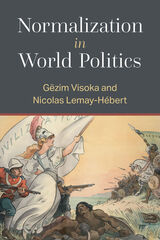 Normalization in World Politics
Gëzim Visoka and Nicolas Lemay-Hébert
University of Michigan Press, 2022 As we face new challenges from climate change and the rise of populism in Western politics and beyond, there is little doubt that we are entering a new configuration of world politics. Driven by nostalgia for past certainties or fear of what is coming next, references to normalcy have been creeping into political discourse, with people either vying for a return to a past normalcy or coping with the new normal.
This book traces main discourses and practices associated with normalcy in world politics. Visoka and Lemay-Hébert mostly focus on how dominant states and international organizations try to manage global affairs through imposing normalcy over fragile states, restoring normalcy over disaster-affected states, and accepting normalcy over suppressive states. They show how discourses and practices come together in constituting normalization interventions and how in turn they play in shaping the dynamics of continuity and change in world politics.
 Normalization of U.S.–China Relations: An International History
William C. Kirby
Harvard University Press, 2005 Relations between China and the United States have been of central importance to both countries over the past half-century, as well as to all states affected by that relationship—Taiwan and the Soviet Union foremost among them. Only recently, however, has the opening of archives made it possible to research this history dispassionately. The eight chapters in this volume offer the first multinational, multi-archival review of the history of Chinese-American conflict and cooperation in the 1970s.
On the Chinese side, normalization of relations was instrumental to Beijing's effort to enhance its security vis-à-vis the Soviet Union and was seen as a tactical necessity to promote Chinese military and economic interests. The United States was equally motivated by national security concerns. In the wake of Vietnam, policymakers saw normalization as a means of forestalling Soviet power. As the essays in this volume show, normalization was far from a foregone conclusion.
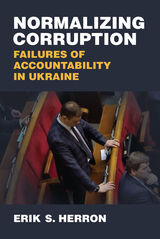 Normalizing Corruption: Failures of Accountability in Ukraine
Erik S. Herron
University of Michigan Press, 2020 Accountability is crucial to every successful democratic system. The failure to develop functioning mechanisms of accountability has undermined democratic consolidation worldwide. Reliable tools that hold officials accountable are essential for democratic governance; one of the key threats to accountability comes from corrupt practices, especially when they are integrated—or normalized—in the day-to-day activities of institutions. This book focuses on the experiences of contemporary Ukraine to evaluate the successes and failures of institutions, politicians, political parties, bureaucracies, and civil society. Yet, the topic is directly relevant to countries that have experienced democratic backsliding, and especially those countries that are at risk.
Normalizing Corruption addresses several interconnected questions: Under what circumstances do incumbents lose elections? How well do party organizations encourage cohesive behavior? Is executive authority responsive to inquiries from public organizations and other government institutions? How can citizens influence government actions? Do civil servants conduct their duties as impartial professionals, or are they beholden to other interests? The research builds upon extensive fieldwork, data collection, and data analysis that Erik S. Herron has conducted since 1999.
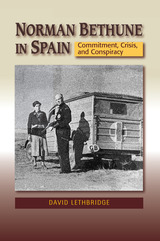 Norman Bethune in Spain: Commitment, Crisis, and Conspiracy
David Lethbridge
Sussex Academic Press, 2022 A Canadian physician and medical innovator, Norman Bethune struggled throughout his life to overcome deep emotional scars. Born in Ontario in 1890 to fanatical religious zealots, Bethune was deeply wounded by an unloving mother and a weak father whom he hated. Sexually inhibited and given to outbursts of near psychopathic rage, this wounded doctor healed himself through the healing others. In the mid-1930s, Bethune emerged as a renowned surgeon fighting the twin plagues of disease and fascism. During the Spanish Civil War, when Francisco Franco launched his offensive, Bethune travelled quickly to Madrid, organized a mobile transfusion service and, often under fire, transported blood to the wounded at the front lines. This book presents the complexity of Norman Bethune's unique activities and personality as they intersect with history: his engagement with medical, political, and military civil war players, as well as the Communist party * his cadaver blood transfusion work with the Nobel Prize-winning geneticist Hermann Muller * the profound effect that the Malaga atrocity had on him, and the role it played in his attempt to build "children's cities" outside war zones * his meeting with Graham Spry, a high-ranking functionary in the Canadian social democratic party, the Co-operative Commonwealth Federation/CCF * the unravelling of Bethune's romantic relationship with the Swedish journalist Kasja Rothman * the implications of his friendship with Henning Sorensen, possibly a secret member of the Communist Party of Canada * the circumstances of the conspiracy that led to Bethune's ejection from Spain. The book concludes with Norman Bethune's political tour throughout North America, raising funds and public awareness on behalf of the Spanish Republic.
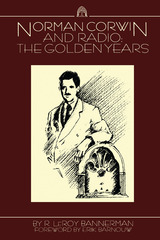 Norman Corwin and Radio: The Golden Years
R. Leroy Bannerman
University of Alabama Press, 1986 Norman Corwin is regarded as the most acclaimed creative artist of radio’s Golden Age (mid 1930s to late 1940s). Corwin worked as a producer for CBS at a time when radio was the centerpiece of American family life. His programs brought high moments to the medium during a period when exceptional creativity and world crisis shaped its character and conviction. Bannerman’s book is more than biography: it is also social history—the story of network radio, its great achievements and ultimate decline. Many of Corwin’s programs are considered radio classics. During World War II his programs energized the people and marshaled morale. We Hold These Truths, commemorating the 150th anniversary of the American Bill of Rights, was broadcast eight days after the attack on Pearl Harbor, and On a Note of Triumph, a VE-Day special for CBS, marked the historic culmination of a momentous conflict. Bannerman’s work is a portrayal of a remarkable man, who led an influential fight for the art and integrity of broadcasting, who endured unfounded accusations during the blacklisting period of the McCarthy era, and who by his dedication accomplished significant programs of historic dimensions.
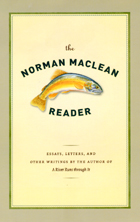 The Norman Maclean Reader
Norman Maclean
University of Chicago Press, 2008 In his eighty-seven years, Norman Maclean played many parts: fisherman, logger, firefighter, scholar, teacher. But it was a role he took up late in life, that of writer, that won him enduring fame and critical acclaim—as well as the devotion of readers worldwide. Though the 1976 collection A River Runs Through It and Other Stories was the only book Maclean published in his lifetime, it was an unexpected success, and the moving family tragedy of the title novella—based largely on Maclean’s memories of his childhood home in Montana—has proved to be one of the most enduring American stories ever written.
The Norman Maclean Reader is a wonderful addition to Maclean’s celebrated oeuvre. Bringing together previously unpublished materials with incidental writings and selections from his more famous works, the Reader will serve as the perfect introduction for readers new to Maclean, while offering longtime fans new insight into his life and career.
In this evocative collection, Maclean as both a writer and a man becomes evident. Perceptive, intimate essays deal with his career as a teacher and a literary scholar, as well as the wealth of family stories for which Maclean is famous. Complete with a generous selection of letters, as well as excerpts from a 1986 interview, The Norman Maclean Reader provides a fully fleshed-out portrait of this much admired author, showing us a writer fully aware of the nuances of his craft, and a man as at home in the academic environment of the University of Chicago as in the quiet mountains of his beloved Montana.
Various and moving, the works collected in The Norman Maclean Reader serve as both a summation and a celebration, giving readers a chance once again to hear one of American literature’s most distinctive voices.
 Norman Mailer - American Writers 73: University of Minnesota Pamphlets on American Writers
Richard Foster
University of Minnesota Press, 1968 Norman Mailer - American Writers 73 was first published in 1968. Minnesota Archive Editions uses digital technology to make long-unavailable books once again accessible, and are published unaltered from the original University of Minnesota Press editions. This pamphlet series has been hailed by critics, teachers, and librarians as an ideals means of introducing both students and general readers to American writers of all periods. Choice has commented: "For the small library this series offers at small cost introductions by reputable critics o dozens of significant authors, and the larger the library the greater the number of undergraduate students looking for a place to start on some writer." The New York Times Book Review has called the pamphlets "extraordinarily good," pointing out that "they are just long enough (forty-eight pages) to permit a real survey of an author's work and short enough to attract the casual reader, the anxiety-ridden student, and the professor desperate for the straight word on an unfamiliar writer."
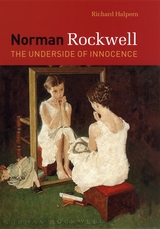 Norman Rockwell: The Underside of Innocence
Richard Halpern
University of Chicago Press, 2006 Norman Rockwell’s scenes of everyday small-town life are among the most indelible images in all of twentieth-century art. While opinions of Rockwell vary from uncritical admiration to sneering contempt, those who love him and those who dismiss him do agree on one thing: his art embodies a distinctively American style of innocence.
In this sure-to-be controversial book, Richard Halpern argues that this sense of innocence arises from our reluctance—and also Rockwell’s—to acknowledge the often disturbing dimensions of his works. Rockwell’s paintings frequently teem with perverse acts of voyeurism and desire but contrive to keep these acts invisible—or rather, hidden in plain sight, available for unacknowledged pleasure but easily denied by the viewer.
Rockwell emerges in this book, then, as a deviously brilliant artist, a remorseless diagnostician of the innocence in which we bathe ourselves, and a continuing, unexpected influence on contemporary artists. Far from a banal painter of the ordinary, Halpern argues, Rockwell is someone we have not yet dared to see for the complex creature he is: a wholesome pervert, a knowing innocent, and a kitschy genius.
Provocative but judicious, witty but deeply informed, Norman Rockwell is a book rich in suggestive propositions and eye-opening details—one that will change forever the way we think about this American icon and his works.
Normandie
Arne Zuidhoek
Amsterdam University Press, 2024 Her novel design and lavish interiors led many to consider her the greatest of ocean liners. Despite this, Normandie was not a commercial success. During service the flagship of the Compagnie Générale Transatlantique, made 139 westbound transatlantic crossings and held the Blue Riband for the fastest transatlantic crossing at several points during her service career.
 Normandy: The Landings to the Liberation of Paris
Olivier Wieviorka
Harvard University Press, 2008 The Allied landings on the coast of Normandy on June 6, 1944, have assumed legendary status in the annals of World War II. But in overly romanticizing D-day, Olivier Wieviorka argues, we have lost sight of the full picture. Normandy offers a balanced, complete account that reveals the successes and weaknesses of the titanic enterprise.
In addition to describing the landings with precision and drama, Wieviorka covers the planning and diplomatic background, Allied relationships, German defensive preparations, morale of the armies, economics and logistics, political and military leaders, and civilians’ and soldiers’ experience of the fighting. Surprisingly, the landing itself was not the slaughter the general staff expected. The greater battle for Normandy—waged on farmland whose infamous hedgerows, the bocage, created formidable obstacles—took a severe toll not only in lives lost, but on the survivors who experienced this grueling ordeal.
D-day, Wieviorka notes, was a striking accomplishment, but it was war, violent and cruel. Errors, desertions, rivalries, psychological trauma, self-serving motives, thefts, and rapes were all part of the story. Rather than diminishing the Allied achievement, this candid book underscores the price of victory and acknowledges the British, American, and Canadian soldiers who dashed onto the Normandy beaches not as demigods, but as young men.
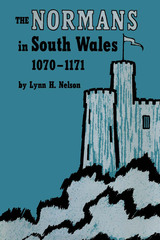 The Normans in South Wales, 1070–1171
By Lynn H. Nelson
University of Texas Press, 1966 A frontier has been called "an area inviting entrance." For the Norman invaders of England the Welsh peninsula was such an area. Fertile forested lowlands invited agricultural occupation; a fierce but primitive and disunited native population was scarcely a formidable deterrent. In The Normans in South Wales, Lynn H. Nelson provides a comprehensive history of the century during which the Normans accomplished this occupation. Skillfully he combines facts and statistics gleaned from a variety of original sources—The Anglo-Saxon Chronicle, the Domesday Book, Church records, charters of the kings and of the marcher lords, and more imaginative literary sources such as the chanson de geste and the frontier epic—to give a vivid picture of a century of strife. He describes the fluctuating conflict between Norman invaders in the lowlands and Welsh tribesmen in the highlands; the hard struggle of medieval frontiersmen to take from the new land a profit commensurate with their labors; the development of a Cambro-Norman society distinct and quite different from the Anglo-Norman culture which engendered it; and the attempt of the frontiersman to prevent the Anglo-Norman authorities from taking control of the lands he had won. The turbulent Welsh tribes provided an ever present harassment along the frontier, and Nelson begins his presentation with an account of the failure of the Saxons to control them. He examines the methods adopted by William the Conqueror to cope with the problem—the creation of the great marcher lordships and the subsequent problems in controlling these lordships—and the weakness of some Anglo-Norman kings and the strength of others. By 1171 the conquest of the Welsh frontier was complete; but as Nelson points out, this conquest was strangely limited. The frontier, which extended throughout the lowlands of Wales, stopped at the 600-foot contour line in the mountains. In his final chapter Nelson speculates upon the curious fact that large areas of seemingly inviting moorlands lying above this line remained closed to the Cambro-Norman, and his speculations lead him to some interesting inferences about the nature of the frontier's influence upon the civilization which moves in to occupy it.
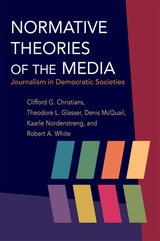 Normative Theories of the Media: Journalism in Democratic Societies
Clifford G. Christians, Theodore Glasser, Denis McQuail, Kaarle Nordenstreng, Ro
University of Illinois Press, 2008 In this book, five leading scholars of media and communication take on the difficult but important task of explicating the role of journalism in democratic societies. Using Fred S. Siebert, Theodore Peterson, and Wilbur Schramm's classic Four Theories of the Press as their point of departure, the authors explore the philosophical underpinnings and the political realities that inform a normative approach to questions about the relationship between journalism and democracy, investigating not just what journalism is but what it ought to be. The authors identify four distinct yet overlapping roles for the media: the monitorial role of a vigilant informer collecting and publishing information of potential interest to the public; the facilitative role that not only reports on but also seeks to support and strengthen civil society; the radical role that challenges authority and voices support for reform; and the collaborative role that creates partnerships between journalists and centers of power in society, notably the state, to advance mutually acceptable interests. Demonstrating the value of a reconsideration of media roles, Normative Theories of the Media provides a sturdy foundation for subsequent discussions of the changing media landscape and what it portends for democratic ideals.
Norse-Derived Terms in the "Ormulum": A Reappraisal
Sara M. Pons-Sanz
Arc Humanities Press, 2024 The Ormulum has been, from the onset, at the very centre of the philological investigation of the impact that Anglo-Scandinavian interaction in the Early Middle Ages had on the English lexicon. However, previous works have focused mainly on the identification of the Norse-derived terms in the text, with different interpretations arising from the varying reliability of the extant evidence. This study moves the field forward not only by re-assessing the over five hundred terms that have so far been identified as Norse-derived on the basis of the newly developed Gersum typology, but also by exploring the level of integration of the terms into Orrm’s language and the extent to which his use of these terms can be said to be as idiosyncratic as other aspects of his text.
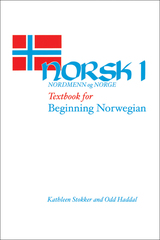 Norsk, nordmenn og Norge 1: Textbook for Beginning Norwegian
Kathleen Stokker and Odd Haddal
University of Wisconsin Press, 1981 This introduction to Norwegian helps students acquire the basic units of vocabulary and structure and use that knowledge to learn about Norway and Norwegian culture.
Once students acquire the basic units of vocabulary and structure, they will use their knowledge of the language to learn about Norway. Students will learn about the cities of Oslo and Bergen, how to converse when eating in a Norwegian home or restaurant, and about Norwegian schools. Emphasis is also given to travel and communications, as well as the seasons of the year and Norwegian holidays.
The present edition of the text features a short grammar summary, a reference for review to assist in drawing together aspects of the grammar that are presented throughout the text. To aid in developing good pronunciation and intonation habits, as well as to internalize certain items of vocabulary and structure, most chapters contain a practice dialogue for students to practice repeatedly while studying the chapter.
Norsk, nordmenn og Norge 2, Antologi: Textbook for Intermediate Norwegian
Kathleen Stokker
University of Wisconsin Press, 1993 This intermediate-level anthology offers a lively collection of writingsfor students learning Norwegian. Introductions to selected Norwegian authors, vocabulary lists, and maps promote discussions of Norwegian history, culture, geography and literature.
Norsk, nordmenn og Norge: Workbook
Louis E. Janus
University of Wisconsin Press, 1981 The Norsk, nordmenn og Norge series regards communication as the primary goal of language learning. This workbook provides meaningful structural practice in socially relevant and useful ways, combining entertaining activities with more traditional exercises.
 The Norske Nook Book of Pies and Other Recipes
Jerry Bechard and Cindee Borton-Parker
University of Wisconsin Press, 2015 The Norske Nook, founded as a small-town café in 1973, is now a foursome of revered pie shrines in Osseo, Rice Lake, Eau Claire, and Hayward, Wisconsin. The Nook’s international fame grew from a tradition of Midwest home baking, informed by Scandinavian roots and enriched by the luscious ripe fruit and sumptuous sour creams and cream cheeses of America’s dairyland.
This cookbook features the restaurants’ award-winning baking: Scandinavian specialties, cheesecakes, tortes, cookies, muffins, and more than seventy recipes (and variations) for pie. More than fifty new pie recipes have been created by the Nook bakers since 1990, when Jerry Bechard purchased the Osseo café from founder Helen Myhre. The Norske Nook has won thirty-six blue ribbons at the National Pie Championships in Florida—including three in 2014, for Lemon Cream Cheese, Peaches and Cream, and Jamberry.
Gold Medal Winner, Cookbook, Foreword Reviews IndieFab Book of the Year Awards
Runner-up, Cookbooks/Crafts/Hobbies, Midwest Book Awards
“Outstanding” books for public & secondary school libraries from university presses, American Library Association
“Best of the Best” books for public libraries from university presses, American Library Association
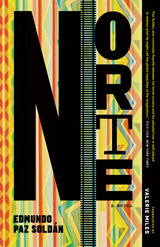 Norte: A Novel
Edmundo Paz Soldán
University of Chicago Press, 2016 Three unconnected people travel north, each passing in isolation over one of the most troubled and controversial dividing lines in the world: the Mexico‒US border. But in a melee of language and blood, their stories and the stories of those they meet—of a young serial killer, a waitress and graphic novelist and her lover (and former professor), and an outsider artist in a mental institution—gradually begin to coalesce. Daring in both its protagonists and its structure, Edmundo Paz Soldán’s Norte is a fast-paced, vivid, and operatic blending of distinct voices. Together, they lay bare the darkness of the line over which these souls—like so many others—have passed.
A prominent member of a new generation of Latin American writers, Paz Soldán stands in defiant opposition to the magical realism of the past century, instead grounding his work in political, economic, and historical realities. Norte is no exception; it is a tale of displacement and the very human costs of immigration. Shocking with its violence even as it thrills with its language, confounding rather than cowering under the cliché of the murderous, drug-dealing immigrant, Norte is a disquieting, imperative work—an undeniable reflection of our fragmented modern world.
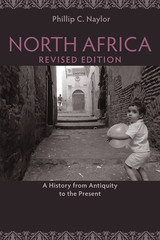 North Africa, Revised Edition: A History from Antiquity to the Present
By Phillip C. Naylor
University of Texas Press, 2014 North Africa has been a vital crossroads throughout history, serving as a connection between Africa, Asia, and Europe. Paradoxically, however, the region's historical significance has been chronically underestimated. In a book that may lead scholars to reimagine the concept of Western civilization, incorporating the role North African peoples played in shaping "the West," Phillip Naylor describes a locale whose transcultural heritage serves as a crucial hinge, politically, economically, and socially. Ideal for novices and specialists alike, North Africa begins with an acknowledgment that defining this area has presented challenges throughout history. Naylor's survey encompasses the Paleolithic period and early Egyptian cultures, leading readers through the pharonic dynasties, the conflicts with Rome and Carthage, the rise of Islam, the growth of the Ottoman Empire, European incursions, and the postcolonial prospects for Egypt, Libya, Tunisia, Algeria, Morocco, and Western Sahara. Emphasizing the importance of encounters and interactions among civilizations, North Africa maps a prominent future for scholarship about this pivotal region. Now with a new afterword that surveys the “North African Spring” uprisings that roiled the region from 2011 to 2013, this is the most comprehensive history of North Africa to date, with accessible, in-depth chapters covering the pre-Islamic period through colonization and independence.
 North Africa under Byzantium and Early Islam
Susan T. Stevens
Harvard University Press The profound economic and strategic significance of the province of “Africa” made the Maghreb highly contested in the Byzantine period—by the Roman (Byzantine) empire, Berber kingdoms, and eventually also Muslim Arabs—as each group sought to gain, control, and exploit the region to its own advantage. Scholars have typically taken the failure of the Byzantine endeavor in Africa as a foregone conclusion. North Africa under Byzantium and Early Islam reassesses this pessimistic vision both by examining those elements of Romano-African identity that provided continuity in a period of remarkable transition, and by seeking to understand the transformations in African society in the context of the larger post-Roman Mediterranean. Chapters in this book address topics including the legacy of Vandal rule in Africa, historiography and literature, art and architectural history, the archaeology of cities and their rural hinterlands, the economy, the family, theology, the cult of saints, Berbers, and the Islamic conquest, in an effort to consider the ways in which the imperial legacy was re-interpreted, re-imagined, and put to new uses in Byzantine and early Islamic Africa.
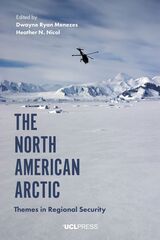 The North American Arctic: Themes in Regional Security
Edited by Dwayne Menezes and Heather Nicol
University College London, 2019 The North American Arctic focuses on current and emerging security issues confronting the Arctic that are shaping relationships between Alaska; the Canadian territories of Yukon, Nunavut, and the Northwest Territories; Greenland; and Russia. Raising important and timely questions about normative security arrangements, contributors identify the degree to which “domain awareness” has redefined traditional military focuses, while new human rights discourses have undercut traditional ways of managing sovereignty and territory. While security itself is not an outdated concept, our understanding of what constitutes human-centered security has shifted dramatically. Contributors explore this shift, looking at new regionally specific threats through the subjectivities and spaces under discussion. Providing a much-needed framework, The North American Arctic helps readers understand the impact of new developments in security in this region at both the level of community and the broader scale.
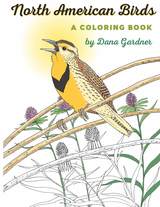 North American Birds: A Coloring Book
Dana Gardner
University of Iowa Press, 2017 There are many field guides to birds of the United States. Refer to one if you want to know which colors go exactly where on these thirty-three precisely drawn illustrations. Or create your own fantastic ornithological kingdom by using the brightest shades and patterns you can imagine. It’s almost impossible to improve upon the natural colors of the abstract-art-themed wood duck or the well-named painted bunting, but there’s no reason not to give the American robin a makeover.
The birds are arranged in order of their evolutionary history so that you can see the relationships among species and families. Some of them, like the northern cardinal, are familiar backyard friends; some, like the mountain quail and American bittern, are wary denizens of brushlands and marshes; and some, like the great horned owl, are seldom seen in daylight. One, unfortunately, is extinct—the bright and raucous Carolina parakeet, which once ranged widely in huge noisy flocks. All are waiting for you to bring them to life with your own vibrant colors.
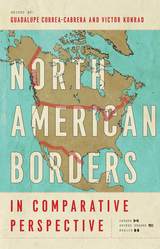 North American Borders in Comparative Perspective
Edited by Guadalupe Correa-Cabrera and Victor Konrad; Foreword by Alan Artibise
University of Arizona Press, 2020 The northern and southern borders and borderlands of the United States should have much in common; instead they offer mirror articulations of the complex relationships and engagements between the United States, Mexico, and Canada. In North American Borders in Comparative Perspectiveleading experts provide a contemporary analysis of how globalization and security imperatives have redefined the shared border regions of these three nations. This volume offers a comparative perspective on North American borders and reveals the distinctive nature first of the overportrayed Mexico-U.S. border and then of the largely overlooked Canada-U.S. border. The perspectives on either border are rarely compared. Essays in this volume bring North American borders into comparative focus; the contributors advance the understanding of borders in a variety of theoretical and empirical contexts pertaining to North America with an intense sharing of knowledge, ideas, and perspectives. Adding to the regional analysis of North American borders and borderlands, this book cuts across disciplinary and topical areas to provide a balanced, comparative view of borders. Scholars, policy makers, and practitioners convey perspectives on current research and understanding of the United States’ borders with its immediate neighbors. Developing current border theories, the authors address timely and practical border issues that are significant to our understanding and management of North American borderlands. The future of borders demands a deep understanding of borderlands and borders. This volume is a major step in that direction.
Contributors
Bruce Agnew
Donald K. Alper
Alan D. Bersin
Christopher Brown
Emmanuel Brunet-Jailly
Irasema Coronado
Guadalupe Correa-Cabrera
Michelle Keck
Victor Konrad
Francisco Lara-Valencia
Tony Payan
Kathleen Staudt
Rick Van Schoik
Christopher Wilson
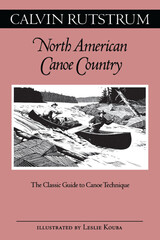 North American Canoe Country: The Classic Guide to Canoe Technique
Calvin Rutstrum
University of Minnesota Press, 2000 The essential resource on how to canoe, now back in print. Calvin Rutstrum’s fans have long known about his nuts-and-bolts approach to wilderness living. With this reissue of North American Canoe Country, a new generation of readers has the opportunity to learn time-tested secrets of a safe canoe adventure from a master outdoorsman. First published in 1964, North American Canoe Country is a complete treatise on the art of canoeing. Written as a guide for travelers who want to embark on self-sufficient trips deep into the wilderness, this book offers readers all the information they need to plan and undertake a canoe trip. Rutstrum gives the essentials on canoes, comparing birch-bark, wood, wood-and-canvas, and aluminum crafts. His paddling techniques are timeless-he describes strategies for rough waters and rapids, for boating alone or in tandem, including stroke diagrams. Portaging, safety procedures, direction finding, towing, and much more are systematically explained.
The North American Grasshoppers
Daniel Otte
Harvard University Press Having received such lavish praise for the first volume of his definitive taxonomic handbook, Daniel Otte now turns his attention to the bandwing grasshoppers. As before, the book includes:
– Highly detailed, full-color drawings of all species, including more than one color phase when appropriate;
– Illustrated keys and lists of principal recognition features;
– Information on distributional limits, habitat preferences, ecology, behavior, and life cycle;
– Excellent point-distribution maps;
– Pertinent references, taxonomic index, history of name changes, and an explanation of the characters used to derive phylogenies.
Like its predecessor, this volume will be useful to scientists in agriculture, environmental assessment, biogeography, grassland ecology, and insect taxonomy. It will also appeal to amateur naturalists.
 The North American Grasshoppers
Daniel Otte
Harvard University Press, 1981 Daniel Otte offers a comprehensive taxonomic treatise on all known species of grasshoppers from the Gulf of Panama to Alaska. Grasshoppers are a dominant form of life in most terrestrial habitats. The abundance of grasshoppers and the ease of obtaining them have brought about their extensive use in a wide variety of biological studies. It is probably fair to say that grasshoppers are biologically better understood than any equivalent group of insects. They were used in pioneering studies in genetics and are increasingly being used to test evolutionary, ecological, and physiological theories. Unfortunately, much of this work is still based on a poor classification, and many studies are hindered by difficulties which arise in identifying the species.
Now for the first time scientists are provided with:
– Illustrated keys and lists for distinguishing genera and species;
– Information on distributional limits, habitat preference, ecology, behavior, and life cycle;
– A list of pertinent references;
– Point distribution maps;
– A taxonomic index as well as a history of name changes.
But the book’s most spectacular feature is the author’s detailed drawings of all species in full color. The North American Grasshoppers will be especially useful to scientists in agriculture, environmental assessment, biogeography, grassland ecology, and insect taxonomy, and will also appeal to amateur naturalists. Undoubtedly, it will long stand as a definitive reference in its field.
North American Icelandic: The Life of a Language
Birna Arnbjornsdottir
University of Manitoba Press, 2006 North American Icelandic evolved mainly in Icelandic settlements in Manitoba and North Dakota and is the only version of Icelandic that is not spoken in Iceland. But North American Icelandic is a dying language with few left who speak it.North American Icelandic is the only book about the nature and development of this variety of Icelandic. It details the social and linguistic constraints of one specific feature of North American Icelandic phonology undergoing change, namely Flámæli, which is the merger of two sets of front vowels. Although Flámæli was once a part of traditional Icelandic, it was considered too confusing and was systematically eradicated from the language. But in North America, Flámæli use spread unchecked, allowing the rare opportunity of viewing the evolution of a dialect from its birth to its impending demise.
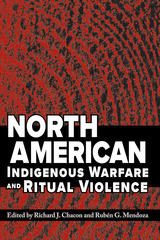 North American Indigenous Warfare and Ritual Violence
Edited by Richard J. Chacon and Rubén G. Mendoza
University of Arizona Press, 2007 Despite evidence of warfare and violent conflict in pre-Columbian North America, scholars argue that the scale and scope of Native American violence is exaggerated. They contend that scholarly misrepresentation has denigrated indigenous peoples when in fact they lived together in peace and harmony. In rebutting that contention, this groundbreaking book presents clear evidence—from multiple academic disciplines—that indigenous populations engaged in warfare and ritual violence long before European contact. In ten well-documented and thoroughly researched chapters, fourteen leading scholars dispassionately describe sources and consequences of Amerindian warfare and violence, including ritual violence. Originally presented at an American Anthropological Association symposium, their findings construct a convincing case that bloodshed and killing have been woven into the fabric of indigenous life in North America for many centuries.
The editors argue that a failure to acknowledge the roles of warfare and violence in the lives of indigenous North Americans is itself a vestige of colonial repression—depriving native warriors of their history of armed resistance. These essays document specific acts of Native American violence across the North American continent. Including contributions from anthropologists, archaeologists, historians, and ethnographers, they argue not only that violence existed but also that it was an important and frequently celebrated component of Amerindian life.
CONTENTS
Acknowledgments
Introduction
Richard J. Chacon and Rubén G. Mendoza
1. Traditional Native Warfare in Western Alaska
Ernest S. Burch Jr.
2. Barbarism and Ardour of War from the Tenderest Years”: Cree-Inuit Warfare in the Hudson Bay Region
Charles A. Bishop and Victor P. Lytwyn
3. Aboriginal Warfare on the Northwest Coast: Did the Potlatch Replace Warfare?
Joan A. Lovisek
4. Ethnohistoric Descriptions of Chumash Warfare
John R. Johnson
5. Documenting Conflict in the Prehistoric Pueblo Southwest
Polly Schaafsma
6. Cahokia and the Evidence for Late Pre-Columbian War in the North American Midcontinent
Thomas E. Emerson
7. Iroquois-Huron Warfare
Dean R. Snow
8. Desecrating the Sacred Ancestor Temples: Chiefly Conflict and Violence in the American Southeast
David H. Dye and Adam King
9. Warfare, Population, and Food Production in Prehistoric Eastern North America
George R. Milner
10. The Osteological Evidence for Indigenous Warfare in North America
Patricia M. Lambert
11. Ethical Considerations and Conclusions Regarding Indigenous Warfare and Violence in North America
Richard J. Chacon and Rubén G. Mendoza
References
About the Contributors
Index
North American Monsters: A Contemporary Legend Casebook
David J. Puglia
Utah State University Press, 2021 Mining a mountain of folklore publications, North American Monsters unearths decades of notable monster research. Nineteen folkloristic case studies from the last half-century examine legendary monsters in their native habitats, focusing on ostensibly living creatures bound to specific geographic locales.
A diverse cast of scholars contemplate these alluring creatures, feared and beloved by the communities that host them—the Jersey Devil gliding over the Pine Barrens, Lieby wriggling through Lake Lieberman, Char-Man stalking the Ojai Valley, and many, many more. Embracing local stories, beliefs, and traditions while neither promoting nor debunking, North American Monsters aspires to revive scholarly interest in local legendary monsters and creatures and to encourage folkloristic monster legend sleuthing.
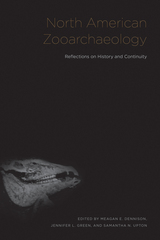 North American Zooarchaeology: Reflections on History and Continuity
Meagan Elizabeth Dennison
University of Tennessee Press, 2023 Walter E. Klippel came to the University of Tennessee in 1977 as an assistant professor of anthropology. In the forty years that followed, he supervised and mentored countless students in archaeology and biological anthropology, published more than fifty journal articles and book chapters, and assembled a zooarchaeological comparative collection of national significance. During his tenure, Klippel’s important contributions to the field of zooarchaeology would impact not only his students and colleagues but the development of zooarchaeological research as a whole. Even after his retirement in 2017, Klippel’s influence is readily apparent in the studies of his contemporaries. North American Zooarchaeology: Reflections on History and Continuity is their tribute to his work.
Developed by friends, students, and colleagues of Walter Klippel, North American Zooarchaeology presents a wide-ranging collection of essays through the lens of his remarkable career. Each chapter of the volume represents a prevailing theme notable in Klippel’s research, including geological and landscape contexts, taphonomy, and the incorporation of actualistic methodologies and new technologies into zooarchaeological analyses. The diversity of topics represented across the ten chapters showcase just how extensive Klippel’s research interests are and suggest how much contemporary zooarchaeology owes to his vision. The authors take up this broad palette to explore the various ways in which the framework of zooarchaeology can be used and applied in nontraditional settings.
With a foreword by Bonnie Styles and Bruce McMillan, longtime friends and colleagues of Walter Klippel, this volume reflects on the history and continuity of zooarchaeology in North America and honors one of its most notable contemporary contributors. With its multifaceted approach, this volume is sure to appeal to a broad array of practitioners in the field of zooarchaeology.
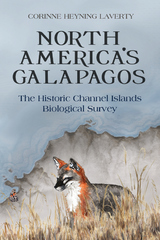 North America's Galapagos: The Historic Channel Islands Biological Survey
Corinne Heyning Laverty
University of Utah Press, 2019 North America’s Galapagos: The Historic Channel Islands Biological Survey recounts the story of a group of researchers, naturalists, adventurers, cooks, immigrants, and scientifically curious teenagers who came together in the late 1930s to embark upon a series of ambitious expeditions never before, or since, attempted. Their mission: to piece together the broken shards of the Channel Islands’ history and evolution. California’s eight Channel Islands, sometimes called “North America’s Galapagos,” each support unique ecosystems with varied flora and fauna and differing human histories. The thirty-three men and women who set out to explore the islands hoped to make numerous discoveries that would go down in history along with their names. More than eighty years ago, a lack of funds and dearth of qualified personnel dogged the pre-WWII expeditions, but it was only after America entered the war and the researchers were stranded on one of the islands that the survey was aborted, their work left for future scientists to complete. This untold saga of adventure, discovery, and goals abandoned is juxtaposed against the fresh successes of a new generation of Channel Island scholars. Engagingly written, North America’s Galapagos illuminates the scientific process and reveals remarkable modern discoveries that are rewriting archaeological textbooks and unraveling the answer to the age-old question: how and when were the Americas populated? Anyone interested in the work conducted behind closed museum doors will want to read this book—so will history buffs, environmentalists, scientists, and general readers curious about our world. Visit the author's website: https://www.channelislandscalifornia.com/
North and South: On Polish Politics, History and Culture
Marek A. Cichocki
Angelicum University Press Fundacja Swietego Mikolaja, 2025 In North and South: Essays on Polish Culture and History Marek Cichocki discusses Poland's role in the past and its potential today and in the future as a country placed between the Roman South and barbarian North. This original and refreshing way of viewing the place of Poland in historical and contemporary politics opens new perspectives of understanding Europe and its cultural and political heritage.
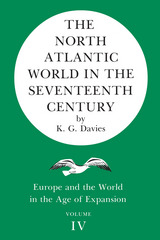 The North Atlantic World in the Seventeenth Century
K.G. Davies
University of Minnesota Press, 1976
The North Atlantic World in the Seventeenth Century was first published in 1974. Minnesota Archive Editions uses digital technology to make long-unavailable books once again accessible, and are published unaltered from the original University of Minnesota Press editions.
In his preface the author writes: "Europe's style was both courageous and ignoble, Europe's achievement both magnificent and appalling. There is less need now that Europe's hegemony is over, for pride or shame to color historical judgments." In that candid vein Mr. Davies provides a balanced and impartial history of British, French, and Dutch beginnings in North America, the Caribbean, and West Africa to the end of the seventeenth century. He contrasts two styles of empire: the planting of trading posts in order to gather fur, fish, and slaves; and the planting of people in colonies of settlement to grow tobacco and sugar. He shows that the first style, involving little outlay of capital, was favored by European merchants; the second, by rulers and landlords. In his conclusion he examines the impact made by the Europeans on the people they traded with and expropriated, and assesses the diplomatic, economic, and cultural repercussions of the North Atlantic on Europe itself.
"Should provide valuable supplementary reading in courses in British imperial and American colonial history, as well as a source of information for those who teach them." –History.
North by 2020: Perspectives on Alaska’s Changing Social-Ecological Systems
Edited by Amy Lauren Lovecraft and Hajo Eicken
University of Alaska Press, 2011 Originating from a series of workshops held at the Alaska Forum of the Fourth International Polar Year, this interdisciplinary volume addresses a host of current concerns regarding the ecology and rapid transformation of the arctic. Concentrating on the most important linked social-ecological systems, including fresh water, marine resources, and oil and gas development, this volume explores opportunities for sustainable development from a variety of perspectives, among them social sciences, natural and applied sciences, and the arts. Individual chapters highlight expressions of climate change in dance, music, and film, as well as from an indigenous knowledge–based perspective.
 north by north/west: (an attention to frequency)
Chris Campanioni
West Virginia University Press, 2025 north by north/west is a hybrid work of creative nonfiction assembled as several iterative sequences—a discontinuous itinerary—of exile. Harnessing both montage and collage to represent the incohesive experience of being between cultures, categories, and language, this book is a personal, critical, and autoethnographic exploration of diasporic identity formation and creative expression amidst the cultural and political impacts of Cold War colonialism and fragmentation. As the narrator begins work on a rough translation of the 1959 film North by Northwest, focal points surface through textual correspondences with distant coordinates, shifting between close readings of Whitney Houston’s early music videos, current events reportage, illness journals, eighties spy movies, the most recent solar eclipse, Alfred Hitchcock’s unproduced films, Cold War “stay-behind operations,” an ill-fated party at the Festival de Cannes, and family accounts of migration. These meticulously arranged narrative threads—harnessing elements of a novel alongside poetry, photographs, and field notes—attempt to discompose the epistemology of the West/Global North in order to conceptualize a genre of work by the children of exiles who have been called “the post-dictatorship generation.”
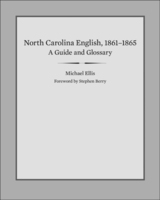 North Carolina English, 1861-1865: A Guide and Glossary
Michael E. Ellis
University of Tennessee Press, 2013 In North Carolina English, 1861–1865, Michael E. Ellis offers an Oxford English Dictionary–like take on regional language based on more than two thousand letters and diaries composed by North Carolinians during the Civil War. These documents are part of a larger project, the Corpus of American Civil War Letters (CACWL), aimed at locating, photographing, and transcribing letters written during the period from all parts of the country. With little formal education, the correspondents were men and women who wrote “by ear,” often reproducing their spoken language through unconventional spellings and grammatical forms, as well as regional or archaic words and usages.
The core of the book is an alphabetically arranged glossary of words and expressions characteristic of mid–nineteenth century North Carolina, each containing excerpts from the letters themselves to illustrate meaning and usage. While the majority of the writers were Confederate soldiers and their family members, the collection also includes letters from slaves, former slaves, and African Americans from North Carolina serving in the Union Army. The soldiers’ letters rarely contain details about battles, except to list the names of relatives or neighbors among the killed or wounded. After a battle, a soldier might simply write, “the Like of ded men an horses I never saw before” or “we hav lost a heep of men and kild a heep of yankeys.” As Joel Howard of Lincoln County wrote home in June 1863, “I have bin in the ware and Saw the ware and heard tell of the ware till I have got tired of it. if I Could get clear of this ware I neve[r] want to Read of A nother.”
Food is perhaps the most common topic, followed by illness. Numerous terms relate to farming, clothing, religion, and the effects of the war itself, as well as entries for expressions that have long since disappeared from American English: in the gants, on the goose, and up the spout.
In addition to the glossary, Ellis offers an extensive overview of North Carolina English of the period, delves into the social background of the letter writers, and provides invaluable guidance to the ways in which Civil War letters should be read. A unique window into a largely neglected corner of our extraordinarily rich and regionally distinct language, this volume will prove an indispensable reference for scholars and students seeking to reconstruct the world of the common Civil War soldier.
 The North Carolina Shore and Its Barrier Islands: Restless Ribbons of Sand
Orrin H. Pilkey, William J. Neal, Stanley R. Riggs, Craig A. Webb, David M. Bush, Deborah F. Pilkey, Jane Bullock, and Brian A. Cowan
Duke University Press, 1998 The North Carolina Shore and Its Barrier Islands is the latest volume in the series, Living with the Shore. Replacing an earlier volume, this thoroughly new book provides a diverse guide to one of America’s most popular shorelines. As is true for all books in the series, it is based on the premise that understanding the changing nature of beaches and barrier islands is essential if we are to preserve them for future generations. Evidence that the North Carolina shore is changing is never hard to find, but recently the devastation wrought by Hurricane Fran and the perilous situation of the historic lighthouse at Cape Hatteras have reminded all concerned of the fragility of this coast. Arguing for a policy of intelligent development, one in which residential and commercial structures meet rather than confront the changing nature of the shore, the authors have included practical information on hazards of many kinds—storms, tides, floods, erosion, island migration, and earthquakes. Diagrams and photographs clearly illustrate coastal processes and aid in understanding the impact of hurricanes and northeasters, wave and current dynamics, as well as pollution and other environmental destruction due to overdevelopment. A chapter on estuaries provides related information on the shores of back barrier areas that are growing in popularity for recreational residences. Risk maps focus on the natural hazards of each island and together with construction guidelines provide a basis for informed island management. Lastly, the dynamics of coastal politics and management are reviewed through an analysis of the controversies over the decision to move the Cape Hatteras lighthouse and a proposed effort to stabilize Oregon Inlet. From the natural and historic perspective of the opening chapters to the regional discussions of individual barrier islands, this book is both a primer on coastal processes for the first time visitor as well as a guide to hazard identification for property owners.
 North Carolina's Experience during the First World War
Shepherd W. McKinley
University of Tennessee Press, 2018 As America’s involvement in World War I approached its centennial, state-level histories and commemoration of the Great War abounded. While North Carolina’s role in the First World War has yet to attract such intense scholarly interest, a much-needed picture of the wartime Tar Heel state has nevertheless begun to emerge from newly published firsthand accounts of the war and sustained attention to the state’s wartime politicians.
The essays in North Carolina’s Experience during the First World War, skillfully edited by Shepherd W. McKinley and Steven Sabol, provide in-depth interpretation of the state’s involvement in WWI. As topics range from soldiers and the military, to women and the home front, to politics and labor issues, a detailed picture emerges of the war's influence on the developing modern state and the ascendant bureaucratic social order.
As this anthology makes clear, wars provide the opportunity for unsettling old patterns of power and culture. Unlike the Civil War and Second World War, however, the First World War would have relatively little effect on North Carolina’s race relations, class arrangements, gender roles, economic order, and political leadership. What changed more dramatically was the relationship between business and government. Indeed, government took an unprecedented place in the fabric of society and the economy as the “war to end all wars” left its indelible mark on the individuals and families who served.
SHEPHERD W. MCKINLEY is a senior lecturer in the Department of History at the University of North Carolina at Charlotte. He is the author of Stinking Stones and Rocks of Gold: Phosphate, Fertilizer, and Industrialization in Postbellum South Carolina and North Carolina: New Directions for an Old Land.
STEVEN SABOL is an associate professor of history at the University of North Carolina at Charlotte. He is the author of Russian Colonization and the Genesis of Kazak National Consciousness.
A North Country Almanac: Reflections of an Old-School Conservationist in a Modern World
Thomas C Bailey
Michigan State University Press, 2018 A North Country Almanac: Reflections of an Old-School Conservationist in a Modern World includes the musings of an independent mind on wilderness, the conservation ethic, and the joys of loving the outdoors. Although a lifelong conservationist, Thomas C. Bailey has never unquestioningly accepted environmental dogma. The essays here often challenge familiar assumptions about stewardship of natural resources. The former National Park ranger, fishing guide, and conservancy director offers a rich variety of perspectives on an interesting array of topics, returning always to his fundamental belief that conservation pioneers such as John Muir, Theodore Roosevelt, and Aldo Leopold had it right when they affirmed Walt Whitman’s observation that “the secret of making the best person . . . is to grow in the open air and to eat and sleep with the earth.”
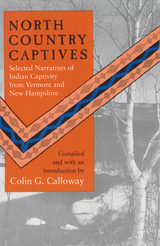 North Country Captives: Selected Narratives of Indian Captivity from Vermont and New Hampshire
Edited by Colin G. Calloway
University Press of New England, 1992 Revealing firsthand narratives of Indian captivity from eighteenth-century New Hampshire and Vermont. Narratives of Europeans who experienced Indian captivity represent one of the oldest genres of American literature. They are often credited with establishing the stereotype of Indians as cruel and bloodthirsty. While early southern New England accounts were heavily influenced by a dominant Puritan interpretation which had little room for individual and cultural distinctions, later northern New England narratives show growing independence from this influence. The eight narratives selected for this book challenge old stereotypes and provide a clearer understanding of the nature of captive taking. Indians used captives to replace losses in their tribes and families, and also to participate in the French and British ransom market. These stories portray Indian captors as individuals with a unique culture and offer glimpses of daily life in frontier communities. Calloway complements them with valuable historical background material. His book will appeal especially to readers interested in Native American peoples and life on the north country frontier of Vermont and New Hampshire.
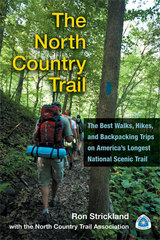 The North Country Trail: The Best Walks, Hikes, and Backpacking Trips on America’s Longest National Scenic Trail
Ron Strickland with the North Country Trail Association
University of Michigan Press, 2013 The North Country Trail is the longest of America’s eleven congressionally designated National Scenic Trails. Winding through seven states—New York, Pennsylvania, Ohio, Michigan, Wisconsin, Minnesota, and North Dakota—the NCT’s 4,600 miles attract more than one million visitors annually. These hikers are treated to a smorgasbord of Upper Midwest hiking featuring everything from urban strolls to backcountry adventure through mountains, rivers, prairies, and shoreline. This book is the definitive guide for NCT hikers—whether first-timers, seasoned backpackers, or any level in between—who wish to maximize their experience on this splendid trail. In addition to a full overview of the trail’s tread in each state, the guide describes in detail forty of the NCT’s premier segments, with helpful information including easy-to-read trail descriptions, physical and navigation difficulties, trail highlights, hiking tips, and precise maps incorporating the latest GPS technology.
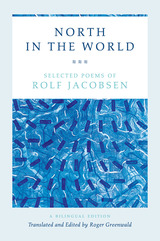 North in the World: Selected Poems of Rolf Jacobsen, A Bilingual Edition
Rolf Jacobsen
University of Chicago Press, 2002 North in the World presents 121 poems by Rolf Jacobsen (1907-1994), one of Norway's greatest modern poets. Garnering the highest praise of critics, Jacobsen won many of Norway's and Sweden's most prestigious literary awards, including the Swedish Academy's Dobloug Prize and the Grand Nordic Prize, also known as the "Little Nobel." But he also has earned a wide popular audience, because ordinary readers can understand and enjoy the way he explores the complex counterpoint of nature and technology, progress and self-destruction, daily life and cosmic wonder.
Drawing from all twelve of his books, and including one poem collected posthumously, North in the World offers award-winning English translations of Jacobsen's poems, accompanied by the original Norwegian texts. The translator, the American poet Roger Greenwald, worked with Jacobsen himself to correct errors that had crept into the Norwegian texts over the years. An in-depth introduction by Greenwald highlights the main features of Jacobsen's poetry, and extensive endnotes, as well as indexes to titles and first lines in both languages, enhance the usefulness of the book for general readers and scholars alike. The result is the definitive bilingual edition of Jacobsen's marvelous poetry.
 North Korea and Nuclear Weapons: Entering the New Era of Deterrence
Sung Chull Kim and Michael D. Cohen, Editors
Georgetown University Press, 2017 North Korea is perilously close to developing strategic nuclear weapons capable of hitting the United States and its East Asian allies. Since their first nuclear test in 2006, North Korea has struggled to perfect the required delivery systems. Kim Jong-un’s regime now appears to be close, however. Sung Chull Kim, Michael D. Cohen, and the volume contributors contend that the time to prevent North Korea from achieving this capability is virtually over; scholars and policymakers must turn their attention to how to deter a nuclear North Korea. The United States, South Korea, and Japan must also come to terms with the fact that North Korea will be able to deter them with its nuclear arsenal. How will the erratic Kim Jong-un behave when North Korea develops the capability to hit medium- and long-range targets with nuclear weapons? How will and should the United States, South Korea, Japan, and China respond, and what will this mean for regional stability in the short term and long term? The international group of authors in this volume address these questions and offer a timely analysis of the consequences of an operational North Korean nuclear capability for international security.
North of 53°: The Wild Days of the Alaska-Yukon Mining Frontier, 1870-1914
William R. Hunt
University of Alaska Press, 2009 “Saints and sinners, whores and housewives, swindlers and laborers alike attempted a hasty adjustment to novel conditions in a land that seemed strange and forbidding,” writes William R. Hunt in his narrative history of Alaska mining. Hunt offers an exciting anecdotal account that follows hungry prospectors, canny shopkeepers, hopeful hangers-on, and crafty lawyers through the gold mining camps and temporary towns of nineteenth-century Alaska. Hunt has hiked and mined many of the same claims he writes about in the book, and North of 53 offers a rare glimpse into far-flung communities from Skagway to the Yukon to the deep interior of Alaska to the Ididarod and Nome on the Bering Sea.
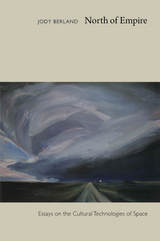 North of Empire: Essays on the Cultural Technologies of Space
Jody Berland
Duke University Press, 2009 For nearly two decades, Jody Berland has been a leading voice in cultural studies and the field of communications. In North of Empire, she brings together and reflects on ten of her pioneering essays. Demonstrating the importance of space to understanding culture, Berland investigates how media technologies have shaped locality, territory, landscape, boundary, nature, music, and time. Her analysis begins with the media landscape of Canada, a country that offers a unique perspective for apprehending the power of media technologies to shape subjectivities and everyday lives, and to render territorial borders both more and less meaningful. Canada is a settler nation and world power often dwarfed by the U.S. cultural juggernaut. It possesses a voluminous archive of inquiry on culture, politics, and the technologies of space. Berland revisits this tradition in the context of a rich interdisciplinary study of contemporary media culture. Berland explores how understandings of space and time, empire and margin, embodiment and technology, and nature and culture are shaped by broadly conceived communications technologies including pianos, radio, television, the Web, and satellite imaging. Along the way, she provides a useful overview of the assumptions driving communications research on both sides of the U.S.-Canadian border, and she highlights the distinctive contributions of the Canadian communication theorists Harold Innis and Marshall McLuhan. Berland argues that electronic mediation is central to the construction of social space and therefore to anti-imperialist critique. She illuminates crucial links between how space is traversed, how it is narrated, and how it is used. Making an important contribution to scholarship on globalization, Berland calls for more sophisticated accounts of media and cultural technologies and their complex “geographies of influence.”
North of Patagonia
Johnny Payne
Northwestern University Press, 2001 This darkly humorous fourth novel by Johnny Payne takes us from the blues clubs and boxing rings of Chicago to the world of Kentucky harness racing and the hedonism of South Beach. Its characters--among them the black elites of Chicago and the white working stiffs of Hooftown--live by their wits, able to outfox everyone but themselves, and all the time borne up by big hopes and big hearts.
North of Slavery: The Negro in the Free States
Leon F. Litwack
University of Chicago Press, 1965 ". . . no American can be pleased with the treatment of Negro Americans, North and South, in the years before the Civil War. In his clear, lucid account of the Northern phase of the story Professor Litwack has performed a notable service."—John Hope Franklin, Journal of Negro Education
"For a searching examination of the North Star Legend we are indebted to Leon F. Litwack. . . ."—C. Vann Woodward, The American Scholar
The North Reports the Civil War
J Cutler Andrews
University of Pittsburgh Press, 1985 Andrews presents the drama of the Civil War as seen through the eyes of reporters’ own diaries, dispatches, and printed news stories.
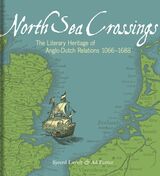 North Sea Crossings: The Literary Heritage of Anglo-Dutch Relations 1066–1688
Sjoerd Levelt and Ad Putter
Bodleian Library Publishing, 2022 North Sea Crossings sheds new light on the literature and art of a pivotal period in European history by exploring the cultural relationship between speakers of Dutch and speakers of English in England and the Dutch Low Countries.
This richly illustrated book tells the story of cultural exchange between the people of the Low Countries and England in the Middle Ages and the Early Modern period, revealing how Anglo-Dutch connections changed the literary landscape on both sides of the North Sea.
Ranging from the Norman Conquest of 1066 to the “Glorious Revolution” of 1688, North Sea Crossings uncovers the lasting impact of contacts and collaborations between Dutch and English speakers on historical writing, map-making, manuscript production, and early printing. The literary heritage of Anglo-Dutch relations is explored and lavishly illustrated through a unique collection of manuscripts, early prints, maps, and other treasures from the Bodleian Library.
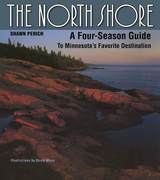 North Shore: A Four-Season Guide to Minnesota’s Favorite Destination
Shawn Perich
University of Minnesota Press, 2003 The North Shore leads you along the wild and beautiful 150-mile inland coast that stretches from Duluth to the Canadian border. It guides you through historic sites, wilderness trails, and the seven state parks you’ll find along the way. Read The North Shore as you plan your trip; then take it along and enjoy the milepost-by-milepost descriptions of Lake Superior’s scenic splendor. Fascinating details of the history, the people, and the events on the Shore offer you a multitude of options for making your trip more enjoyable. The North Shore guides you to breathtaking vistas and exciting adventures. Explore river gorges and cascading waterfalls. Hike scenic wilderness trails. Experience four seasons of color and light. Ski miles of freshly groomed tracks. Fish Lake Superior and the tumbling streams that feed it. Explore pathways of early settlers. The North Shore will help you plan adventures for all the seasons-from one-day excursions to two-week vacations. It’s a great gift for everyone who loves Minnesota’s favorite destination. Shawn Perich is a free-lance writer who lives on the North Shore. His writing has been featured in numerous regional and national publications. He served as editor of the Cook County News-Herald in Grand Marais and as editor for Fins and Feathers magazine. Shawn and Vikki live in Hovland, Minnesota, on the edge of Lake Superior, with their yellow labrador, Casey.
 North Shore Place Names: Kahuku to Kaena
John R. K. Clark
University of Hawaii Press, 2014 In North Shore Place Names: Kahuku to Ka`ena, ocean expert John Clark continues his fascinating look at Hawai`i’s past as told through the stories hidden in its place names. This time the author takes the reader on a historical tour of the North Shore of O`ahu, from Kahuku (the north point of the island) to Ka`ena (the west point of the island), and uncovers the everyday lives of the residents, especially prior to the plantation era. Similar to his 2011 book, Hawaiian Surfing, to research this book Clark tapped into the Ho`olaupa`i online database (www.nupepa.org): a vast archive of 125,000 pages of Hawaiian-language newspapers published from 1834 to 1948. The author collected an enormous number of references to specific North Shore locations and presents them in an easy-to-use dictionary-style format, which includes original passages in Hawaiian with English translations by Keao NeSmith. Discover these highlights and others in this unique look at O`ahu’s North Shore:
• Letters from the longtime principal of the girls’ school that eventually gave Hale`iwa its name.
• Examples of the clash of cultures between traditional Hawaiian practices and Christianity, as evident in accounts of hula performances.
• Old-time traffic accidents—one that involved Queen Lili`uokalani when she was trapped by her overturned horse-drawn carriage—and unusual train fatalities.
• Notices of auctions of Government lands, property trespasses, stolen sheep, and stray horses.
An invaluable resource for anyone interested in Hawai`i history and the Hawaiian language, North Shore Place Names brings to life the names, places, and events of the historic North Shore community.
 North Vietnam and the Pathet Lao: Partners in the Struggle for Laos
Paul F. Langer and Joseph J. Zasloff
Harvard University Press, 1970 Laos is a major arena of international confrontation despite the Geneva Accords of 1962. Yet there is a dearth of published material on Laos, and the crucial issue of North Vietnam's role in that country has hardly been examined. This important study illuminates the North Vietnamese-Pathet Lao partnership, an understanding of which is so critical to the search for peace in Indochina.
The authors reconstruct dispassionately the politics of the Lao revolution since its beginning after the Second World War. Focusing on North Vietnam's past and present role in Laos they trace the origins, evolution, organization, and leadership of the Pathet Lao organization. They demonstrate that the war in Laos is really three wars--Vietnamese traditional attempts to assert hegemony over regions of Laos important to North Vietnam's security; an extension of the struggle in South Vietnam; and a civil war between Lao Communists and anti-Communists. They show that Hanoi's active role springs from its interest in protecting its borders, gaining access to South Vietnam, and establishing a politically congenial regime in Laos. They conclude that the Viet Minh were a key factor in the genesis of the Pathet Lao and that the Vietnamese have continued to provide guidance and vital assistance to the revolutionary organization which now controls a significant portion of the country. On the other hand, the authors point out that the Pathet Lao share common interests with the North Vietnamese Communists and that, from their own perspective, they have not compromised their legitimacy as a nationalist movement by their heavy dependence on Hanoi.
Langer and Zasloff, experienced analysts of Southeast Asian affairs, conducted extensive field research in Laos. They interviewed a wide variety of persons with intimate knowledge of the Lao Communist movement, including former Pathet Lao and North Vietnamese military and civilian personnel. They talked with Lao, in and out of the Government, who had gone to school with their future Lao or Vietnamese adversaries, were linked to them by family ties, had been in the same political camp, or had confronted them at the conference table. They interviewed specialists on Laos and Vietnam, among them scholars, journalists, officials of international agencies, and foreign government officials. They examined a range of internal Pathet Lao and North Vietnamese documents diaries, letters, party directives, and training guides, as well as textbooks, newspapers, propaganda leaflets, and general literature. They studied Pathet Lao, Vietnamese, Thai, Cambodian, Chinese, and Soviet radio broadcasts and consulted printed materials about Laos from Hanoi, Peking, and Moscow.
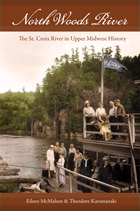 North Woods River: The St. Croix River in Upper Midwest History
Eileen M. McMahon and Theodore J. Karamanski
University of Wisconsin Press, 2009 The St. Croix River, the free-flowing boundary between Wisconsin and Minnesota, is a federally protected National Scenic Riverway. The area’s first recorded human inhabitants were the Dakota Indians, whose lands were transformed by fur trade empires and the loggers who called it the “river of pine.” A patchwork of farms, cultivated by immigrants from many countries, followed the cutover forests. Today, the St. Croix River Valley is a tourist haven in the land of sky-blue waters and a peaceful escape for residents of the bustling Minneapolis–St. Paul metropolitan region.
North Woods River is a thoughtful biography of the river over the course of more than three hundred years. Eileen McMahon and Theodore Karamanski track the river’s social and environmental transformation as newcomers changed the river basin and, in turn, were changed by it. The history of the St. Croix revealed here offers larger lessons about the future management of beautiful and fragile wild waters.
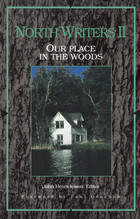 North Writers II: Our Place in the Woods
John Henricksson
University of Minnesota Press, 1997 A new collection of writing by contemporary Minnesota writers. This companion volume to the widely praised North Writers: A Strong Woods Collection features the work of a variety of authors-some new voices, some old friends-all of them writing about life in northern Minnesota. The essays included in North Writers II explore the special relationship that exists between the people of northern Minnesota and the rugged yet beautiful landscape that surrounds them. These writers consider the things that make living in the far north unique—the red earth of the Iron Range, the spectacular and forbidding wildness of Lake Superior’s North Shore, the elemental nature of climate and wilderness that tests one’s mettle. There are also the farms and towns of northern Minnesota, with their heritage of self-reliance and the insight that comes with it. Taken together, these essays provide an exploration of the character, the essence, the spirit of this northern country, as well as the mystique it holds for those from more hospitable climes.
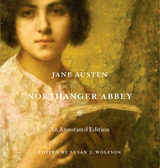 Northanger Abbey: An Annotated Edition
Jane Austen
Harvard University Press, 2014 “Jane Austen lovers worldwide will cherish these books...Prepare yourself for a major treat.”
—Christian Science Monitor
If adventures will not befall a young lady in her own village, she must seek them abroad (or in a good book).
Despite being the first novel she completed in full, Jane Austen’s Northanger Abbey was published posthumously in 1817—a fitting fate for a story about late discoveries. Catherine Morland is Austen’s youngest, most impressionable heroine, a connoisseur of Gothic novels with a tendency to confuse fact with fiction. This extraordinary, annotated edition will appeal to casual readers, “Friends of Jane,” and everyone eager to fall under a great book’s spell.
For beginners and experts alike—immerse yourself in Jane Austen’s world: For the modern reader, our annotations provide clear explanations and illuminating context for period language and references. For the enthusiast, they offer fresh, exciting analysis—a passionate friend in the margins.
A work of art—the ideal gift: Perfect for gifting, collecting, and cherishing, this grand hardcover (9” x 9.5”) brims with hundreds of full-color illustrations that vividly recreate Austen’s Bath—its fashions, carriages, libraries, and estates.
The story: Seventeen-year-old Catherine Morland is dreamy, naïve, and fond of Gothic novels. Though a tomboy in her youth, she is “in training for a heroine” when we meet her. When she’s invited to stay with the wealthy Allen family in Bath, her overactive imagination leads her to badly misinterpret events and places. As she learns to live outside the pages of her favorite books, Catherine matures and realizes her place in the world—finding true love in the process.
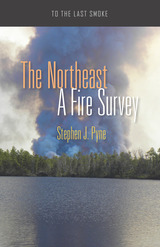 The Northeast: A Fire Survey
Stephen J. Pyne
University of Arizona Press, 2019 Repeatedly, if paradoxically, the Northeast has led national developments in fire. Its intellectuals argued for model preserves in the Adirondacks and at Yellowstone, oversaw the first mapping of the American fire scene for the 1880 census, staffed the 1896 National Academy of Sciences forest commission that laid down guidelines for the national forests, and spearheaded legislation that allowed those reserves to expand by purchase. It trained the leaders who staffed those protected areas and produced most of America’s first environmentalists.
The Northeast has its roster of great fires, beginning with dark days in the late 18th century, followed by a chronicle of conflagrations continuing as late as 1903 and 1908, with a shocking after-tremor in 1947. It hosted the nation’s first forestry schools. It organized the first interstate (and international) fire compact. And it was the Northeast that pioneered the transition to the true Big Burn—industrial combustion—as America went from burning living landscapes to burning lithic ones.
In this new book in the To the Last Smoke series, renowned fire expert Stephen J. Pyne narrates this history and explains how fire is returning to a place not usually thought of in America’s fire scene. He examines what changes in climate and land use mean for wildfire, what fire ecology means for cultural landscapes, and what experiments are underway to reintroduce fire to habitats that need it. The region’s great fires have gone; its influence on the national scene has not.
The Northeast: A Fire Survey samples the historic and contemporary significance of the region and explains how it fits into a national cartography and narrative of fire.
Included in this volume:
How the region shaped America’s understanding and policy toward fire
How fire fits into the region today and what that means for the country overall
What changes in climate, land use, and institutions may mean for northeastern fire, both wild and tame
 Northeast African Studies 15, no. 1
Lee V. Cassanelli
Michigan State University Press Journals, 2015 IN THIS ISSUE
Articles
Fikru Negash Gebrekidan, "Ethiopia in Black Studies from W. E. B. Du Bois to Henry Louis Gates, Jr."
Hugo Ferran, "The Musical Expression of Identity in Maale Patrilineal Society (Southern Ethiopia)"
Carolina De Rosis, "The Organization of the Fight against HIV/AIDS in Ethiopia: Rallying around Afflictions"
Kevin K. Frank, "Ripeness and the 2008 Djibouti-Eritrea Border Dispute"
Virginia Luling, Anita S. Adam, "Continuities and Changes: Marriage in Southern Somalia and the Diaspora"
InMemoriam
Mohamed Haji Mukhtar, "A Remembrance of Salah Mohamed Ali and Aw Jama Umar Isse: The Passing of a Generation in Somali Studies"
Forum
Messay Kebede, "The Ethiopian Student Movement: A Rejoinder to Bahru Zewde’s The Quest for Socialist Utopia"
Bahru Zewde, "Response to Messay Kebede’s Rejoinder"
Book Reviews
Localising Salafism: Religious Change among Oromo Muslims in Bale, Ethiopia, by Terje Østebo, reviewed by Haggai Erlich
The Conscript: A Novel of Libya’s Anticolonial War, by Gebreyesus Hailu, translated by Ghirmai Negash, reviewed by Carmela Garritano
British Somaliland: An Administrative History, 1920–1960, by Brock Millman, reviewed by Lidwien Kapteijns
Regional Integration, Identity, and Citizenship in the Greater Horn of Africa, edited by Kidane Mengisteab and Redie Bereketeab, reviewed by Joseph L. Venosa
Northeast African Studies 15, no. 2
Lee V. Cassanelli
Michigan State University Press Journals, 2015 IN THIS ISSUE
Articles
Enrico Ille, "The Nuba Mountains between Coercion and Persuasion during Mahdist Rule (1881–98)"
Meron Zeleke, "Cosmopolitan Youth Religious Movements in Ethiopia: Ethiopian Orthodox Täwahədo Youth as Vanguard and Self-Appointed Masters of Ceremony"
Antonio M. Morone, "The Unsettled Southern Ethiopian- Somali Boundary on the Eve of Decolonization: Political Confrontation and Human Interactions in the Ogaadeen Borderland"
Hannah Whittaker, "A New Model Village? Nairobi Development and the Somali Question in Kenya, c. 1915–17"
In Memoriam
Faisal Roble, "Remembering Said S. Samatar"
Book Review
Slavery and Emancipation in Islamic East Africa: From Honor to Respectability, by Elisabeth McMahon, reviewed by Chris Conte
 Northeast African Studies 16, no. 1
Lee V. Cassanelli
Michigan State University Press Journals, 2016 IN THIS ISSUE
From the Editor
Articles
Stefano Bellucci, "The 1974 Ethiopian Revolution at 40: Social, Economic, and Political Legacies"
Berthold Unfried, "Friendship and Education, Coffee and Weapons: Exchanges between Socialist Ethiopia and the German Democratic Republic"
Abera Yemane-ab, “'Land to the Tiller': Unrealized Agenda of the Revolution"
Samuel Andreas Admasie, "Historicizing Contemporary Growth: The Ethiopian Revolution, Social-Structural Transformation, and Capitalist Development"
John Markakis, "The Revolution and the Scholars"
Elleni Centime Zeleke, "When Social Science Concepts Become Neutral Arbiters of Social Conflict: Reading the Ethiopian Federal Elections of 2005 through the Ethiopian Student Movement of the 1960s and 1970s"
Eyob Balcha Gebremariam, Linda Herrera, "On Silencing the Next Generation: Legacies of the 1974 Ethiopian Revolution on Youth Political Engagement"
Bitania Tadesse, "Revolutionary Ethiopia through the Lens of the Contemporary Film Industry"
Kiflu Tadesse, "Some Thoughts about the Ethiopian Left"
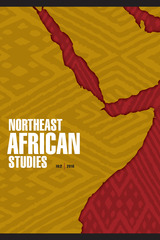 Northeast African Studies 16, no. 2
Lee V. Cassanelli
Michigan State University Press Journals, 2016 IN THIS ISSUE
Articles
Fantahun Ayele, "The Northwestern Command’s Response to Insurgent Assaults on Dabat, Ethiopia"
Serge D. Elie, "Communal Identity Transformation in Soqotra: From Status Hierarchy to Ethnic Ranking"
Esubalew Belay Fanta, "The British on the Ethiopian Bench: 1942–1944"
A. Osman Farah, "The Justice of Improving Security and Confronting Poverty: The Role of Transnational NGOs and Communities in Somalia"
Review Essay
Christopher Day, "The Sudans: Macrohistory and Micropolitics"
Book Reviews
The Oromo and the Christian Kingdom of Ethiopia 1300–1700, by Mohammed Hassen, reviewed by Ezekiel Gebissa
Linguistic, Oriental and Ethiopian Studies in Memory of Paolo Marrassini, edited by Alessandro Bausi, Alessandro Gori, and Gianfrancesco Lusini, reviewed by Grover Hudson
Islamic Law, Gender and Social Change in Post-Abolition Zanzibar, by Elke Stockreiter, reviewed by Nathalie Arnold Koenings
In Memoriam
Paulos Milkias, "Richard Pankhurst (1927–2017)"
Northeast African Studies 17, no. 1
Lee V. Cassanelli
Michigan State University Press Journals, 2017 IN THIS ISSUE
Editor's Note
Articles
Steven Serels, "Early European Colonial Rule on the African Red Sea Littoral"
Marina de Regt, "From Yemen to Eritrea and Back: A Twentieth Century Family History"
Julten Abdelhalim, "Reviving Islam: Neo-Salafism Traversing Saudi Arabia and Egypt"
Menashe Anzi, "Yemenite Jews in the Red Sea Trade and the Development of a New Diaspora"
Ulrike Freitag, "A Twentieth-Century Merchant Network Centered on Jeddah: The Correspondence of Muḥammad b. Aḥmad Bin Ḥimd"
Dionisius A. Agius, "Red Sea Folk Beliefs: A Maritime Spirit Landscape"
 Northeast African Studies 17, no. 2
Lee V. Cassanelli
Michigan State University Press Journals, 2017 In This Issue
Lee V. Cassanelli, "From the Editor"
In Memoriam
Remembering Tim Carmichael (1969–2018)
Special Issue: Revisiting Slavery and the Slave Trade in Ethiopia
Giulia Bonacci and Alexander Meckelburg, "Revisiting Slavery and the Slave Trade in Ethiopia"
Ayda Bouanga, "Gold, Slaves, and Trading Routes in Southern Blue Nile (Abbay) Societies, Ethiopia, 13th–16th Centuries"
Alexander Meckelburg and Solomon Gebreyes, "Ethiopia and Great Britain: A Brief Note on the Anti-Slavery Protocol of 1884"
Peter P. Garretson, "Fəqrənna Agälgəlot Mahbär (Love and Service Association): Hakim Wärqənäh and an Early Ethiopian NGO"
Hagar Salamon, "Spices for Thought: Salt, Chili Pepper, and Slaves in Ethiopian Amharic Proverbs"
Article
Abinet Shiferaw, Dawit Yosef, Melake Mihret, and Volker Gottowik, "Rural-to-Urban Migration as an Escape from “Harmful Traditional Practices”?: A Study of the Life Stories of Female Household Servants in Addis Ababa"
 Northeast African Studies 19, no. 1
Jonathan Miran
Michigan State University Press Journals, 2020 In This Issue
Jonathan Miran, "From the Editor"
Special Issue: Ethiopia and Nubia in Islamic Egypt: Connected Histories of Northeastern Africa
Julien Loiseau, "Introduction to the Special Issue"
Sobhi Bouderbala, "Al-Ḥabasha in Miṣr and the End of the World: Early Islamic Egyptian Apocalypse Narratives Related to Abyssinia"
Abbès Zouache, "Remarks on the Blacks in the Fatimid Army, Tenth–Twelfth Century CE"
Julien Loiseau, "Abyssinia at al-Azhar: Muslim Students from the Horn of Africa in Late Medieval Cairo"
Giuseppe Cecere, "From Ethiopian Slave to Egyptian Ṣūfī Master? Yāqūt al-Ḥabashī in Mamluk and Ottoman Sources"
Book Reviews
Giulia Liberatore, Somali, Muslim, British: Striving in Securitized Britain, reviewed by Fiori Sara Berhane
Michael Woldemariam, Insurgent Fragmentation in the Horn of Africa: Rebellions and Its Discontents, reviewed by Etana H. Dinka
Paul D. Williams, Fighting for Peace in Somalia: A History and Analysis of the African Union Mission, 2007–2017, reviewed by Viktor Marsai
Andreu Martínez d’Alòs-Moner, Envoys of a Human God: The Jesuit Mission to Christian Ethiopia, 1557–1632, reviewed by LaVerle Berry
Arkebe Oqubay, Made in Africa: Industrial Policy in Ethiopia, reviewed by Christina T. Collins
Jennifer Riggan, The Struggling State: Nationalism, Mass Militarization, and the Education of Eritrea, reviewed by Ruth Iyob
Victor M. Fernández, Jorge De Torres, Andreu Martínez d’Alòs-Moner, and Carlos Cañete, The Archaeology of the Jesuit Missions in Ethiopia (1557–1632), reviewed by Alfredo González-Ruibal
Aaron Tesfaye, State and Economic Development in Africa: The Case of Ethiopia, reviewed by Zinabu Samaro Rekiso
Anita Hannig, Beyond Surgery: Injury, Healing, and Religion at an Ethiopian Hospital, reviewed by Sarah A. Williams
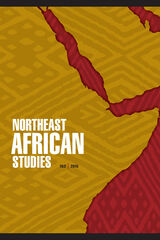 Northeast African Studies 19, no. 2
Jonathan Miran
Michigan State University Press Journals, 2020 In This Issue
Jonathan Miran, "From the Editor"
Articles
Hagar Salamon, "From Hand to Mouth: Reflections on the Multivocality of Gursha in Ethiopia"
Ruth Iyob, "Palimpsestic Tales: Hidden “Histories” of Resistance, Militarization, and Disenfranchisement of the Women of Eritrea"
Biyan Ghebreyesus Okubaghergis, "The Eritrea-Ethiopia Border Region (1991–98): People without a Border"
Yonatan Tewelde, "The Impact of European Christian Imagery on Contemporary Orthodox Tewahedo Iconography in Eritrea"
Book Reviews
Michael W. Thomas, Alessandro Jedlowski, and Aboneh Ashegrie, eds., Cine-Ethiopia: The History and Politics of Film in the Horn of Africa, reviewed by Jane Plastow
Avishai Ben-Dror, Emirate, Egyptian, Ethiopian: Colonial Experiences in Late Nineteenth-Century Harar, reviewed by Shane Balzano
Tom Boylston, The Stranger at the Feast: Prohibition and Mediation in an Ethiopian Orthodox Christian Community, reviewed by Sophia Dege-Müller
Neelam Srivastava, Italian Colonialism and Resistances to Empire, 1930–1970, reviewed by Nicola Camilleri
Michael Ghebrenegus Haile, Downfall of an Emperor: Haile Selassie of Ethiopia and the Derg’s Creeping Coup, reviewed by Kibrom Teweldebirhan
Derese G. Kassa, Refugee Spaces and Urban Citizenship in Nairobi: Africa’s Sanctuary City, reviewed by Kassahun Kebede
Sandra Rowoldt Shell, Children of Hope: The Odyssey of the Oromo Slaves from Ethiopia to South Africa, reviewed by Alexander Meckelburg
Aleksi Ylönen and Jan Záhořík, eds., The Horn of Africa since the 1960s: Local and International Politics Intertwined, reviewed by Viktor Marsai
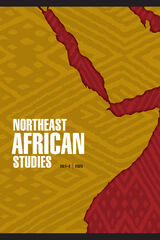 Northeast African Studies 20, nos. 1-2
Jonathan Miran
Michigan State University Press Journals, 2020 In This Issue
Special Issue: From Subjecthood to Citizenship in the Horn of Africa
Nicola Camilleri and Alexander Meckelburg, "Introduction: From Subjecthood to Citizenship in the Horn of Africa"
Stéphane Ancel, "Were the Ethiopians in Jerusalem Ottoman Citizens? Ethiopian Essentialism versus Ottomanism (1850–1916)"
Nicola Camilleri, "Colonial Subjects and Others: Racism and Inequality during Italian Rule in the Horn of Africa"
Valentina Fusari, "Between Legacy and Agency: Children Homes and Access to Italian Citizenship in Eritrea"
Katrin Bromber, "Soldier-Citizen Training: The Early Boy Scout Movement in Ethiopia (1920s–1950s)"
Helen Sylvia Papworth, "Does Teaching Civics Increase Active Citizenship? A Comparison of Civic Education for Secondary School Students in Ethiopia and in Wales"
Alexander Meckelburg and Jon Abbink, "Subjects of History: Administrative Categories, Ethnic Labels, and the Limits of Cultural Citizenship in Ethiopia"
Book Reviews
Piracy in Somalia: Violence and Development in the Horn of Africa, by Awet Tewelde Weldemichael, reviewed by Stig Jarle Hansen
Ploughing New Ground: Food, Farming and Environmental Change in Ethiopia, by Getnet Bekele, reviewed by Svein Ege
War and Peace in Somalia: National Grievances, Local Conflict and Al-Shabaab, edited by Michael Keating and Matt Waldman, reviewed by Isa Blumi
Farming and Famine: Landscape Vulnerability in Northeast Ethiopia,1889–1991, by Donald Crummey, reviewed by Ebrahim Damtew Alyou
The Crisis of Democratization in the Greater Horn of Africa: An Alternative Approach to Institutional Order in Transitional Societies, edited by Kidane Mengisteab, reviewed by Tsega Etefa
We Do Not Have Borders: Greater Somalia and the Predicaments of Belonging in Kenya, by Keren Weitzberg, reviewed by Hannah Whittaker
Ethiopian Warriorhood: Defence, Land and Society, 1800–1941, by Tsehai Berhane-Selassie, reviewed by Teferi Abate Adem
Haile Selassie: His Rise, His Fall, by Haggai Erlich, reviewed by Christopher Clapham
Northeast African Studies 21, no. 1
Jonathan Miran
Michigan State University Press Journals, 2021 In This Issue
Articles
The Exaltation of Holy Cross and the Deposition of the Emperor of Ethiopia: Ləj Iyasu a Mäsqäl Drama | Steven Kaplan
Individual and Institutional Drivers of Inequality in Rural Agricultural Contexts: Evidence from Southern Ethiopia | Logan Cochrane and Alec Thornton
Revisions of the Past, between Architectural and Political Form: The Memory of the Old Parliament Building in Mogadishu | Haroon Q. Mohamoud
Hunter in Somaliland: Consul Frederick M. Hunter and the Creation of the British Somaliland Protectorate | James Fargher
Book Reviews
The Puzzle of Ethiopian Politics, by Terrence Lyons | Jan Erk
Modernist Art in Ethiopia, by Elizabeth Wolde Giorgis| Dagmawi Woubshet
Tales of Hope, Tastes of Bitterness: Chinese Road Builders in Ethiopia, by Miriam Driessen | Liang Chen
Under Construction: Technologies of Development in Urban Ethiopia, by Daniel Mains | Aaron Tesfaye
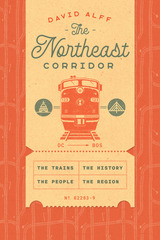 The Northeast Corridor: The Trains, the People, the History, the Region
David Alff
University of Chicago Press, 2024 All aboard for the first comprehensive history of the hard-working and wildly influential Northeast Corridor.
Traversed by thousands of trains and millions of riders, the Northeast Corridor might be America’s most famous railway, but its influence goes far beyond the right-of-way. David Alff welcomes readers aboard to see how nineteenth-century train tracks did more than connect Boston to Washington, DC. They transformed hundreds of miles of Atlantic shoreline into a political capital, a global financial hub, and home to fifty million people. The Northeast Corridor reveals how freight trains, commuter rail, and Amtrak influenced—and in turn were shaped by—centuries of American industrial expansion, metropolitan growth, downtown decline, and revitalization.
Paying as much attention to Canton, Trenton, New Rochelle, and Providence as to New York City, Philadelphia, and Baltimore, Alff provides narrative thrills for history buffs, train enthusiasts, and adventurers alike. What’s more, he offers a glimpse into the future of the corridor. New infrastructural plans—supported by President Joe Biden, famously Amtrak’s biggest fan—envision ever-faster trains zipping along technologically advanced rails. Yet those tracks will literally sit atop a history that links the life of Frederick Douglass, who fled to freedom by boarding a train in Baltimore, to the Frederick Douglass Tunnel, which is expected to be the newest link in the corridor by 2032.
Trains have long made the places that make America, and they still do.
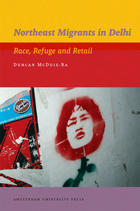 Northeast Migrants in Delhi: Race, Refuge and Retail
Duncan McDuie-Ra
Amsterdam University Press, 2012 The Northeast border region of India is a crossroads of Southeast Asia, where India meets China and the Himalayas, and home to many ethnic minorities from across the continent. The area is also the birthplace of a number of secessionist and insurgent movements and a hotbed of political fervor and violent instability. In this trailblazing new study, Duncan McDuie-Ra observes the everyday lives of the thousands of men and women who leave the region every year to work, study, and find refuge in Delhi. He examines how new migrants navigate the rampant racism, harassment, and even violence they face upon their arrival in Delhi. But McDuie-Ra does not paint them simply as victims of the city, but also as contributors to Delhi’s vibrant community and increasing cosmopolitanism. India’s embrace of globalization has created employment opportunities for Northeast migrants in many capitalistic enterprises: shopping malls, restaurants, and call centers. They have been able to create their own “map” of Delhi and their own communities within the larger and often unfriendly one of the metropolis.
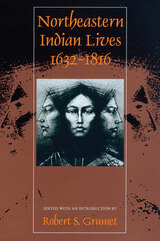 Northeastern Indian Lives, 1632-1816
Robert S. Grumet
University of Massachusetts Press, 1996 This collection of fifteen essays examines the lives of important but relatively unknown Native Americans. The chapters explore the complexities of Indian-colonial relations from the seventeenth to the early nineteenth centuries, from Maine to the Ohio valley. The volume is interdisciplinary, drawing on the methods and insights of social history, cultural anthropology, archaeology, and the study of material culture.
Few works have directed attention toward such lesser-known figures as Shickellamy, an Oneida diplomat; the Mohawk sachem Theyanoguin; Awashunkes, a Saconett sunksquaw; or Molly Ockett, a Pigwacket doctor. These individuals operated at the often dangerous and always uncertain interstices separating their world from that of the European settlers, as they worked for the security and survival of their peoples during the first centuries of contact. Their efforts helped shape events that determined the course of history in the colonial Northeast.
 The Northeast’s Changing Forest
Lloyd C. Irland
Harvard University Press, 1999 The Northeast's Changing Forest reviews the history and conditions of the forest in the nine northeastern states. This diverse region stretches from the shores of Lake Erie to Passamaquoddy Bay and from Cape May, New Jersey to northern Maine. The forests range from the dune forest of the New Jersey beaches to subalpine forests in the White Mountains and the Adirondacks. Heavily cleared for agriculture in the nineteenth century, the region's forests have increased in area since 1909 by an amount equal to the entire forest area of Maine, which is 17 million acres.
The region's forests can be thought of as five "forests," each playing a distinct economic role. In the Industrial Forest, the growing and harvesting of industrial wood is the primary use, accompanied by substantial use for hunting, fishing, snowmobiling, and wilderness canoeing. In the Suburban Forest, the general emphasis on "green backdrop" roles belies the importance of casual recreation, firewood cutting, and industrial wood uses. In the Rural Forest of the region's farming and thinly settled rural areas, traditional forest uses continue. In the Recreational Forest, heavily developed areas for skiing, lakeside camps and resorts, and coastal developments set the tone. Finally, in the Wild Forest, preservation of nature is dominant.
After generations when few aside from the landowner and technical communities paid the forests much attention, they have now become focal points for policy conflicts. Proposals for large additions to the Adirondack Park's Forever Wild lands, for creating a Maine Woods National Park, and for eliminating all timber harvesting on the region's National Forests are prominent examples. The legislatures of every state in the region deal annually with issues of forest taxation, forest practices regulation, public ownership, and land uses affecting forests. The Northeast's Changing Forest gives readers an historic, geographic, and ecological background for understanding the condition of the forests of the Northeast and the outlook for their future.
The Norther
By Emilio Carballido
University of Texas Press, 1968 Recognized in Mexico as one of the country's most important contemporary dramatists, Emilio Carballido has only recently become known in other countries through his plays and short stories. This translation introduces Carballido as a novelist. In The Norther what makes and breaks human relationships is his central interest as he traces the course of a relationship between a widow and a young man. The characters are created as their emotional and psychological outlines are drawn, and it is in the characterization that the hand of the dramatist is revealed. But it is Carballido's novelistic talent that has made The Norther the object of widely divergent interpretations. The critical conflict aroused by this novel is discussed in an Introduction by the translator, Margaret Sayers Peden.
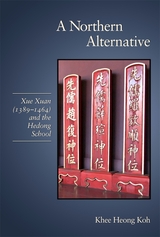 A Northern Alternative: Xue Xuan (1389–1464) and the Hedong School
Khee Heong Koh
Harvard University Press, 2011 Conventional portraits of Neo-Confucianism in China are built on studies of scholars active in the south, yet Xue Xuan (1389–1464), the first Ming Neo-Confucian to be enshrined in the Temple to Confucius, was a northerner. Why has Xue been so overlooked in the history of Neo-Confucianism? In this first systematic study in English of the highly influential thinker, author Khee Heong Koh seeks to redress Xue’s marginalization while showing how a study interested mainly in “ideas” can integrate social and intellectual history to offer a broader picture of history.
Significant in its attention to Xue as well as its approach, the book situates the ideas of Xue and his Hedong School in comparative perspective. Koh first provides in-depth analysis of Xue’s philosophy, as well as his ideas on kinship organizations, educational institutions, and intellectual networks, and then places them in the context of Xue’s life and the actual practices of his descendants and students. Through this new approach to intellectual history, Koh demonstrates the complexity of the Neo-Confucian tradition and gives voice to a group of northern scholars who identified themselves as Neo-Confucians but had a vision that was distinctly different from their southern counterparts.
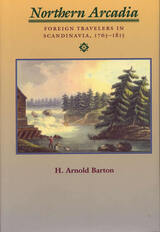 Northern Arcadia: Foreign Travelers in Scandinavia, 1765 - 1815
H. Arnold Barton
Southern Illinois University Press, 1998 Northern Arcadia is a comparative study of the accounts of foreign visitors to the Nordic lands during the late eighteenth and early nineteenth centuries. Before the late eighteenth century, few foreigners ventured as far as Scandinavia. The region seemed a cold hyperborean wilderness and a voyage there a daring adventure. From the mid-1760s on, however, foreigners arrived in the Nordic lands in increasing numbers, leaving numerous accounts that became increasingly popular, satisfying a growing curiosity about regions beyond the traditional grand tour. The pre-Romantic mood of the period—with its predilection for untamed nature and for peoples uncorrupted by overrefined civilization—further stimulated fascination with the North. European titerati discovered the Nordic sagas, finding them exhilarating, passionate, imaginative, and original. The French Revolution and the ensuing European wars effectively closed off much of the Continent to foreign travel, turning attention to the still neutral northern kingdoms. Travel literature about Scandinavia thus illuminates the shift in the European intellectual climate from the enlightened rationalism and utilitarianism of the earlier travelers in this period to the pre-Romantic sensibility of those who followed them. In a Europe torn by war and revolution, sensitive souls could find their new Arcadia in the North—at least until the Scandinavian kingdoms themselves became engulfed by the Napoleonic wars after 1805. The first scholar to examine as a whole the travel literature dealing with Denmark, Schleswig-Holstein, Norway, Sweden, Finland, Iceland, and the Færø Islands, H. Arnold Barton discusses accounts left by both the celebrated and the obscure. Well-known travelers include Vittorio Alfieri, Francisco de Miranda, Mary Wollstonecraft, Thomas Malthus, and Aaron Burr. Literary travelers of the day included Nathanael Wraxall, William Coxe, Charles Gottlob Küttner, Edward Daniel Clarke, and John Carr. Northern Arcadia brings out contrasts: among the various Nordic lands and regions; among the reactions of travelers of differing nationality; between the earlier as opposed to the later travelers of the time; between native Scandinavian and foreign perceptions of the North; between conditions in Scandinavia and those in other parts of the Western world; between then and now. It incorporates continuity and change, reality and mentality.
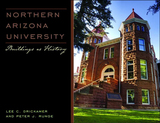 Northern Arizona University: Buildings as History
Lee C. Drickamer and Peter J. Runge
University of Arizona Press, 2011 Any university is composed of faculty, students, and staff. But these living components change over time and in varying degrees, while the campus buildings are more permanent, remaining for decades, a century, or longer.
This book looks at the buildings that have graced the campus of Northern Arizona University from its opening in 1898 to the present. The school began with a single building, Old Main, and it was joined by five other structures prior to World War I. In the following decades the campus remained relatively small, expanding to approximately twenty-five structures by the late 1950s. During the tenure of President J. Lawrence Walkup (1957–1979), the university effectively doubled in size, spreading southward and adding more than forty buildings, including an entire south campus academic center. Since 1979 the campus has witnessed the addition of more than thirty structures, most as infill within the existing campus layout.
Arranged chronologically, this extensively illustrated volume briefly describes the history of every building that has been a part of the university’s physical layout. The authors describe various structural aspects of each building and provide entertaining and informative anecdotes about events and people associated with the structures. By combing the university’s archives, Drickamer and Runge have turned up photographs of each building as it looked shortly after construction and at present, providing a fascinating visual time lapse.
With more than two hundred images of campus buildings, many of them never before published, Northern Arizona University: Buildings as History provides a wonderful pictorial chronicle of the campus that will interest architectural historians as well as all those who have called NAU home.
Northern California Texts
Victor Golla and Shirley Silver
University of Chicago Press Journals, 1977 This volume includes stories from 13 languages of Northern California with word-by-word glosses and free translation, each accompanied by grammatical notes. This collection will be of interest to linguists, typologists, and aficionados of oral narrative, as well as to speakers and learners of Native American languages.
The Northern Dynasties: Kingship and Statecraft in Chimor
Michael Moseley and Alana Cordy-Collins
Harvard University Press The Northern Dynasties explores articulations of kingship and rule in the archaeological and ethnohistorical records of Chimor. Drawing on these two fields of study, these papers investigate the art, architectural, and archaeological remains at Chan Chan and related sites, as well as written sources, to inform views of Chimor society. Together, the monuments and texts reveal fascinating information about Chimu statecraft and views of kingship, and present an integrated overview of the northern dynasties, making possible a much fuller reconstruction of Indigenous culture.
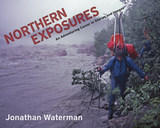 Northern Exposures: An Adventuring Career in Stories and Images
Jonathan Waterman
University of Alaska Press, 2013 “Waterman's profound respect for the northern lands burns on every page, and his photos and essays prove to us that there is still beauty in this world—beauty worth fighting for.”—Robert Redford
North of the sixtieth parallel, the sun shines for less than six hours in the winter, and towering mountains are the only skyscrapers. Pristine waters serve caribou, moose, and bears in an unbroken landscape. At any given moment in this spectacular scenery, there’s a chance that Jonathan Waterman is present, trekking across the land. A masterful adventurer, Waterman has spent decades exploring the farthest reaches of our beautiful spaces. The essays and photographs collected in Northern Exposures are a product of this passion for exploration and offer an unparalleled view into adventuring in the north and beyond.
Picking up after In the Shadow of Denali, his first book of essays, Northern Exposures collects twenty-three stories from Waterman’s thirty-year career that show the evolution of the adventurer’s career and work, from ducking avalanches near the Gulf of Alaska, to searching for the most pristine tundra on the continent, and from writing haiku on Denali in the depth of winter to decrying oil development in the Arctic National Wildlife Refuge. Ninety-six spectacular photographs taken by Waterman during his expeditions lend a broader context and allow readers to fully understand his heartfelt argument for protecting these places. Whether active, aspiring, or just armchair adventurers, readers will be inspired by Waterman’s daring spirit.
 Northern Fishes: With special reference to the upper Mississippi valley
Samuel Eddy and Thaddeus Surber
University of Minnesota Press, 1974 Northern Fishes was first published in 1974. Minnesota Archive Editions uses digital technology to make long-unavailable books once again accessible, and are published unaltered from the original University of Minnesota Press editions. With the greatly increased interest in fishes and fishing since the earlier editions of this work were published, there has been need for a revised version of this indispensable book on the fishes of the Upper Mississippi Valley. This, the third edition, revised, of Northern Fishes by Samuel Eddy and Thaddeus Surber, contains much new material and up-to-date information based on current knowledge about fishes, their environment, and fishing techniques. The book covers more than 160 species with descriptions and line drawings to illustrate almost all of them. The authors discuss recently introduced species and their importance to sportsmen and provide current data on the distribution of northern fishes. There are keys for the identification of the species and information about where they are found and their habits. This edition also contains a number of additions to the species list which result from rather extensive collecting of specimens since the earlier editions were compiled. Before presenting the data on individual species, the authors provide basic information about fishes in general—their structure, classification and origin, their food, and their parasites. The revised, updated section on fishing techniques includes information about spin casting. There are important chapters on lake dynamics, fish population dynamics, management of Minnesota and northern waters for fish production, and improvement of lakes and streams. The detailed information about species is arranged according to families. For further reading or reference there is a bibliography.
The Northern Garden
Daisy T. Abbott
University of Minnesota Press, 1938
The Northern Garden was first published in 1938. Minnesota Archive Editions uses digital technology to make long-unavailable books once again accessible, and are published unaltered from the original University of Minnesota Press editions.
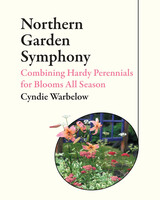 Northern Garden Symphony: Combining Hardy Perennials for Blooms All Season
Cyndie Warbelow
University of Alaska Press, 2021 Put the power of a garden planning pro to work for you! Northern Garden Symphony offers explanations and illustrations of the sequential blooms of ornamental perennials as a tool for garden design. The idea of sequential blooming, Fairbanks-famous author Cyndie Warbelow explains, is similar to the workings of a musical symphony, in which at least a portion of its stunning constituent plants is blooming at all times, even though they are not all blooming together. Given that perennial plants bloom for limited and specific periods of time during the growing season, Warbelow notes, it is crucial that a garden be designed with sequential blooming in mind. Yet this concept can often overwhelm and discourage gardeners.
Using narrative, figures, photographs, and a groundbreaking set of layout charts that can aid even the most experienced horticulturist in the process of flower garden planning, Northern Garden Symphony gives gardeners the tools they need to be a successful northern perennial gardener.
 A Northern Gardener’s Guide to Native Plants and Pollinators
Lorraine Johnson and Sheila Colla
Island Press, 2023 Few sights are as charming as a hummingbird hovering over cardinal flowers in your backyard or a butterfly lighting on the black-eyed Susans potted on your balcony. Yet pollinators do more than beguile us: they are key to a healthy environment. With many pollinators threatened and their habitats disappearing, gardeners can make a real difference by planting native species that support these amazing creatures. The trick is knowing what species to plant and how to help them thrive.
If you’re a gardener (or aspiring gardener) in the Northeast, Upper Midwest, or Great Lakes region, this beautiful 4-color guide will become your go-to reference to the most beneficial plants in your area. It includes profiles of more than 300 native plants, featuring lovely illustrations and photos, information on blooming periods, exposure, soil moisture, and good plant companions, as well as how each species supports specific pollinators.
You’ll learn more about common plants you thought you knew and be introduced to species you may have never encountered before. Blooming flowers, native grasses, trees, shrubs, vines, and plants for rain and pond gardens are all included. White Baneberry, Woodland Strawberry, Boneset, Virginia Mountain Mint, Smooth Aster, and many others may find their way from these pages to your soil.
While understanding specific plants is key, so too are growing strategies. Here you’ll learn how to prepare your site and find sample garden designs, whether your growing space is an apartment balcony, a residential yard, or a community garden. Throughout, you’ll discover the power of plants to not only enrich your personal environment but to support the pollinators necessary for a thriving planet.
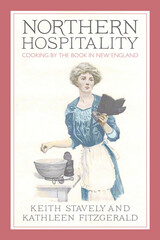 Northern Hospitality: Cooking by the Book in New England
Keith Stavely
University of Massachusetts Press, 2011 If you think traditional New England cooking is little more than baked beans and clam chowder, think again. In this enticing anthology of almost 400 historic New England recipes from the seventeenth to the early twentieth century, you will be treated to such dishes as wine-soaked bass served with oysters and cranberries, roast shoulder of lamb seasoned with sweet herbs, almond cheesecake infused with rosewater, robust Connecticut brown bread, zesty ginger nuts, and high-peaked White Mountain cake.
Beginning with four chapters placing the region's best-known cookbook authors and their works in nuanced historical context, Keith Stavely and Kathleen Fitzgerald then proceed to offer a ten-chapter cornucopia of culinary temptation. Readers can sample regional offerings grouped into the categories of the liquid one-pot meal, fish, fowl, meat and game, pie, pudding, bread, and cake. Recipes are presented in their original textual forms and are accompanied by commentaries designed to make them more accessible to the modern reader. Each chapter, and each section within each chapter, is also prefaced by a brief introductory essay. From pottage to pie crust, from caudle to calf's head, historic methods and obscure meanings are thoroughly—sometimes humorously—explained.
Going beyond reprints of single cookbooks and bland adaptations of historic recipes, this richly contextualized critical anthology puts the New England cooking tradition on display in all its unexpected--and delicious--complexity. Northern Hospitality will equip readers with all the tools they need for both historical understanding and kitchen adventure.
 Northern Ireland After the Good Friday Agreement: Victims, Grievance and Blame
Marie Smyth and Mike Morrissey
Pluto Press, 2002 The difficulties that have dogged the Northern Ireland peace process and the implementation of the Good Friday Agreement are rarely out of the headlines. This book gives an insight into one of the issues at stake for the people of Northern Ireland – the long-term impact of political violence on the civil population.
The result of extensive research among local communities, and drawing on survey and interview evidence, Northern Ireland After the Good Friday Agreement sets this issue within the context of past conflict and the continuing sectarian violence of the present. In particular it presents the views of ordinary people about their personal experiences of political violence and the impact it has had upon their lives.
Moreover, it shows how the Troubles have affected the young people of the region, and looks at the problems facing a society coming out of a protracted period of low-intensity conflict.
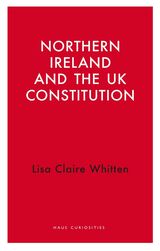 Northern Ireland and the UK Constitution
Lisa Claire Whitten
Haus Publishing, 2024 A concise history of Northern Ireland through its pivotal moments.
Since the United Kingdom’s withdrawal from the European Union, the constitutional position of Northern Ireland within the Union has endured an unusual level of attention. Northern Ireland and the UK Constitution leads us through its pivotal moments: the 1920–72 Unionist-led governments, the following thirty years of bitter conflicts, the 1998 Belfast/Good Friday Agreement, and the 2016 referendum on the United Kingdom’s membership in the European Union. Considering each of the moments in the broader setting of UK constitutional norms and narratives, she addresses the exceptional constitutional characteristics of Northern Ireland and the ways in which these have often resulted in “blindspot” analyses of the Union. This short book also considers the implications of Brexit and the constitutional impacts and shifts it has brought to Northern Ireland and discusses the possible constitutional repercussions.
 Northern Ireland's Lost Opportunity: The Frustrated Promise of Political Loyalism
Tony Novosel
Pluto Press, 2019 Northern Ireland's Lost Opportunity is a unique in-depth investigation into working-class Loyalism in Northern Ireland as represented by the Ulster Volunteer Force (UVF), the Red Hand Commando (RHC) and their political allies.
In an unorthodox account, Tony Novosel argues that these groups, seen as implacable enemies by Republicans and the left, did develop a political analysis of the Northern Ireland conflict in the 1970s which involved a compromise peace with all political parties and warring factions – something that historians and writers have largely ignored.
Distinctive, deeply informed and provocative, Northern Ireland's Lost Opportunity is the first study to focus not on the violent actions of the UVF/RHC but on their political vision and programme which, Novosel argues, included the potential for a viable peace based on compromise with all groups, including the Irish Republican Army.
Northern Iroquoian Texts
Marianne Mithun and Hanni Woodbury
University of Chicago Press Journals, 1980 This volume includes 18 texts in a variety of genres from Northern Iorquoian languages with word-by-word glosses, making explicit the richness of Iroquoian grammar as it is used in context. This collection will be of interest to anthropologists, linguists, typologists, and aficionados of oral narrative, as well as to speakers and learners of Iroquoian languages.
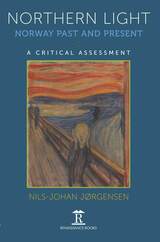 Northern Light: Norway Past and Present
Ambassador Nils-Johan Jørgensen was educated at the universities of Oslo and Oxford (Norway Scholar at Wadham) and was Research Fellow at the Norwegian Institute of International Affairs (NUPI). As a Norwegian career diplomat he served in Brussels, Copenhagen, Harare, Tokyo, Bonn and Dar es Salaam. He retired in 2001. He is the author of books and articles on European integration, international development, Southern Africa and Germany and Japan.
Amsterdam University Press, 2019 Here is a new, challenging appraisal of Norway, the author’s country of birth, that redefines its history, culture and heritage – ‘after Ibsen’ – and looks, with a degree of ominous foreboding, at its future and the future of Europe. Ex-diplomat and widely published author Jørgensen explores an array of topics, from Norway’s Viking past, its pursuit of independence, the German occupation, its politics and cultural heritage , the defence of NATO, the relationship with Europe, and the challenge of Russia, concluding with ‘self-image and reality’. In Northern Light, the author challenges many existing perceptions and stereotypes, making this an essential reference for anyone interested in Norway and its people, international affairs, European history and its cultural legacy.
Northern Lights
Drago Jancar
Northwestern University Press, 2001 Josef Erdman arrives in Maribor, Slovenia, on the eve of World War II. Though he claims to be a salesman, it soon becomes apparent that Josef has no purpose in the town--and that a newcomer can expect nothing but distrust from the townspeople. Against this backdrop he witnesses the fiery shimmer of the aurora borealis and imagines the town set aflame--an omen of the coming war.
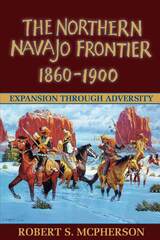 Northern Navajo Frontier 1860 1900
Robert S. McPherson
Utah State University Press, 2001 The Navajo nation is one of the most frequently researched groups of Indians in North America. Anthropologists, sociologists, historians, and others have taken turns explaining their views of Navajo history and culture. A recurrent theme throughout is that the U.S. government defeated the Navajos so soundly during the early 1860s that after their return from incarceration at Bosque Redondo, they were a badly shattered and submissive people. The next thirty years saw a marked demographic boom during which the Navajo population doubled. Historians disagree as to the extent of this growth, but the position taken by many historians is that because of this growth and the rapidly expanding herds of sheep, cattle, and horses, the government beneficently gave more territory to its suffering wards. While this interpretation is partly accurate, it centers on the role of the government, the legislation that was passed, and the frustrations of the Indian agents who rotated frequently through the Navajo Agency in Fort Defiance, New Mexico, and ignores or severely limits one of the most important actors in this process of land acquisition-the Navajos themselves. Instead of being a downtrodden group of prisoners, defeated militarily in the 1860s and dependent on the U.S. government for protection and guidance in the 1870s and 80s, they were vigorously involved in defending and expanding the borders of their homelands. This was accomplished not through war and as a concerted effort, but by an aggressive defensive policy built on individual action that varied with changing circumstances. Many Navajos never made the Long Walk to Bosque Redondo. Instead they eluded capture in northern and western hinterlands and thereby pushed out their frontier. This book focuses on the events and activities in one part of the Navajo borderlands-the northern frontier-where between 1860 and 1900 the Navajos were able to secure a large portion of land that is still part of the reservation. This expansion was achieved during a period when most Native Americans were losing their lands.
Northern New Spain: A Research Guide
Thomas C. Barnes, Thomas H. Naylor, and Charles W. Polzer
University of Arizona Press, 1981 This research guide was first concieved to fulfill multiple needs of the research team of the Documentary Relations of the Southwest (DRSW) project at the Arizona State Museum. In performing research tasks, it became evident that reference material was scattered throughout scores of books and monographs. A single complete source book was simply not available. Hence, the editors of the DRSW project compiled this guide. The territory under study comprises all of northern Mexico in colonial times.
Northern Paiute–Bannock Dictionary
Compiled by Sven Liljeblad, Catherine S. Fowler, and Glenda Powell
University of Utah Press, 2011 Based on extensive fieldwork that spanned more than 50 years, this comprehensive dictionary is a monumental achievement and will help to preserve this American Indian language that is nearing extinction.
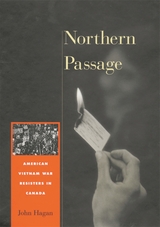 Northern Passage: American Vietnam War Resisters in Canada
John Hagan
Harvard University Press, 2001 More than 50,000 draft-age American men and women migrated to Canada during the Vietnam War, the largest political exodus from the United States since the American Revolution. How are we to understand this migration three decades later? Was their action simply a marginal, highly individualized spin-off of the American antiwar movement, or did it have its own lasting collective meaning?
John Hagan, himself a member of the exodus, searched declassified government files, consulted previously unopened resistance organization archives and contemporary oral histories, and interviewed American war resisters settled in Toronto to learn how they made the momentous decision. Canadian immigration officials at first blocked the entry of some resisters; then, under pressure from Canadian church and civil liberties groups, they fully opened the border, providing these Americans with the legal opportunity to oppose the Vietnam draft and military mobilization while beginning new lives in Canada. It was a turning point for Canada as well, an assertion of sovereignty in its post–World War II relationship with the United States.
Hagan describes the resisters’ absorption through Toronto’s emerging American ghetto in the late 1960s. For these Americans, the move was an intense and transformative experience. While some struggled for a comprehensive amnesty in the United States, others dedicated their lives to engagement with social and political issues in Canada. More than half of the draft and military resisters who fled to Canada thirty years ago remain there today. Most lead successful lives, have lost their sense of Americanness, and overwhelmingly identify themselves as Canadians.
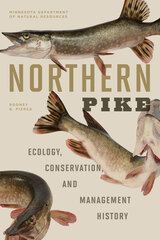 Northern Pike: Ecology, Conservation, and Management History
Rodney B. Pierce
University of Minnesota Press, 2012 The northern pike—sometimes affectionately known as the “aquatic wolf”—is one of the most sought after and mythologized fishes in Minnesota, but until now there have been few books devoted to the history and ecological management of the species. Based on pioneering research carried out in Minnesota by leading pike specialist Rodney B. Pierce, Northern Pike Ecology, Conservation, and Management History is the most complete collection of information to date on the species, for everyone from scientists and conservation biologists to general readers and recreational anglers. A tremendously important game fish and resource both in Minnesota and throughout the northern hemisphere, northern pike populations directly reflect local geology and human influence, playing a key role in the health of freshwater ecosystems. As urbanization spreads and the human population continues to grow, pike populations face increasing pressure, requiring new ways of looking at and managing the species. In Minnesota, groundbreaking work has been conducted on northern pike: analyses of stocking success and investigations into the relationships within fish communities, the management of rearing marshes, environmental effects on natural production, the genetics of northern pike, and strategies for scientifically monitoring pike. The state has been a leader in developing fishing regulations to help restore large pike, among many other measures designed to ensure the future quantity and health of a key species in Minnesota’s waterways. Weaving significant historical scientific literature and technical details together with his own research, Pierce’s benchmark study documents and synthesizes the long history of northern pike management and describes the latest efforts being taken to better understand and manage this critical and renowned species.
 Northern Protest: Martin Luther King, Jr., Chicago, and the Civil Rights Movement
James R. Ralph Jr.
Harvard University Press, 1993 After the triumphs of Montgomery and Selma, Martin Luther King, Jr., rallied his forces and headed north. The law was on his side, the nation seemed to be behind him, the crusade for civil rights was rapidly gathering momentum—and then, in Chicago, heartland of America, the movement stalled. What happened? This book is the first to give us the full story—a vivid account of how the Chicago Freedom Movement of 1965–1967 attempted to combat northern segregation. Northern Protest captures this new kind of campaign for civil rights at a fateful turning point, with effects that pulse through the nation’s race relations to the day.
Combating the outright, unconstitutional denial of basic political and civil rights had been King’s focus in the South. In the North, the racial terrain was different. James Ralph analyzes the shift in the planning stages—moving from addressing public constitutional rights to private-impact legal rights—as King and his Southern Christian Leadership Conference (SCLC) mounted an unprecedented attack on housing discrimination, one of the most blatant social and economic inequities of urban America. A crisis in the making is unfolded as King, the SCLC, and a coalition of multiracial Chicago civil rights groups mobilize protests against the city’s unfair housing practices. Ralph introduces us to Chicago’s white ethnics, city officials, and business and religious leaders in a heated confusion of responses. His vibrant account, based in part on many in-depth interviews with participants, reveals the true lineaments of urban America, with lessons reaching beyond the confines of the city. The Chicago Freedom Movement is given a national context—as King envisioned it, and as it finally played out. Here, the Chicago crusade becomes emblematic of the civil rights movement today and tomorrow. Ralph argues that this new push for equality in more private realms of American life actually undermined popular support for the movement and led to its ultimate decline.
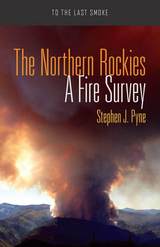 The Northern Rockies: A Fire Survey
Stephen J. Pyne
University of Arizona Press, 2016 It’s a place of big skies and big fires, big burns like those of 1910 and 1988 that riveted national attention. Conflagrations like those of 1934 and 2007 that reformed national policy. Blowups like that in Mann Gulch that shaped the literature of American fire. Big fires mostly hidden in the backcountry like the Fitz Creek and Howler fires that inspired the practice of managed wildfires. Until the fire revolution of the 1960s, no region so shaped the American way of fire.
The Northern Rockies remain one of three major hearths for America’s fire culture. They hold a major fire laboratory, an equipment development center, an aerial fire depot, and a social engagement with fire—even a literature. Missoula is to fire in the big backcountry what Tallahassee is to prescribed burning and what Southern California is to urban-wildland hybrids. On its margins, Boise hosts the National Interagency Fire Center. In this structured collection of essays on the region, Stephen J. Pyne explores what makes the Northern Rockies distinctive and what sets it apart from other regions of the country. Surprisingly, perhaps, the story is equally one of big bureaucracies and of generations that encounter the region’s majestic landscapes through flame.
The Northern Rockies is part of a multivolume series describing the nation’s fire scene region by region. The volumes in To the Last Smoke also cover Florida, the Northern Rockies, the Great Plains, the Southwest, and several other critical fire regions. The series serves as an important punctuation point to Pyne’s 50-year career with wildland fire—both as a firefighter and a fire scholar. These unique surveys of regional pyrogeography are Pyne’s way of “keeping with it to the end,” encompassing the directive from his rookie season to stay with every fire “to the last smoke.”
 The Northern Stories of Charles W. Chesnutt
Charles W. Chesnutt
Ohio University Press, 2004 The first African American fiction writer to earn a national reputation, Charles W. Chesnutt remains best known for his depictions of Southern life before and after the Civil War. But he also produced a large body of what might best be called his “Northern” writings, and those works, taken together, describe the intriguing ways in which America was reshaping itself at the turn of the last century.
The Northern Stories of Charles W. Chesnutt collects for the first time eighteen Chesnutt stories—several of them first appearing in Northern magazines or newspapers—that portray life in the North in the period between the Civil War and World War I. Living in Ohio from 1883 until his death in 1932, Chesnutt witnessed and wrote about the social, cultural, and racial upheavals taking place in the North during a crucial period of American history. His Northern stories thus reflect his vision of a newly reconstituted America, one recommitted to the ideals of freedom and economic opportunity inherent in our national heritage.
The stories, compiled and edited with critical introductions to each by Professor Charles Duncan, offer a new Chesnutt, one fascinated by the evolution of America into an urban, multiracial, economically driven democracy.
The Northern Stories of Charles W. Chesnutt presents richly imagined characters, both black and white, working to make better lives for themselves in the turbulent and stimulating universe of the turn-of-the-century North. Indeed, Chesnutt stands virtually alone as the first African American chronicler of Northern culture, anticipating such figures as James Weldon Johnson, Langston Hughes, Ralph Ellison, James Baldwin, and Toni Morrison. This critical edition of The Northern Stories of Charles W. Chesnutt is a significant addition to the body of African American literature.
The Northern Titicaca Basin Survey: Huancané-Putina
Charles Stanish, Cecilia Chávez Justo, Karl LaFavre, and Aimée Plourde
University of Michigan Press, 2014 This landmark book synthesizes the results of more than a decade of fieldwork in southern Peru—where Stanish and his team systematically surveyed more than 1000 square kilometers in the northern Titicaca Basin—and it details several hundred new sites in the Huancané-Putina River valley.
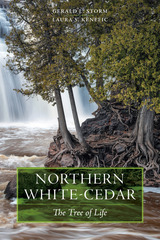 Northern White-Cedar: The Tree of Life
Gerald L. Storm
Michigan State University Press, 2022 If trees had personalities, the northern white-cedar would be an introvert. It is unassuming, tending to be small in stature with narrow crowns. It is patient, growing slowly beneath the canopy of larger trees. It is fragile, with weak wood prone to decay when living. But just as people have hidden depths, so too does the northern white-cedar. It is persistent, growing quickly to take advantage of canopy openings when they occur. It is tenacious, living for centuries or even a millennium. It is resilient, thriving even with a high proportion of rotten wood, and resourceful, finding places to live where other trees don’t prosper. It is constantly reinventing itself with branches that grow roots when resting on the moist ground. And people have long valued the tree. Native Americans used its lightweight, rot-resistant wood to make woven bags, floor coverings, arrow shafts, and canoe ribs. They extracted medicine from the leaves and bark to treat a variety of illnesses. A Haudenosaunee decoction of northern white-cedar is credited with saving the French explorer Jacques Cartier’s crew from scurvy, and the French dubbed it l’arbre de vie: the tree of life. This tree similarly gives life to many creatures in North American forests, while providing fence posts, log homes, and shingles to people. But the northern white-cedar’s future is uncertain. Here scientists Gerald L. Storm and Laura S. Kenefic describe the threats to this modest yet essential member of its ecosystem and call on all of us to unite to help it to thrive.
Northwest Coast: Archaeology as Deep History
Madonna L. Moss
University Press of Colorado, 2011 From the SAA Press Current Perspectives Series, this concise overview of the archeology of the Northwest Coast of North America challenges stereotypes about complex hunter-gatherers. Madonna Moss argues that these ancient societies were first and foremost fishers and food producers and merit study outside socio-evolutionary frameworks. Moss approaches the archaeological record on its own terms, recognizing that changes through time often reflect sampling and visibility of the record itself. The book synthesizes current research and is accessible to students and professionals alike.
Northwest Coast Texts: Stealing Light
Barry F. Carlson
University of Chicago Press Journals, 1977 This volume includes 4 tellings of the Northwest Coast legend of how the Sun was stolen and brought to Earth from four different Northwest Coast languages, two Salishan (Lushootseed and Halkomelem) and two Wakashan (Nitinaht and Kwak’wala). Each of the stories in this collection is presented in interlinearized format with full morpheme-by-morpheme glosses and English translations. This format makes explicit the structure of the language and illustrates the richness of grammar as it is used in context. These texts will be of interest to anthropologists, linguists, typologists, and aficionados of oral narrative, as well as to speakers and learners of Native American languages.
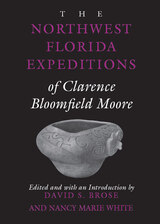 The Northwest Florida Expeditions of Clarence Bloomfield Moore
Clarence Bloomfield Moore
University of Alabama Press, 1999 A Dan Josselyn Memorial Publication
This comprehensive compilation of Moore's archaeological reports on northwest Florida and southern Alabama and Georgia presents the earliest documented investigations of this region.
When Clarence Bloomfield Moore cruised the rivers of Florida in search of prehistoric artifacts a century ago, he laid the groundwork for archaeological investigations to follow. This volume reflects Moore's fieldwork along the northwest Florida coast, the most archaeologically rich area of the state, as well as Southern Alabama and Georgia. Here readers will share Moore's first look at the area in 1901-1903 and additional observations made in 1918 during what was to be his last field season. Moore's works reveal ceramics, tools, skeletal remains, and exotic artifacts excavated from the earthen mounds and shell middens built by native peoples over the last two millennia. In the introduction to this edition, David Brose and Nancy Marie White place Moore's investigations within the context of the science, natural history, and antiquarianism of his day. They document what happened to the sites he explored, tell how his findings fit into the body of his research, and explain how those findings should be interpreted in the context of Southeastern culture history and modern archaeological theory. Moore was the most knowledgeable Southeastern archaeologist of his time; his writings are a benchmark for anyone studying those areas today.
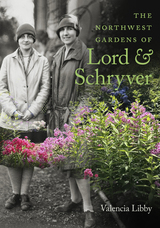 The Northwest Gardens of Lord and Schryver
Valencia Libby
Oregon State University Press, 2021 Foreword by Bill Noble
Published in Cooperation with the Lord & Schryver Conservancy
Lord & Schryver, the first landscape architecture firm founded and operated by women in the Pacific Northwest, designed more than two hundred gardens in Oregon and Washington, including residential, civic, and institutional landscapes. Elizabeth Lord and Edith Schryver met as young women and in 1929 established their highly successful firm in Salem; their work is acknowledged as one of the milestones in the history of garden design in the Northwest and beyond. Theirs is the only Oregon firm recognized in Pioneers of Landscape Architecture, compiled by the National Park Service. The Cultural Landscape Foundation describes them as “consummate professionals in the broadest sense, as they worked to raise the profile of landscape architects by involving an audience beyond their clients. Their work represented a transition from a formal symmetrical style of garden design to one which responded in a distinctive way to the unique features of Northwest climate, soil, topography, and plant material.”
Gaiety Hollow, their purpose-built Salem home, garden, and studio, is now owned by the Lord & Schryver Conservancy and is open to the public. The conservancy has lovingly restored the gardens at Gaiety Hollow according to Lord & Schryver’s original plans. They have also restored and now maintain the gardens at Deepwood, a former residence that is now a public park.
Students of landscape architecture, garden design, Pacific Northwest history, ornamental horticulture, and general readers who are interested in the contributions of women to once male-dominated professions will find inspiration in these pages.
Learn more about Elizabeth Lord and Edith Schryver at www.lordschryver.org
The Northwest Ordinance: Essays on its Formulation, Provisions, and Legacy
Frederick D. Williams
Michigan State University Press, 1989 Adoption of the Northwest Ordinance in 1787 ended a long and sometimes acrimonious debate over the question of how to organize and govern the western territories of the United States. Many eastern leaders viewed the Northwest Territory as a colonial possession, while freedom-loving settlers demanded local self- government. These essays address the ambiguities of the Ordinance, balance of power politics in North America, missionary activity in the territory, slavery, and higher education in the Old Northwest.
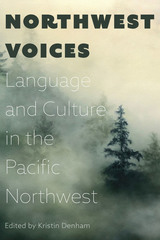 Northwest Voices: Language and Culture in the Pacific Northwest
Kristin Denham
Oregon State University Press, 2019 The Pacific Northwest has long been a linguistically rich region, yet there are few books devoted its unique linguistic heritage. The essays collected in Northwest Voices examine the historical background of the Pacific Northwest, the contributions of indigenous languages, the regional legacy of English, and the relationship between our perceptions of people and the languages they speak.
Although not often considered a bastion of diversity, linguistic or otherwise, in fact the Pacific Northwest has had a surprising number of influences on the English language, and a great number of other languages have left their mark on the region in a variety of ways. Individual essays examine the region's linguistic diversity, explore the origins and use of place names, and detail efforts to revive indigenous languages.
Written for both general readers and language scholars, Northwest Voices brings together research and perspectives from linguistics, history, and cultural studies to help readers understand how and why the language of our region is of utmost importance to our pasts, presents, and futures.
CONTRIBUTORS
Edwin Battistella
Kara Becker
Kathy Cole
Kristin Denham
Betsy Evans
Russell Hugo
Danica Sterud Miller
David Pippin
Allan Richardson
Jordan B. Sandoval
Alicia Beckford Wassink
Henry Zenk
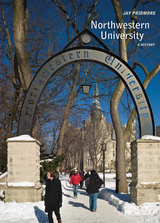 Northwestern University: A History
Jay Pridmore
Northwestern University Press, 2012 Northwestern University: A History is a resplendent guide to the origins and development of this university. Writer and critic Jay Pridmore offers the definitive chronicle of Northwestern’s establishment—from its founders’ struggle to erect a campus in the wilderness on Lake Michigan’s western shore to its contemporary status as “an institution of the highest order” with three thriving campuses, esteemed faculty and students, and a leading endowment.
Accompanied by a wealth of color photographs, ephemera, and archival material, Northwestern University: A History brings to the fore the storied traditions and contributions of the administrators, faculty, and alumni who built Northwestern into the world-class institution it is today.
Originally penned to commemorate the university’s sesquicentennial, this new edition charts Northwestern’s evolution in the years of Henry Bienen’s presidency (1995–2009) and offers a new foreword by current president Morton O. Schapiro. Northwestern University: A History captures the rich panoply of the institution’s rise to the first ranks of scholastic excellence and will delight students, their families, and alumni alike.
|
|
